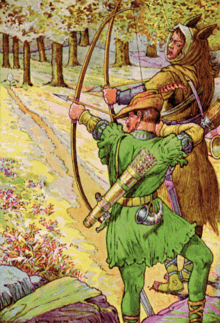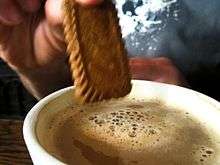Culture of the United Kingdom
| Part of a series on the |
| Culture of the United Kingdom |
|---|
 |
| History |
| People |
| Languages |
|
Mythology and folklore |
| Cuisine |
| Festivals |
| Religion |
| Art |
| Literature |
|
Music and performing arts |
| Sport |
|
Monuments |
|
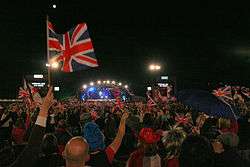

The culture of the United Kingdom is influenced by the UK's history as a developed island country, a liberal democracy and a major power, its predominantly Christian religious life, and its composition of four countries—England, Northern Ireland, Scotland and Wales—each of which has distinct customs, cultures and symbolism. The wider culture of Europe has also influenced British culture, and Humanism, Protestantism and representative democracy developed from broader Western culture.
British literature, music, cinema, art, theatre, comedy, media, television, philosophy, architecture and education are important aspects of British culture. The United Kingdom is also prominent in science and technology, producing world-leading scientists (e.g. Isaac Newton and Charles Darwin) and inventions. Sport is an important part of British culture; numerous sports originated in the country, including football. The UK has been described as a "cultural superpower",[1][2] and London has been described as a world cultural capital.[3][4][5]
The Industrial Revolution, which started in the UK, had a profound effect on the socio-economic and cultural conditions of the world. As a result of the British Empire, significant British influence can be observed in the language, law, culture and institutions of a geographically wide assortment of countries, including Australia, Canada, India, the Republic of Ireland, New Zealand, Nigeria, Pakistan, South Africa, the United States and English speaking Caribbean nations. These states are sometimes collectively known as the Anglosphere, and are among Britain's closest allies.[6][7] In turn the empire also influenced British culture, particularly British cuisine.[8]
The cultures of England, Scotland, Wales and Northern Ireland are diverse and have varying degrees of overlap and distinctiveness.
Language

First spoken in early medieval England, the English language is the de facto official language of the UK, and is spoken monolingually by an estimated 95% of the British population.[9][note 1]
Individual countries within the UK have frameworks for the promotion of their indigenous languages. In Wales, all pupils at state schools must either be taught through the medium of Welsh or study it as an additional language until age 16, and the Welsh Language Act 1993 and the Government of Wales Act 1998 provide that the Welsh and English languages should be treated equally in the public sector, so far as is reasonable and practicable. Irish and Ulster Scots enjoy limited use alongside English in Northern Ireland, mainly in publicly commissioned translations. The Gaelic Language (Scotland) Act, passed by the Scottish Parliament in 2005, recognised Gaelic as an official language of Scotland, commanding equal respect with English, and required the creation of a national plan for Gaelic to provide strategic direction for the development of the Gaelic language.[note 2] There is also a campaign under way to recognise Scots as a language in Scotland, though this remains controversial. The Cornish language enjoys neither official recognition nor promotion by the state in Cornwall.
Under the European Charter for Regional or Minority Languages, the UK Government has committed to the promotion of certain linguistic traditions. The United Kingdom has ratified the charter for: Welsh (in Wales), Scottish Gaelic and Scots (in Scotland), Cornish (in Cornwall), and Irish and Ulster Scots (in Northern Ireland). British Sign Language is also a recognised language.
The Arts
Literature

At its formation, the United Kingdom inherited the literary traditions of England, Scotland and Wales, including the earliest existing native literature written in the Celtic languages, Old English literature and more recent English literature including the works of Geoffrey Chaucer, William Shakespeare and John Milton.

The early 18th century is known as the Augustan Age of English literature. The poetry of the time was highly formal, as exemplified by the works of Alexander Pope, and the English novel became popular, with Daniel Defoe's Robinson Crusoe (1721), Samuel Richardson's Pamela (1740) and Henry Fielding's Tom Jones (1749).
Completed after nine years work, Samuel Johnson's A Dictionary of the English Language was published in 1755, and was viewed as the pre-eminent British dictionary until the completion of the Oxford English Dictionary 150 years later.[12]
From the late 18th century, the Romantic period showed a flowering of poetry comparable with the Renaissance 200 years earlier, and a revival of interest in vernacular literature. In Scotland the poetry of Robert Burns revived interest in Scots literature, and the Weaver Poets of Ulster were influenced by literature from Scotland. In Wales the late 18th century saw the revival of the eisteddfod tradition, inspired by Iolo Morganwg. A Vindication of the Rights of Woman (1792), by Mary Wollstonecraft, is one of the earliest works of feminist philosophy.

Major poets in 19th century English literature included William Blake, William Wordsworth, Samuel Taylor Coleridge, Alfred Lord Tennyson, John Keats, Elizabeth Barrett Browning, Edward Lear (the limerick), Percy Shelley and Lord Byron. The Victorian era was the golden age of the realistic English novel, with Jane Austen, the Brontë sisters (Charlotte, Emily and Anne), Charles Dickens, William Thackeray, George Eliot and Thomas Hardy.
World War I gave rise to British war poets and writers such as Wilfred Owen, Siegfried Sassoon, Robert Graves and Rupert Brooke who wrote (often paradoxically) of their expectations of war, and/or their experiences in the trenches.
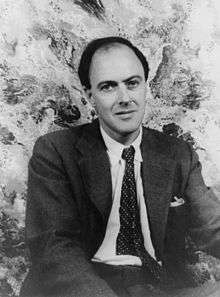
The most widely popular writer of the early years of the 20th century was arguably Rudyard Kipling, the youngest ever recipient of the Nobel Prize for Literature. His novels include The Jungle Book and The Man Who Would Be King'. His poem If— is a national favourite. Like William Ernest Henley's poem Invictus, it is a memorable evocation of Victorian stoicism and a "stiff upper lip".[14]
Notable Irish writers include Oscar Wilde, James Joyce, Bram Stoker, Jonathan Swift, George Bernard Shaw and W. B. Yeats. The Celtic Revival stimulated a new appreciation of traditional Irish literature. The Scottish Renaissance of the early 20th century brought modernism to Scottish literature as well as an interest in new forms in the literatures of Scottish Gaelic and Scots. The English novel developed in the 20th century into much greater variety and it remains today the dominant English literary form.
Other prominent novelists from the UK include George Orwell, C. S. Lewis, H. G. Wells, Robert Louis Stevenson, Arthur Conan Doyle, D. H. Lawrence, Mary Shelley, Lewis Carroll, J. R. R. Tolkien, Virginia Woolf, Ian Fleming, Walter Scott, Agatha Christie, J. M. Barrie, Joseph Conrad, Graham Greene, E. M. Forster, Aldous Huxley, Roald Dahl, Arthur C. Clarke, Daphne du Maurier, Alan Moore, Ian McEwan, Anthony Burgess, Evelyn Waugh, William Golding, Salman Rushdie, Douglas Adams, P. G. Wodehouse, Martin Amis, J. G. Ballard, Beatrix Potter, A. A. Milne, Philip Pullman, Terry Pratchett, H. Rider Haggard, Enid Blyton, Neil Gaiman and J. K. Rowling. Important British poets of the 20th century include Rudyard Kipling, W. H. Auden, Ted Hughes, Philip Larkin, T. S. Eliot, John Betjeman and Dylan Thomas. Created in 1969, the Man Booker Prize is the highest profile British literary award. It is awarded each year in early October for the best original novel, written in English and published in the UK.[15] In 2003 the BBC carried out a UK survey entitled The Big Read in order to find the "nation's best-loved novel" of all time, with works by English novelists J. R. R. Tolkien, Jane Austen, Philip Pullman, Douglas Adams and J. K. Rowling making up the top five on the list.[16] Known for his macabre, darkly comic, fantasy children's books, Roald Dahl is frequently ranked the best children's author in UK polls.[13][17]
Theatre

From its formation in 1707, the United Kingdom has had a vibrant tradition of theatre, much of it inherited from England and Scotland. The West End is the main theatre district in the UK.[19][20] The West End's Theatre Royal in Covent Garden in the City of Westminster dates back to the mid 17th century, making it the oldest London theatre.[21] Opened in 1768, the Theatre Royal at the Bristol Old Vic is the oldest continually-operating theatre in the English speaking world.[18]

In the 18th century, the highbrow and provocative Restoration comedy lost favour, to be replaced by sentimental comedy, domestic tragedy such as George Lillo's The London Merchant (1731), and by an overwhelming interest in Italian opera. Popular entertainment became more important in this period than ever before, with fair-booth burlesque and mixed forms that are the ancestors of the English music hall. These forms flourished at the expense of other forms of English drama, which went into a long period of decline. By the early 19th century it was no longer represented by stage plays at all, but by the closet drama, plays written to be privately read in a "closet" (a small domestic room).

In 1847, a critic using the pseudonym "Dramaticus" published a pamphlet[23] describing the parlous state of British theatre. Production of serious plays was restricted to the patent theatres, and new plays were subject to censorship by the Lord Chamberlain's Office. At the same time, there was a burgeoning theatre sector featuring a diet of low melodrama and musical burlesque; but critics described British theatre as driven by commercialism and a "star" system.[24] A change came in the late 19th century with the plays on the London stage by the Irishmen George Bernard Shaw and Oscar Wilde, who influenced domestic English drama and revitalised it. The Shakespeare Memorial Theatre was opened in Shakespeare's birthplace Stratford upon Avon in 1879; and Herbert Beerbohm Tree founded an Academy of Dramatic Art at Her Majesty's Theatre in 1904.[25]
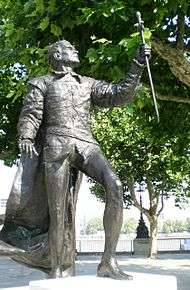
Producer Richard D'Oyly Carte brought together librettist W. S. Gilbert and composer Arthur Sullivan, nurtured their collaboration, and had their first success with Trial by Jury. Among Gilbert and Sullivan's best known comic operas are H.M.S. Pinafore, The Pirates of Penzance and The Mikado.[26] Carte built the West End's Savoy Theatre in 1881 to present their joint works, and through the inventor of electric light Sir Joseph Swan, the Savoy was the first theatre, and the first public building in the world, to be lit entirely by electricity.[27][28] In 1895, Lyceum Theatre stage actor Henry Irving became the first actor to be awarded a knighthood.[29] The performing arts theatre Sadler's Wells, under Lilian Baylis, nurtured talent that led to the development of an opera company, which became the English National Opera (ENO); a theatre company, which evolved into the National Theatre; and a ballet company, which eventually became the English Royal Ballet.[30]
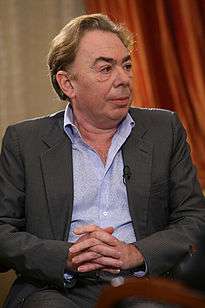
Making his professional West End debut at the Garrick Theatre in 1911, flamboyant playwright, composer and actor Noël Coward had a career spanning over 50 years, in which he wrote many comic plays, and over a dozen musical theatre works.[32] Laurence Olivier, Ralph Richardson and John Gielgud dominated British theatre of the mid-20th century. The National Theatre's largest auditorium is named after Olivier, and he is commemorated in the Laurence Olivier Awards, given annually by the Society of London Theatre. Lionel Bart's 1960 musical Oliver! (based on Charles Dickens novel) contains the songs "Food, Glorious Food", "Consider Yourself" and "You've Got to Pick a Pocket or Two". Oliver! has received thousands of performances in British schools since. In July 1962, a board was set up to supervise construction of a National Theatre in London, and a separate board was constituted to run a National Theatre Company and lease the Old Vic theatre. The Company remained at the Old Vic until 1976, when the new South Bank building was opened. A National Theatre of Scotland was set up in 2006. Today the West End of London has many theatres, particularly centred on Shaftesbury Avenue.

A prolific composer of musical theatre in the 20th century, Andrew Lloyd Webber has been referred to as "the most commercially successful composer in history".[31] His musicals, which include The Phantom of the Opera, Cats, Jesus Christ Superstar and Evita, have dominated the West End for a number of years and have travelled around the world as well as being turned into films. Lloyd Webber has worked with producer Cameron Mackintosh, lyricist Tim Rice, actor Michael Crawford, actress and singer Sarah Brightman, while his musicals originally starred Elaine Paige, who with continued success has become known as the First Lady of British Musical Theatre.[33]
First performed in 1952, Agatha Christie's The Mousetrap has seen more than 25,000 performances in the West End, and is the longest-running West End show.[34] The Woman in Black is the second longest running stage play. Written by Catherine Johnson, Mamma Mia! is the West End's longest running jukebox musical. Richard O'Brien's 1973 West End musical The Rocky Horror Show has been ranked among the "Nation's Number One Essential Musicals".[35] Peter Shaffer's play Amadeus premiered at the National Theatre in 1979. Elton John composed the music for The Lion King (lyrics by Rice) and Billy Elliot the Musical, with both running for over a decade on the West End. Eric Idle's Monty Python's Spamalot made its West End debut in 2006. Matilda the Musical (an adaptation of Roald Dahl's children's book) won seven 2012 Olivier Awards —the most by a single show.[36]
The Royal Shakespeare Company operates out of Stratford-upon-Avon, producing mainly but not exclusively Shakespeare's plays.[37] Important modern playwrights include Nobel laureate Harold Pinter, Tom Stoppard, Alan Ayckbourn, John Osborne, Michael Frayn and Arnold Wesker.[38][39]
Music
Patriotic songs

While the British national anthem "God Save the Queen" and other patriotic songs such as "Rule, Britannia!" represent the United Kingdom, each of the four individual countries of the UK also have their own patriotic hymns. Edward Elgar's "Land of Hope and Glory", and William Blake's poem And did those feet in ancient time set to Hubert Parry's "Jerusalem", are among England's most patriotic hymns.[40] Scottish patriotic songs include "Flower of Scotland", "Scotland the Brave", "Scots Wha Hae" and "Highland Cathedral"; patriotic Welsh hymns include "Guide me, O Thou Great Redeemer" by William Williams Pantycelyn, and "Land of My Fathers"; the latter is the national anthem of Wales.[41] The patriotic Northern Irish ballad Danny Boy is set to the tune "Londonderry Air".
The traditional marching song "The British Grenadiers" is often performed by British Army bands, and is played at the Trooping the Colour.[42] Written by British Army bandmaster F. J. Ricketts, the "Colonel Bogey March" is often whistled, becoming part of British way of life during World War II.[43] George Frideric Handel composed Zadok the Priest in 1727 for the coronation of George II: it has been performed during the Sovereign's anointing at every subsequent British coronation. Jeremiah Clarke's "Trumpet Voluntary" is popular for wedding music, and has featured in royal weddings.[44]
Composers
Other notable British composers, including Henry Purcell, Ralph Vaughan Williams, Benjamin Britten, Gustav Holst, William Byrd, Thomas Tallis, Henry Wood, John Taverner, Arthur Sullivan, Samuel Coleridge-Taylor, William Walton, Richard Rodney Bennett, Peter Maxwell Davies, Ivor Novello, Malcolm Arnold, Michael Tippett, Sir George Martin and John Barry, have made major contributions to British music. Living composers include John Rutter, Andrew Lloyd Webber, Oliver Knussen, Mike Oldfield, James MacMillan, Thomas Ades, Harrison Birtwistle, Joby Talbot, John Powell, David Arnold, Anne Dudley, John Murphy, Henry Jackman, Leslie Bricusse, Brian Eno (pioneer of "ambient music" which emerged in the early 1970s in the UK), Clint Mansell, Harry Gregson Williams, Craig Armstrong and Michael Nyman.
 |
Thomas Tallis' "Lamentations I"
Handel's "Organ Concerto Op. 7 No. 1 HWV 306 III"
"Hen Wlad Fy Nhadau (Land of My Fathers)"
Elgar's "Pomp & Circumstance March No. 1"
"Scottish Celtic duet"
|
| Problems playing these files? See media help. | |
Folk music
The traditional folk music of England has contributed to several genres, such as sea shanties, jigs, hornpipes and dance music. It has its own distinct variations and regional peculiarities. Wynkyn de Worde's printed ballads of Robin Hood from the 16th century are an important artefact, as are John Playford's The Dancing Master and Robert Harley's Roxburghe Ballads collections.[45] Some of the best known songs are Greensleeves, Scarborough Fair and Over the Hills and Far Away. The bagpipes have long been a national symbol of Scotland, and the Great Highland Bagpipe is widely recognised. Scottish folk songs include The Bonnie Banks o' Loch Lomond, Will Ye Go, Lassie, Go? while Auld Lang Syne is sung throughout the English-speaking world to celebrate the start of the New Year, especially in Scotland.[46]
Nursery rhymes
In the mid-16th century nursery rhymes begin to be recorded in English plays, and the most popular date from the 17th and 18th centuries.[47] The first English collections, Tommy Thumb's Song Book and a sequel, Tommy Thumb's Pretty Song Book, were published before 1744.[48] John Newbery's compilation of English rhymes, Mother Goose's Melody, or, Sonnets for the Cradle (London, c. 1765), is the first record we have of many classic rhymes, still in use today.[49] The 19th century historian James Orchard Halliwell was a notable collector of English nursery rhymes.[50]
Some of the best known nursery rhymes from Britain are Twinkle Twinkle Little Star, Roses Are Red, Jack and Jill, Cock a doodle doo, Baa, Baa, Black Sheep, The Grand Old Duke of York, London Bridge Is Falling Down, Hey Diddle Diddle, Three Blind Mice, Little Miss Muffet, Pat-a-cake, Pop Goes the Weasel, The Queen of Hearts, Polly Put the Kettle On, Peter Piper, One, Two, Buckle My Shoe, Hickory Dickory Dock, One for Sorrow, This Old Man, Simple Simon, Old Mother Hubbard, Little Bo Peep, Sing a Song of Sixpence, Mary, Mary, Quite Contrary, Old King Cole and Humpty Dumpty.[51] Many of these rhymes are based on historic figures throughout British history, for example Pussy Cat Pussy Cat (from 1805) is about going to see the Queen. The 1730 nursery rhyme As I was going to St Ives (southern English town) is in the form of a riddle.[52]
Christmas carols

Christmas carols in English first appear in a 1426 work by John Awdlay, a Shropshire chaplain who lists 25 "caroles of Cristemas", probably sung by groups of 'wassailers', who went from house to house.[53] Some of the most notable carols from the UK are "We Wish You a Merry Christmas", '"O Come All Ye Faithful", "The First Noel", "God Rest You Merry, Gentlemen", "The Holly and the Ivy", "I Saw Three Ships", "Deck the Halls", "In the Bleak Midwinter", "Joy to the World", "Once in Royal David's City", "Hark! The Herald Angels Sing", "What Child Is This?", "Good King Wenceslas", "Here We Come A-Caroling" and "While Shepherds Watched Their Flocks".[54]
The music of Christmas has always been a combination of sacred and secular, and every year in the UK there is highly publicised competition to be the Christmas number one single, which has led to the production of music which still provides the mainstay of festive playlists. Responding to a BBC report on the 1984 famine in Ethiopia, Bob Geldof created the charity supergroup Band Aid who recorded "Do They Know It's Christmas?". It has been Christmas number one three times.[55]
RMS Titanic music

Written by Sarah Flower Adams in 1841, the Christian hymn "Nearer, My God, to Thee" is associated with the sinking of the RMS Titanic, as some survivors later reported that the ship's string ensemble played the hymn as the vessel sank. The hymn was a favourite of Wallace Hartley, the ship's band leader who led the eight member band before going down with the ship, and subsequently it was played at his funeral.[56] Hartley's violin was recovered from the sinking, and sold at auction on 19 October 2013 for £900,000.[57]
Classical music
The United Kingdom supports a number of major orchestras including the BBC Symphony Orchestra, the Royal Philharmonic Orchestra, the Philharmonia, the London Symphony Orchestra and the London Philharmonic Orchestra. The BBC Philharmonic's recent work includes recording "First Steps", the BBC theme for the 2012 London Olympics. London is one of the world's major centres for classical music: it has several important concert halls and is also home to the Royal Opera House, one of the world's leading opera houses. British traditional music has also been very influential abroad.
Popular music
During World War II, Vera Lynn was known as the Forces' Sweetheart, with "We'll Meet Again", sung to British troops, among the songs most associated with her.[58] In addition to "Colonel Bogey March" (which was whistled), another popular British song during the war, "Run Rabbit Run", contained Ralph Butler's lyrics "Run rabbit – run rabbit – Run! Run! Run!", which were altered by the public to poke fun at the Axis. Butler also wrote "The Sun Has Got His Hat On" and "Nellie the Elephant". The UK single and album charts are revealed every Friday on BBC Radio 1, with Elton John's "Candle in the Wind 1997" the best-selling single in the UK, and Queen's Greatest Hits the best-selling album.[59][60]
The Brit Awards, the BPI's annual pop music awards, take place at The O2 Arena in London every February.[65] The Ivor Novello Awards for songwriting and composing are presented annually by the British Academy of Songwriters, Composers and Authors.[66] Large outdoor music festivals and concerts in the summer are popular, such as Glastonbury, V Festival, Summertime Ball, T in the Park, Download Festival and the Reading and Leeds Festivals.
The UK was one of the two main countries in the creation and development of many genres of popular music, including: rock music: The Beatles, The Rolling Stones, The Who, The Kinks; hard rock: Led Zeppelin, Cream, Def Leppard, Whitesnake; progressive rock: Pink Floyd, Genesis, Yes; glam rock: David Bowie, Queen, Elton John, T. Rex, blues rock: The Yardbirds, The Animals, Eric Clapton, Dire Straits; heavy metal: Black Sabbath, Deep Purple, Iron Maiden, Motörhead, Judas Priest; punk rock: Sex Pistols, The Clash, Billy Idol; new wave: The Police, Elvis Costello, Culture Club, Duran Duran; goth rock: The Cure, Siouxsie and the Banshees; art rock: The Moody Blues, Emerson, Lake and Palmer, Procol Harum, Peter Gabriel, Kate Bush; folk rock: Van Morrison, Cat Stevens, Donovan, Mumford & Sons; soft rock: The Hollies, blue-eyed soul: Dusty Springfield, Tom Jones, Steve Winwood; disco: Bee Gees; synth pop: Depeche Mode, Eurythmics, Pet Shop Boys; reggae: UB40; pop rock: Rod Stewart, Phil Collins, Sting, Joe Cocker, Robert Palmer, Bonnie Tyler, Tears for Fears, Simple Minds; alternative rock; The Smiths, New Order, Stone Roses, Radiohead, Bush, Coldplay; symphonic rock: ELO, Muse; Britpop: Oasis, Blur, Pulp, The Verve; soul; Sade, Amy Winehouse, Adele.
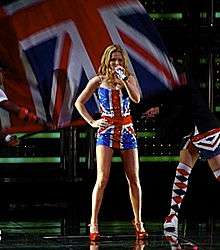
The UK has also pioneered various forms of electronic dance music including dubstep, acid house, uk garage, drum and bass and trip hop, with acts including: The Prodigy, Massive Attack, Jamiroquai, The Chemical Brothers, Gorillaz, Calvin Harris and Fatboy Slim. Other notable British artists in pop music include: Spice Girls, George Michael, Seal, Leona Lewis, One Direction, Sam Smith, Ellie Goulding, Mark Ronson, Ed Sheeran, and Robbie Williams. In a 2005 poll, Williams' song "Angels" was ranked the most popular song that Britons would most like played at their funeral.[67] At the 1997 Brit Awards, Spice Girls singer Geri Halliwell wore the now iconic red, white and blue Union Jack mini-dress, which has become an enduring image of the 1990s Cool Britannia era.[68]
In 2009, British artists topped the decade end ranking, with "Chasing Cars" by Snow Patrol announced as the most widely played song of the decade in the UK, and Back to Bedlam by James Blunt the best selling album of the 2000s in the UK.[69][70] Other successful UK acts include Dido, Arctic Monkeys, Mika and Bullet for My Valentine. Since the mid 2000s, British rap is becoming increasingly popular, mainly within the youth of large cities such as London, Manchester, Birmingham, Nottingham, Leeds and Sheffield. Popular British R&B artists include Taio Cruz, Jay Sean, M.I.A., Rita Ora and Jessie J
Cinema
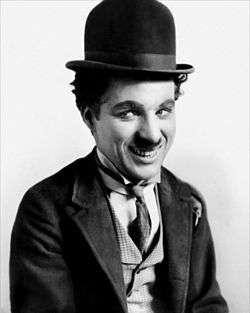
The UK has had a large impact on modern cinema, producing some of the greatest actors, directors and motion pictures, including, Sir Alfred Hitchcock, Charlie Chaplin, David Lean, Laurence Olivier, Vivien Leigh, Audrey Hepburn, John Gielgud, Sean Connery, Richard Burton, Vanessa Redgrave, Michael Caine, Anthony Hopkins and Daniel Day-Lewis. The BFI Top 100 British films is a poll conducted by the British Film Institute which ranks what they consider to be the 100 greatest British films of all time. Two of the biggest actors in the silent era were Charlie Chaplin and Stan Laurel.
The UK was the location of the oldest surviving motion picture film, Roundhay Garden Scene (1888), which was shot in Roundhay, Leeds in the north of England by French inventor Louis Le Prince.[72] The world's first colour motion picture was shot by Edward Raymond Turner in 1902.[73] Eadweard Muybridge was another notable English pioneer of motion picture,[74] while pioneering Scottish documentary maker John Grierson coined the term "documentary" to describe a non-fiction film in 1926.[75]
Hitchcock's first thriller, The Lodger: A Story of the London Fog (1926), helped shape the thriller genre in film, while his 1929 film, Blackmail, is often regarded as the first British sound feature film.[76][77] The 39 Steps (1935) features a signature Hitchcock cameo, and established the quintessential English 'Hitchcock blonde' Madeleine Carroll as the template for his succession of ice cold and elegant leading ladies.[78] Alexander Korda's The Private Life of Henry VIII (1933), was the first British production to be nominated for the Academy Award for Best Picture. Boris Karloff played the leading role in major horror films in the 1930s. Famous for their motion picture film scores, the London Symphony Orchestra first performed film music in 1935.[79]
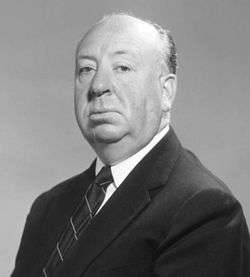
The first British Academy Film Awards (BAFTA) ceremony took place in 1947. Sir Laurence Olivier starred in and directed Henry V (1944), and Hamlet (1948), the latter picked up the BAFTA Award for Best Film and also became the first British film to win the Academy Award for Best Picture. The third Shakespearean film directed by Olivier was Richard III (1955). The British film-making partnership of Powell and Pressburger made a series of influential films in the 1940s and 1950s, with The Red Shoes (1948) their most commercially successful film. Carol Reed directed The Third Man (1949), regarded among the best British films of the 20th century.[82]
David Lean emerged as a major filmmaker in the 1940s with Brief Encounter (1945) and Great Expectations (1946), with his first big-screen epic The Bridge on the River Kwai (1957): these are ranked among the best British films. Towards the end of the 1950s, Hammer Films embarked on their series of influential and wildly successful horror films, including lavish colour versions of Frankenstein (1957), Dracula (1958) and The Mummy (1959), with actors Peter Cushing and Christopher Lee at the forefront. The Dam Busters (1955), recreates the true story of the RAF's raid on dams in Nazi Germany using Sir Barnes Wallis's invention the "bouncing bomb". The Carry On series, which consists of 31 comedy motion pictures, commenced in 1958. A West Country native where many well-known English pirates hailed from, Robert Newton's portrayal of Long John Silver in 1950s films popularised the stereotypical West Country pirate accent.[83] Films that explored the "Swinging London" phenomenon of the 1960s included, Alfie (1966), Blowup (1966) and Bedazzled (1967). The James Bond film series began in the early 1960s, with Sean Connery in the leading role. Bond, portrayed by Connery, was selected as the third-greatest hero in cinema history by the AFI.[84] After The Beatles films A Hard Day's Night (1964) and Help! (1965), it became standard for each new pop group to have a verité style feature film made about them. Michael Powell's hugely controversial thriller/horror film Peeping Tom was released in 1960, which is today considered a classic.[85][86] The Ipcress File (1965) features Harry Palmer, a British Army sergeant with a criminal past now working for a Ministry of Defence (MoD). A Man for All Seasons (1966), based on Sir Thomas More, is listed by the Vatican as being among the greatest religious movies of all time.[87]
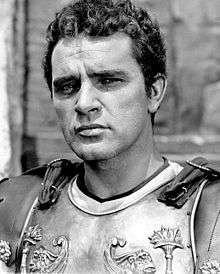
Other major British films of the 1960s included Lawrence of Arabia (1962), Tom Jones (1963), Zulu (1964) and Those Magnificent Men in Their Flying Machines (1965). Four of the decade's Academy Award winners for best picture were British productions, including six Oscars for the film musical Oliver! (1968), based on Charles Dickens' classic Oliver Twist. The caper film The Italian Job (1969), starring Michael Caine, is regarded as one of the greatest British films ever, with the line "You were only supposed to blow the bloody doors off!" by Caine voted favourite film one-liner in a poll.[88] Other British actors in starring roles in 1960s films included Richard Burton, Peter Sellers, Audrey Hepburn (played Cockney flower girl Eliza Doolittle in My Fair Lady, 1964), Julie Christie, Peter Ustinov, Rex Harrison, Alec Guinness, David Niven and Julie Andrews, whose portrayal of English nanny Mary Poppins is named one of the greatest movie characters.[89] Ken Russell's Women in Love (1969) starred Glenda Jackson, who won the Academy Award for best actress.

In the 1970s, Ronald Neame directed the festive favourite Scrooge (1970). A Clockwork Orange (1971), based on Anthony Burgess' novella of the same name, starred Malcolm McDowell as the leader of a gang of thugs in a dystopian future Britain.[90] Get Carter (1971) features the eponymous London gangster Jack Carter (played by Michael Caine). The horror film The Wicker Man (1973), starring Christopher Lee, is considered a cult classic. Two adaptations of Agatha Christie stories Murder on the Orient Express (1974) and Death on the Nile (1978) were critically acclaimed. The musical comedy film The Rocky Horror Picture Show (1975) featuring Tim Curry, is the longest-running theatrical release in film history.[91] Starring as James Bond in Live and Let Die (1973), Roger Moore would go on to play 007 seven times.[92] In the mid-1970s, seminal British comedy team Monty Python switched their attention to films, beginning with Monty Python and the Holy Grail (1975), followed by Monty Python's Life of Brian (1979), the latter regularly voted the funniest film of all time by the British public.[93][94] A notable song from Life of Brian, "Always Look on the Bright Side of Life" has become a common singalong at public events.[95] Hollywood blockbusters that were filmed at major British studios in 1977–79, include Star Wars (featuring Alec Guinness, and 'the dean of special effects' John Stears)[96] at Elstree Studios, Superman (featuring Terence Stamp) at Pinewood, and Alien (directed by Ridley Scott) at Shepperton.
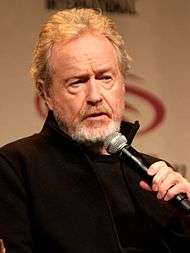
British films won back to back Academy Award for best picture in the 1980s, with Chariots of Fire (1981), followed by Gandhi (1982). John Hurt won the BAFTA Award for Best Actor for his titular role as 19th-century Englishman Joseph Merrick in The Elephant Man (1980). In the 1980s, a wave of visually stylish directors, Ridley Scott, Alan Parker, Tony Scott, Hugh Hudson and Adrian Lyne, were credited for "ushering in a new era of blockbusters using the crowd-pleasing skills they'd honed in advertising."[97] The 1983 drama/comedy film Educating Rita features Julie Walters and Michael Caine. The 1985 dark comedy fantasy film, Brazil, is regarded as one of the best British films of the mid 1980s, while the 1987 black comedy, Withnail and I, has been described as "one of Britain's biggest cult films".[98] Gary Oldman portrayed British punk icon Sid Vicious in the cult film Sid and Nancy (1986). In 1988 Charles Crichton directed A Fish Called Wanda, the most acclaimed British comedy of the era. During the late 1980s, a number of young British actors who were becoming major stars, such as Gary Oldman, Daniel Day-Lewis, Colin Firth, Tim Roth and Rupert Everett, were dubbed the 'Brit Pack'.[99]

The 1990s saw a large number of traditional British period dramas, including Sense and Sensibility (1995), Restoration (1995), Emma (1996), Mrs. Brown (1997), The Wings of the Dove (1997), Shakespeare in Love (1998) and Topsy-Turvy (1999). Set in pre and post war Britain, The Remains of the Day (1993), starring Anthony Hopkins and Emma Thompson, was based on the novel by Kazuo Ishiguro. Thompson (as English lawyer Gareth Peirce) starred In the Name of the Father alongside Daniel Day-Lewis the same year. Anthony Minghella's biggest directorial success was The English Patient (1996), winning nine Academy Awards. The Scottish composer Craig Armstrong wrote the award winning score for the modern version of Shakespeare's Romeo + Juliet (1996). BAFTA Award winning British films included Danny Boyle's drama Trainspotting (1996) that centres on life in Edinburgh, the 1997 comedy The Full Monty set in Sheffield, and the biographical drama Elizabeth (1998). Richard Curtis's 1994 film Four Weddings and a Funeral set a pattern for British-set romantic comedies, including Sliding Doors (1998) and Notting Hill (1999). Guy Ritchie achieved success with the crime comedy films Lock, Stock and Two Smoking Barrels (1998) and Snatch (2000), both set in the London criminal underworld. British visual effects company The Mill produced the computer-generated imagery effects for Ridley Scott's Gladiator (2000), and the film was dedicated to Oliver Reed who died during filming: The Mill created a digital body double for Reed's remaining scenes.[100]
.jpg)
At the start of the 21st century, three major international British successes were the romantic comedies Bridget Jones's Diary (2001), sequel Bridget Jones: The Edge of Reason (2004), and Richard Curtis's directorial debut Love Actually (2003). In 2000, Leavesden Film Studios began filming the first instalment of the Harry Potter film series.[102] Set in north-east England, Billy Elliot (2000) deals with a boy becoming a ballet dancer. English composer Clint Mansell's score for Requiem for a Dream has been well received,[103] and its main theme Lux Aeterna has gained wide usage in popular culture and has featured in a number of film trailers. Written by Julian Fellowes, Gosford Park (2001) is set in an English country house. The British Indian themed sports comedy drama Bend It Like Beckham (2002) featured starring roles for Keira Knightley and Parminder Nagra. Famous for his creation Mr. Bean, the much celebrated comedian Rowan Atkinson starred in Johnny English (2003). Wallace and Gromit creator and four time Academy Award winning animator Nick Park directed Chicken Run (2000) and Wallace & Gromit: The Curse of the Were-Rabbit (2005). They are the two highest-grossing stop motion animated films ever made.[104]
.jpg)
Helen Mirren starred as Elizabeth II in The Queen (2006), winning Academy and BAFTA Awards for best actress. Acclaimed British sci-fi films, 28 Days Later (2002), and Children of Men (2007), depict a dystopian Britain. Joe Wright's Atonement (2007) is set in England through WWII. Simon Pegg co-wrote and starred in the Three Flavours Cornetto trilogy of films: Shaun of the Dead (2004), Hot Fuzz (2007), and The World's End (2013), which were directed by Edgar Wright. Danny Boyle's Slumdog Millionaire (2008) was the most successful British film of the decade, receiving critical acclaim and won eight Academy Awards.[105] Based on Mark Millar's comic, the superhero action comedy-film Kick-Ass (2010), directed by Matthew Vaughn and starring Aaron Taylor-Johnson as the title character, won the Empire Award for Best British Film. Historical drama The King's Speech (2010), featuring Colin Firth as George VI, received widespread acclaim.[106]
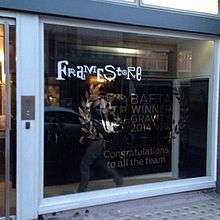
Acclaimed for his motion capture work, in 2011 actor Andy Serkis opened his own motion capture workshop, The Imaginarium Studios in London.[107] In 2012, the twenty-third James Bond film Skyfall became the highest-grossing film of all-time in the UK.[108] In 2013, British visual effects company Framestore, under chief supervisor Tim Webber and film producer David Heyman, produced the critically acclaimed space epic Gravity.[109] In 2014, the film biopics on two British scientists (Hawking and Turing), The Theory of Everything and The Imitation Game, both achieved critical and commercial success.[110]

The five most commercially successful British directors in recent years are David Yates, Christopher Nolan, Mike Newell, Ridley Scott and Paul Greengrass.[111] Visual effects supervisor Paul Franklin is known for his long-running working relationship with Nolan.[112] Other contemporary British film directors include Guy Ritchie, Alan Parker, Tony Scott, Terry Gilliam, Kenneth Branagh, Paul W. S. Anderson, Tom Hooper, Edgar Wright, Matthew Vaughn, Richard Curtis, Danny Boyle, Mike Leigh, Gareth Edwards, Steve McQueen and Sam Mendes.
British actors and actresses have always been significant in international cinema. Well-known currently active performers include Tom Hardy, Jason Statham, Jude Law, Kate Winslet, Ewan McGregor, Catherine Zeta-Jones, Ian McKellen, Clive Owen, Hugh Grant, Colin Firth, Daniel Radcliffe, Daniel Craig, Emma Watson, Keira Knightley, Ralph Fiennes, Orlando Bloom, Christian Bale, Idris Elba, Sacha Baron Cohen, Emma Thompson, Kate Beckinsale, Michael Sheen, Helena Bonham Carter, Hugh Laurie, Ben Kingsley, Mark Rylance, John Hurt, Daisy Ridley, Benedict Cumberbatch, Carey Mulligan, Jeremy Irons, Gary Oldman, Helen Mirren, Robert Pattinson, Sean Bean, Gerard Butler, Tom Hiddleston, Maggie Smith, John Boyega, Andrew Garfield, Henry Cavill, Eddie Redmayne, Chiwetel Ejiofor, Patrick Stewart, Emilia Clarke, Daniel Day-Lewis, Judi Dench, Anthony Hopkins and Michael Caine.

Hollywood films with a British dimension have had enormous worldwide commercial success. Many of the highest-grossing films worldwide of all time have a British historical, cultural or creative theme. Films based on British historical events; RMS Titanic,[113] Piracy in the Caribbean,[114] Mutiny on the Bounty,[115] The Great Escape,[116] historical people; William Wallace, Lawrence of Arabia, King Arthur, Elizabeth I, British stories; The Lord of the Rings, Harry Potter, James Bond, The Chronicles of Narnia, Sherlock Holmes, Frankenstein, A Christmas Carol, Charlie and the Chocolate Factory, Treasure Island, The War of the Worlds among many others, while British video game Tomb Raider featuring English archaeologist Lara Croft, has been made into feature films. British influence can also be seen with the 'English Cycle' of Disney animated films, which feature Alice in Wonderland, Peter Pan, Robin Hood, The Jungle Book, The Hundred and One Dalmatians, The Sword in the Stone, The Rescuers and Winnie the Pooh.[117]
Broadcasting
The UK has been at the forefront of developments in film, radio and television. Broadcasting in the UK has historically been dominated by the taxpayer-funded but independently run British Broadcasting Corporation (commonly known as the BBC), although other independent radio and television (ITV, Channel 4, Five) and satellite broadcasters (especially BSkyB which has over 10 million subscribers[118]) have become more important in recent years. BBC television, and the other three main television channels are public service broadcasters who, as part of their license allowing them to operate, broadcast a variety of minority interest programming. The BBC and Channel 4 are state-owned, though they operate independently.
Many successful British TV shows have been exported around the world, such as Pop Idol (created by Simon Fuller), Who Wants to Be a Millionaire?, Britain's Got Talent (created by Simon Cowell), The X Factor, Hell's Kitchen (created by Gordon Ramsay), The Office (created by Ricky Gervais and Stephen Merchant), Strictly Come Dancing, House of Cards, Who Do You Think You Are? (genealogy series where a celebrity traces their family tree), Black Mirror (created by Charlie Brooker), Sherlock, Doctor Who, Downton Abbey and Top Gear. David Attenborough's acclaimed nature documentaries, including The Blue Planet, Planet Earth and Life on Earth, are produced by the BBC Natural History Unit, the largest wildlife documentary production house in the world.[119] The British Film Institute drew up a list of the 100 Greatest British Television Programmes in 2000, voted by industry professionals.[120] In 2004 the BBC conducted a poll to find "Britain's Best Sitcom".[121] The British public voted for TV's 50 Greatest Stars in 2006.[122] Popular UK sitcoms from each of the last four decades of the 20th century include, Dad's Army (created by Jimmy Perry), Fawlty Towers (created by John Cleese), Only Fools and Horses (created by John Sullivan), and Absolutely Fabulous (created by and starring Jennifer Saunders and Dawn French).
Launched in 1955, ITV is the oldest commercial television network in the UK.[123] Ridley Scott's evocative 1973 Hovis bread television commercial captured the public imagination.[124] Filmed on Gold Hill, Shaftesbury in Dorset, Scott's advert was voted the UK's favourite television advertisement of all time in 2006.[125] Other notable British commercials include the 2007 Gorilla advertisement by Cadbury, featuring a gorilla playing drums with Phil Collins' track "In the Air Tonight" playing in the background, and a 2013 advert for Galaxy chocolate bar featuring a computer-generated image of Audrey Hepburn.[126][127] Christmas commercials are screened from early November in the UK, with notable campaigns including the John Lewis Christmas advert.[128]
.jpg)
International football tournaments, such as the World Cup, are historically the most viewed sports events among the public, while Match of the Day is the most popular weekly football show.[129] The 1966 FIFA World Cup Final and the Funeral of Princess Diana are the two most watched television events ever in the UK.[130] Satire has been a prominent feature in British comedy for centuries. The British satire boom of the 1960s, which consisted of writers and performers such as Peter Cook, Dudley Moore, Alan Bennett, David Frost and Jonathan Miller, has heavily influenced British television, including the sketch comedy series Monty Python's Flying Circus created in 1969 by Monty Python. Regarded as the leading figure of the satire boom, Peter Cook was ranked number one in the Comedians' Comedian poll.[131] The puppet show Spitting Image was a satire of the royal family, politics, entertainment, sport and UK culture of the 1980s and 1990s.[132]

Have I Got News for You and Mock the Week are the two longest running satirical panel shows. Satire also features heavily in the Grand Theft Auto video game series which has been ranked among Britain's most successful exports.[133] The slapstick and double entendre of Benny Hill also achieved very high ratings on UK television, as did the physical humour of Mr. Bean.[134] Animator Nick Park created the Wallace and Gromit characters at Aardman Animations studio in Bristol. They feature in A Grand Day Out (1989), The Wrong Trousers (1993) and A Close Shave (1995), which all have 100% positive ratings on the aggregation site Rotten Tomatoes, while A Matter of Loaf and Death was the most watched television programme in the UK in 2008.[135] Popular pre-school shows include Teletubbies, Thomas the Tank Engine and Bob the Builder. First airing in 1958, Blue Peter is famous for its arts and crafts "makes". The show has been a staple for generations of British children.
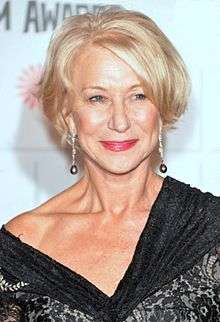
Debuting in 1982, The Snowman (featuring the festive song "Walking in the Air") is annually screened at Christmas. Shown on the BBC, the UK holds two high-profile charity telethon events, Children in Need, held annually in November, and Comic Relief, which alternates with Sports Relief, every March.[136] British programmes dominate the list of TV's most watched shows in the UK, with the kitchen sink dramas, ITV's Coronation Street and BBC's EastEnders, both frequently ranking high on the ratings list complied by BARB.[130]
The United Kingdom has a large number of national and local radio stations which cover a great variety of programming. The most listened to stations are the five main national BBC radio stations. BBC Radio 1, a new music station aimed at the 16–24 age group. BBC Radio 2, a varied popular music and chat station aimed at adults is consistently highest in the ratings. BBC Radio 4, a varied talk station, is noted for its news, current affairs, drama and comedy output as well as The Archers, its long running soap opera, and other unique programmes, including Desert Island Discs (1942–present), an interview programme in which a famous guest (called a "castaway") chooses eight pieces of music, a book and a luxury item that they would take with them to a desert island. Currently presented by Kirsty Young, it is the longest running music radio programme in British history.[137]
The long running radio comedy Just a Minute was first aired on BBC Radio 4 in 1967. Panellists must talk for sixty seconds on a given subject, "without hesitation, repetition or deviation". Guests over the years have included Stephen Fry, Eddie Izzard and Sue Perkins. First broadcast on BBC Radio 4 in 1978, the science fiction comedy radio series The Hitchhiker's Guide to the Galaxy was innovative in its use of music and sound effects.[138] The BBC, as a public service broadcaster, also runs minority stations such as BBC Asian Network, BBC Radio 1Xtra and BBC Radio 6 Music, and local stations throughout the country. Rock music station Absolute Radio, and sports station Talksport, are among the biggest commercial radio stations in the UK.[139]

Popular British daily national newspapers include: The Times, The Guardian, Daily Mail, The Daily Telegraph, Daily Mirror, Daily Express. Founded by publisher John Walter in 1785, The Times is the first newspaper to have borne that name, lending it to numerous other papers around the world, and is the originator of the widely used Times Roman typeface, created by Victor Lardent and commissioned by Stanley Morison in 1931.[140] The weekly newspaper The Economist was founded by James Wilson in 1843, and the daily Financial Times was founded in 1888.[141] Founding The Gentleman's Magazine in 1731, Edward Cave coined the term "magazine" for a periodical, and was the first publisher to successfully fashion a wide-ranging publication.[142] Founded by Thomas Gibson Bowles, Vanity Fair featured caricatures of famous people for which it is best known today.[143]
A pioneer of children's publishing, John Newbery made children's literature a sustainable and profitable part of the literary market.[144] The History of Little Goody Two-Shoes was published by Newbery in 1765.[144] Founded by Sir Allen Lane in 1935, Penguin Books revolutionised publishing in the 1930s through its inexpensive paperbacks, bringing high-quality paperback fiction and non-fiction to the mass market.[145] Formed four years later, Puffin Books is the children's imprint of Penguin Books: Barbara Euphan Todd's 1936 story about the scarecrow Worzel Gummidge was the first Puffin story book in 1941.[146]
The Guinness Book of Records was the brainchild of Sir Hugh Beaver.[147] On 10 November 1951 he became involved in an argument over which was the fastest game bird in Europe, and realised that it was impossible to confirm in reference books.[148] Beaver knew that there must be numerous other questions debated throughout the world, but there was no book in the world with which to settle arguments about records. He realised that a book supplying the answers to this sort of question may prove successful.[149] His idea became reality when an acquaintance of his recommended University friends Norris and Ross McWhirter who were then commissioned to compile what became The Guinness Book of Records in August 1954.[150]
Copyright laws originated in Britain with the Statute of Anne (also known as the Copyright Act 1709), which outlined the individual rights of the artist. A right to benefit financially from the work is articulated, and court rulings and legislation have recognised a right to control the work, such as ensuring that the integrity of it is preserved.[151] The Statute of Anne gave the publishers rights for a fixed period, after which the copyright expired.[152]
Visual arts
.jpg)

From the creation of the United Kingdom, the English school of painting is mainly notable for portraits and landscapes, and indeed portraits in landscapes. Among the artists of this period are Joshua Reynolds (1723–1792), George Stubbs (1724–1806), and Thomas Gainsborough (1727–1788).
Pictorial satirist William Hogarth pioneered Western sequential art, and political illustrations in this style are often referred to as "Hogarthian".[154] Following the work of Hogarth, political cartoons developed in England in the latter part of the 18th century under the direction of James Gillray. Regarded as being one of the two most influential cartoonists (the other being Hogarth), Gillray has been referred to as the father of the political cartoon, with his satirical work calling the king (George III), prime ministers and generals to account.[155]
The late 18th century and the early 19th century was perhaps the most radical period in British art, producing William Blake (1757–1827), John Constable (1776–1837) and J. M. W. Turner (1775–1851), three of the most influential British artists, each of whom have dedicated spaces allocated for their work at the Tate Britain.[156] Named after Turner, the Turner Prize (created in 1984) is an annual award presented to a British visual artist under the age of 50.
The Pre-Raphaelite Brotherhood (PRB) achieved considerable influence after its foundation in 1848 with paintings that concentrated on religious, literary, and genre subjects executed in a colourful and minutely detailed style. PRB artists included John Everett Millais, Dante Gabriel Rossetti and subsequently Edward Burne-Jones. Also associated with it was the designer William Morris, whose efforts to make beautiful objects affordable (or even free) for everyone led to his wallpaper and tile designs to some extent defining the Victorian aesthetic and instigating the Arts and Crafts movement.

Visual artists from the UK in the 20th century include Lucian Freud, Francis Bacon, David Hockney, Bridget Riley, and the pop artists Richard Hamilton and Peter Blake.[157] Also prominent amongst twentieth-century artists was Henry Moore, regarded as the voice of British sculpture, and of British modernism in general.[158] Sir Jacob Epstein was a pioneer of modern sculpture. In 1958 artist Gerald Holtom designed the protest logo for the British Campaign for Nuclear Disarmament (CND), the peace movement in the UK, which became a universal peace symbol.[159] As a reaction to abstract expressionism, pop art emerged in England at the end of the 1950s. The 1990s saw the Young British Artists, Damien Hirst and Tracey Emin.
.jpg)
The auction was revived in 17th and 18th century England when auctions by candle began to be used for the sale of goods and leaseholds, some of which were recorded in Samuel Pepys's diary in 1660.[160] Headquartered in King Street, London, Christie's, the world's largest auction house, was founded in 1766 by auctioneer James Christie in London.[161] Known for his thickly impasted portrait and figure paintings, Lucian Freud was widely considered the pre-eminent British artist of his time.[162] Freud was depicted in Francis Bacon's 1969 oil painting, Three Studies of Lucian Freud, which was sold for $142.4 million in November 2013, the highest price attained at auction to that point.[163]
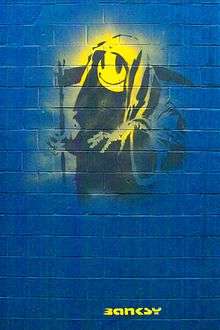
Randolph Caldecott, Walter Crane, Kate Greenaway, John Tenniel, Aubrey Beardsley, Roger Hargreaves, Arthur Rackham, John Leech, George Cruikshank and Beatrix Potter were notable book illustrators. Posters have played a significant role in British culture. Designed by Alfred Leete in 1914 as a recruitment poster for the British Army, "Lord Kitchener Wants You" is the most famous British recruitment poster ever produced and an iconic and enduring image of World War I.[164] Produced by the British government in 1939 in preparation for World War II, the Keep Calm and Carry On motivational poster is now seen as "not only as a distillation of a crucial moment in Britishness, but also as an inspiring message from the past to the present in a time of crisis".[165][166]
In the late 1960s, British graphic designer Storm Thorgerson co-founded the English graphic art group Hipgnosis, who have designed many iconic single and album covers for rock bands. His works were notable for their surreal elements, with perhaps the most famous being the cover for Pink Floyd's The Dark Side of the Moon.[167] The subversive political artwork of Banksy (pseudonym of English graffiti artist whose identity is concealed) can be found on streets, walls and buildings all over the world.[168] Arts institutions include the Royal College of Art, Royal Society of Arts, New English Art Club, Slade School of Art, Royal Academy, and the Tate Gallery (founded as the National Gallery of British Art).
Design

In 2006, 37 years after its first test flight, Concorde was named the winner of the Great British Design Quest organised by the BBC and the Design Museum. A total of 212,000 votes were cast with Concorde beating other British design icons such as the Mini, mini skirt, Jaguar E-Type, Tube map and the Supermarine Spitfire.[169]
Sir Morien Morgan led research into supersonic transport in 1948 that culminated in the Concorde passenger aircraft.[170] In November 1956 he became Chairman of the newly formed Supersonic Transport Aircraft Committee which funded research into supersonic transport at several UK aviation firms though the 1950s. By the late 1950s the Committee had started the process of selecting specific designs for development, and after the forced merger of most UK aviation firms in 1960, selected the Bristol Type 223, designed by Archibald Russell, as the basis for a transatlantic design.[170]
The Brit Awards statuette for the BPI's annual music awards, which depicts Britannia, the female personification of Britain, is regularly redesigned by some of the best known British designers, stylists and artists, including Dame Vivienne Westwood, Damien Hirst, Tracey Emin, Sir Peter Blake and the late Zaha Hadid.[171][172]
Performing arts

Large outdoor music festivals in the summer and autumn are popular, such as Glastonbury, V Festival, Reading and Leeds Festivals. The UK was at the forefront of the illegal, free rave movement from the late 1980s, which led to pan-European culture of teknivals mirrored on the UK free festival movement and associated travelling lifestyle.[173] The most prominent opera house in England is the Royal Opera House at Covent Gardens.[174] The Proms, a season of orchestral classical music concerts held at the Royal Albert Hall, is a major cultural event held annually.[174] The Royal Ballet is one of the world's foremost classical ballet companies, its reputation built on two prominent figures of 20th century dance, prima ballerina Margot Fonteyn and choreographer Frederick Ashton. Irish dancing is popular in Northern Ireland and among the Irish diaspora throughout the UK; its costumes feature patterns taken from the medieval Book of Kells.[175]
A staple of British seaside culture, the quarrelsome couple Punch and Judy made their first recorded appearance in Covent Garden, London in 1662.[176] The various episodes of Punch and Judy are performed in the spirit of outrageous comedy — often provoking shocked laughter — and are dominated by the anarchic clowning of Mr. Punch.[177] Regarded as British cultural icons, they appeared at a significant period in British history, with Glyn Edwards stating: "[Pulcinella] went down particularly well with Restoration British audiences, fun-starved after years of Puritanism. We soon changed Punch's name, transformed him from a marionette to a hand puppet, and he became, really, a spirit of Britain - a subversive maverick who defies authority, a kind of puppet equivalent to our political cartoons."[176]
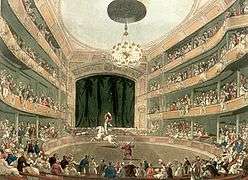
The circus is a traditional form of entertainment in the UK. Chipperfield's Circus dates back more than 300 years in Britain, making it one of the oldest family circus dynasties.[179] Philip Astley is regarded as the father of the modern circus.[178] Following his invention of the circus ring in 1768, Astley's Amphitheatre opened in London in 1773.[178][180] As an equestrian master Astley had a skill for trick horse-riding, and when he added tumblers, tightrope-walkers, jugglers, performing dogs, and a clown to fill time between his own demonstrations – the modern circus was born.[181][182] The Hughes Royal Circus was popular in London in the 1780s. Pablo Fanque's Circus Royal, among the most popular circuses of Victorian England, showcased William Kite, which inspired John Lennon to write Being for the Benefit of Mr. Kite! on The Beatles' album, Sgt. Pepper's Lonely Hearts Club Band. Joseph Grimaldi, the most celebrated of English clowns, is considered the father of modern clowning.[183]

The Edinburgh Festival Fringe is the world’s largest arts festival.[184] Established in 1947, it takes place in Scotland's capital during three weeks every August alongside several other arts and cultural festivals. The Fringe mostly attracts events from the performing arts, particularly theatre and comedy, although dance and music also feature.[184] The Notting Hill Carnival is an annual event that has taken place on the streets of Notting Hill, London since 1966.[185] Led by the British African-Caribbean community, the carnival has attracted around one million people, making it Britain's biggest street festival and one of the largest in the world.[186]
Pantomime (often referred to as "panto") is a British musical comedy stage production, designed for family entertainment. It is performed in theatres throughout the UK during the Christmas and New Year season. The art originated in the 18th century with John Weaver, a dance master and choreographer at the Theatre Royal, Drury Lane in London.[187] In 19th century England it acquired its present form, which includes songs, slapstick comedy and dancing, employing gender-crossing actors, combining topical humour with a story loosely based on a well-known fairy tale.[187] It is a participatory form of theatre, in which the audience sing along with parts of the music and shout out phrases to the performers, such as "It's behind you".[188]
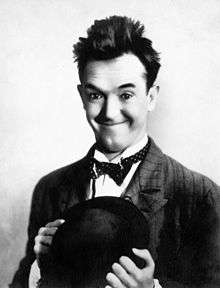
Pantomime story lines and scripts are almost always based on traditional children's stories: some of the popular British stories featured include Jack and the Beanstalk, Peter Pan, Babes in the Wood, Goldilocks and the Three Bears and Dick Whittington and His Cat. Plot lines are almost always adapted for comic or satirical effect, and characters and situations from other stories are often interpolated into the plot. For example, Jack and the Beanstalk might include references to English nursery rhymes involving characters called "Jack", such as Jack and Jill. Famous people regularly appear in Pantos, such as Ian McKellen.[189]
Music hall is a British theatrical entertainment popular from the early Victorian era to the mid 20th century. The precursor to variety shows of today, music hall involved a mixture of popular songs, comedy, speciality acts and variety entertainment. Music hall songs include "I'm Henery the Eighth, I Am", "Hokey cokey", "I Do Like To be Beside the Seaside" and "The Laughing Policeman". British performers who honed their skills at pantomime and music hall sketches include Charlie Chaplin, Stan Laurel, George Formby, Gracie Fields, Dan Leno, Gertrude Lawrence, Marie Lloyd and Harry Champion.[190][191] British music hall comedian and theatre impresario Fred Karno developed a form of sketch comedy without dialogue in the 1890s, and Chaplin and Laurel were notable music hall comedians who worked for him.[191] Film producer Hal Roach stated; "Fred Karno is not only a genius, he is the man who originated slapstick comedy. We in Hollywood owe much to him."[192]
Architecture
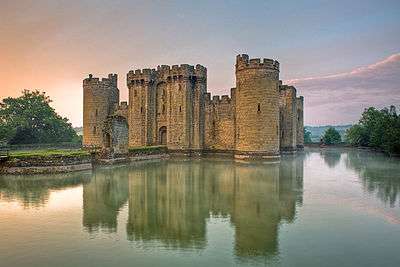
The architecture of the United Kingdom includes many features that precede the creation of the United Kingdom in 1707, from as early as Skara Brae and Stonehenge to the Giant's Ring, Avebury and Roman ruins. In most towns and villages the parish church is an indication of the age of the settlement. Many castles remain from the medieval period, such as Windsor Castle (longest-occupied castle in Europe),[194] Stirling Castle (one of the largest and most important in Scotland),[195] Bodiam Castle (a moated castle), and Warwick Castle. Over the two centuries following the Norman conquest of England of 1066, and the building of the Tower of London, castles such as Caernarfon Castle in Wales and Carrickfergus Castle in Ireland were built.

English Gothic architecture flourished from the 12th to the early 16th century, and famous examples include Westminster Abbey, the traditional place of coronation for the British monarch, which also has a long tradition as a venue for royal weddings; and was the location of the funeral of Princess Diana,[197] Canterbury Cathedral, one of the oldest and most famous Christian structures in England; Salisbury Cathedral, which has the tallest church spire in the UK;[198] and Winchester Cathedral, which has the longest nave and greatest overall length of any Gothic cathedral in Europe.[199] Tudor architecture is the final development of Medieval architecture in England, during the Tudor period (1485–1603). In the United Kingdom, a listed building is a building or other structure officially designated as being of special architectural, historical or cultural significance. About half a million buildings in the UK have "listed" status.
18th century

In the 1680s, Downing Street was built by Sir George Downing, and its most famous address 10 Downing Street, became the residence of the Prime Minister in 1730.[200] One of the best-known English architects working at the time of the foundation of the United Kingdom was Sir Christopher Wren. He was employed to design and rebuild many of the ruined ancient churches of London following the Great Fire of London. His masterpiece, St Paul's Cathedral, was completed in the early years of the United Kingdom.[201] Buckingham Palace, the London residence of the British monarch, was built in 1705.[202] Both St Paul's Cathedral and Buckingham Palace use Portland stone, a limestone from the Jurassic period quarried in the Jurassic Coast in Portland, Dorset, which is famous for its use in British and world architecture.[203]
In the early 18th century Baroque architecture – popular in Europe – was introduced, and Blenheim Palace was built in this era. However, Baroque was quickly replaced by a return of the Palladian form. The Georgian architecture of the 18th century was an evolved form of Palladianism. Many existing buildings such as Woburn Abbey and Kedleston Hall are in this style. Among the many architects of this form of architecture and its successors, neoclassical and romantic, were Robert Adam, Sir William Chambers, and James Wyatt.
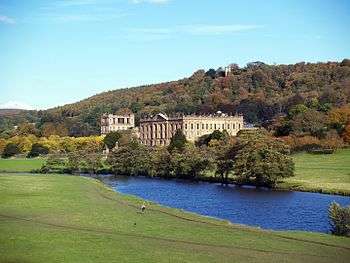
The aristocratic stately home continued the tradition of the first large gracious unfortified mansions such as the Elizabethan Montacute House and Hatfield House. Many of these houses are the setting for British period dramas, such as Downton Abbey. During the 18th and 19th centuries in the highest echelons of British society, the English country house was a place for relaxing, hunting in the countryside. Many stately homes have become open to the public: Knebworth House, now a major venue for open air rock and pop concerts,[204] Alton Towers, the most popular theme park in the UK,[205] and Longleat, the world's first safari park outside Africa.[179][206]
19th century
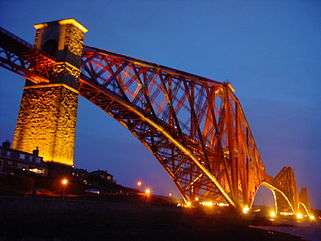
In the early 19th century the romantic Gothic revival began in England as a reaction to the symmetry of Palladianism. Notable examples of Gothic revival architecture are the Houses of Parliament and Fonthill Abbey. By the middle of the 19th century, as a result of new technology, one could incorporate steel as a building component: one of the greatest exponents of this was Joseph Paxton, architect of the Crystal Palace. Paxton also continued to build such houses as Mentmore Towers, in the still popular retrospective Renaissance styles. In this era of prosperity and development British architecture embraced many new methods of construction, but such architects as August Pugin ensured that traditional styles were retained.

Following the building of the world's first seaside pier in July 1814 in Ryde, Isle of Wight off the south coast of England, the pier became fashionable at seaside resorts in England and Wales during the Victorian era, peaking in the 1860s with 22 being built.[207] Providing a walkway out to sea, the seaside pier is regarded as among the finest Victorian architecture, and is an iconic symbol of the British seaside holiday.[207][208] By 1914, there were over 100 piers around the UK coast.[207] Today there are approximately 55 seaside piers in the UK.[209]
20th century

At the beginning of the 20th century a new form of design, arts and crafts, became popular; the architectural form of this style, which had evolved from the 19th century designs of such architects as George Devey, was championed by Edwin Lutyens. Arts and crafts in architecture is characterised by an informal, non-symmetrical form, often with mullioned or lattice windows, multiple gables and tall chimneys. This style continued to evolve until World War II. After that war, reconstruction went through a variety of phases, but was heavily influenced by Modernism, especially from the late 1950s to the early 1970s. Many bleak town centre redevelopments—criticised for featuring hostile, concrete-lined "windswept plazas"—were the fruit of this interest, as were many equally bleak public buildings, such as the Hayward Gallery.
Current

Many Modernist-inspired town centres are today being redeveloped: Bracknell town centre is an example. However, in the immediate post-War years many thousands (perhaps hundreds of thousands) of council houses in vernacular style were built, giving working-class people their first experience of private gardens and indoor sanitation. Modernism remains a significant force in UK architecture, although its influence is felt predominantly in commercial buildings. The two most prominent proponents are Lord Rogers of Riverside and Norman Foster. Rogers' iconic London buildings are probably Lloyd's Building and the Millennium Dome, while Foster created the 'Gherkin' and the City Hall. The Turner Prize winning artist Sir Anish Kapoor is one of the most acclaimed contemporary British sculptors. Among his most notable designs is the ArcelorMittal Orbit sculpture at the Olympic Park in London.
Described by The Guardian as the 'Queen of the curve',[211] Zaha Hadid liberated architectural geometry with the creation of highly expressive, sweeping fluid forms of multiple perspective points and fragmented geometry that evoke the chaos and flux of modern life.[212] A pioneer of parametricism, and an icon of neo-futurism, with a formidable personality, her acclaimed work and ground-breaking forms include the aquatic centre for the London 2012 Olympics.[211] In 2010 and 2011 she received the Stirling Prize, the UK's most prestigious architectural award, and in 2015 she became the first woman to be awarded the Royal Gold Medal from the Royal Institute of British Architects.[213] Completed in 2012, the Shard London Bridge is the tallest building in the European Union.[214] Other major skyscrapers under construction in London include The Pinnacle, and Heron Tower.[215][216] Modernist architect Nicholas Grimshaw designed the Eden Project in Cornwall, which is the world's largest greenhouse.[217]
Comics
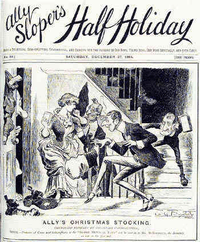
British comics in the early 20th century typically evolved from illustrated penny dreadfuls of the Victorian era (featuring Sweeney Todd, Dick Turpin and Varney the Vampire), and after adult comics had been published more juvenile British comics emerged,[219] with the two most popular, The Beano and The Dandy, released by DC Thomson (based in Dundee, Scotland) in the 1930s. By 1950 the weekly circulation of both reached two million.[220][221] Explaining the popularity of comics during this period, Anita O’Brien, director curator at London’s Cartoon Museum, states: “When comics like the Beano and Dandy were invented back in the 1930s - and through really to the 1950s and 60s - these comics were almost the only entertainment available to children."[220] In 1954 Tiger comics introduced Roy of the Rovers, the hugely popular football based strip recounting the life of Roy Race and the team he played for, Melchester Rovers. The stock media phrase "real 'Roy of the Rovers' stuff" is often used by football writers, commentators and fans when describing displays of great skill, or surprising results that go against the odds, in reference to the dramatic storylines that were the strip's trademark.[222] Other comic books and graphic novels such as Eagle, Valiant, Warrior, and 2000 AD also flourished.
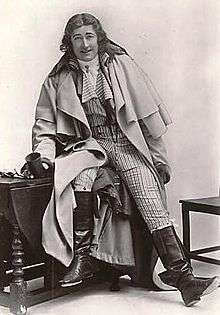
Created by Emma Orczy in 1903, the Scarlet Pimpernel is the alter ego of Sir Percy Blakeney, a wealthy English fop who transforms into a formidable swordsman and a quick-thinking escape artist, representing the original "hero with a secret identity".[223] The Scarlet Pimpernel first appeared on stage (1903) and then in novel (1905), and established the disguised hero into popular culture.[224] He exhibits characteristics that became standard superhero conventions in comic books, including the penchant for disguise, use of a signature weapon (sword), ability to out-think and outwit his adversaries, and a calling card (he leaves behind a scarlet pimpernel at his interventions).[224] Drawing attention to his alter ego Blakeney he hides behind his public face as a slow thinking foppish playboy (like Bruce Wayne), and he also establishes a network of supporters, The League of the Scarlet Pimpernel, that aid his endeavours.[224]
In the 1980s, a resurgence of British writers and artists gained prominence in mainstream comic books, which was dubbed the "British Invasion" in comic book history.[225] These writers and artists brought with them their own mature themes and philosophy such as anarchy, controversy and politics common in British media, but were never before seen in American comics. These elements would pave the way for mature and "darker and edgier" comic books that would jump start the Modern Age of Comics.[226] Writers included Alan Moore, famous for his V for Vendetta, From Hell, Watchmen, Marvelman, and The League of Extraordinary Gentlemen;[227] Neil Gaiman and his critically acclaimed and best-selling The Sandman mythos and Books of Magic; Warren Ellis who created Transmetropolitan and Planetary; and others like Alan Grant, Grant Morrison, Dave Gibbons, Peter Milligan, Brian Azzarello, Alan Davis, and Mark Millar who created Wanted and Kick-Ass. Prominent comic book artists include Steve Dillon, Simon Bisley, Dave McKean, Glen Fabry, John Ridgway and Sean Phillips. The comic book series Hellblazer, which is largely set in Britain and starring the Liverpudlian magician John Constantine, paved the way for British writers such as Jamie Delano, Mike Carey and Denise Mina.[228]
British honours system
_from_NPG.jpg)
The British honours system is a means of rewarding individuals' personal bravery, achievement, or service to the United Kingdom. Candidates are identified by public or private bodies, by government departments, or are nominated by members of the public. Nominations are reviewed by honours committees made up of government officials and private citizens from different fields, who meet twice a year to discuss the candidates and make recommendations for appropriate honours to be awarded by the Queen.[229]
.jpg)
Historically a knighthood was conferred upon mounted warriors. By the Late Middle Ages, the rank had become associated with the ideals of chivalry, a code of conduct for the perfect courtly Christian warrior. An example of warrior chivalry in medieval literature is Sir Gawain (King Arthur's nephew and a Knight of the Round Table) in Sir Gawain and the Green Knight (late 14th century). Since the early modern period, the title of knight is purely honorific, usually bestowed by a monarch, often for non-military service to the country. The modern female equivalent in the UK is damehood. The ceremony often takes place at Buckingham Palace, and family members are invited to attend.[230]
Differing examples for receiving a knighthood include: Sir Nicholas Winton: for "services to humanity, in saving Jewish children from Nazi occupied Czechoslovakia",[231] Sir Elton John: for "services to music and charitable services",[232] Sir Ridley Scott: for "services to the British film industry",[233] and Sir Richard Branson: for "services to entrepreneurship".[234] Examples for those receiving a damehood include: actress Dame Julie Andrews and singer Dame Shirley Bassey: both for "services to the performing arts", actress Dame Joan Collins: for "services to charity", and Dame Agatha Christie: for "contribution to literature."[235]
Folklore
Much of the folklore of the United Kingdom pre-dates the 18th century. Though some of the characters and stories are present throughout all of the UK, most belong to specific countries or regions. Common folkloric beings include pixies, giants, elves, bogeymen, trolls, goblins and dwarves. While many legends and folk-customs are thought to be ancient, such as the tales featuring Offa of Angeln and Weyland Smith,[236] others date from after the Norman invasion of England; Robin Hood and his Merry Men of Sherwood and their battles with the Sheriff of Nottingham being, perhaps, the best known.[237]
.jpg)
During the High Middle Ages tales originated from Brythonic traditions, notably the Arthurian legend.[238][239] Deriving from Welsh source; King Arthur, Excalibur and Merlin, while the Jersey poet Wace introduced the Knights of the Round Table. These stories are most centrally brought together within Geoffrey of Monmouth's Historia Regum Britanniae (History of the Kings of Britain). Another early figure from British tradition, King Cole, may have been based on a real figure from Sub-Roman Britain. Many of the tales and pseudo-histories make up part of the wider Matter of Britain, a collection of shared British folklore.
The Loch Ness Monster is a cryptid that is reputed to inhabit Loch Ness in the Scottish Highlands. The legendary monster has been affectionately referred to by the nickname Nessie since the 1950s.[240] The Leprechaun figures large in Irish folklore. A mischievous fairy type creature in emerald green clothing who when not playing tricks spend all their time busily making shoes, the Leprechaun is said to have a pot of gold hidden at the end of the rainbow, and if ever captured by a human it has the magical power to grant three wishes in exchange for release.[241] In mythology, English fairy tales such as Jack and the Beanstalk and Jack the Giant Killer helped form the modern perception of giants as stupid and violent, while the dwarf Tom Thumb is a traditional hero in English folklore.
English fairy tale Goldilocks and the Three Bears is one of the most popular fairy tales in the English language.[242] Some folk figures are based on semi or actual historical people whose story has been passed down centuries; Lady Godiva for instance was said to have ridden naked on horseback through Coventry, the heroic English figure Hereward the Wake resisted the Norman invasion, Herne the Hunter is an equestrian ghost associated with Windsor Forest and Great Park, and Mother Shipton is the archetypal witch.[243] The chivalrous bandit, such as Dick Turpin, is a recurring character.

Published in 1724, A General History of the Pyrates by Captain Charles Johnson provided the standard account of the lives of many pirates in the Golden Age.[244] It influenced pirate literature of Scottish novelists Robert Louis Stevenson (Treasure Island) and J. M. Barrie.[244] Many famous English pirates from the Golden Age hailed from the West Country in south west England—the stereotypical West Country "pirate accent" was popularised by West Country native Robert Newton's portrayal of Stevenson's Long John Silver in film.[83][245] The concept of "walking the plank" was popularised by Barrie's novel, Peter Pan, where Captain Hook's pirates helped define the archetype.[246] Davy Jones' Locker where sailors or ship's remains are consigned to the bottom of the sea is first recorded by Daniel Defoe in 1726.[247] Johnson's 1724 book gave a mythical status to famous English pirates such as Blackbeard and Calico Jack—Jack is known for his Jolly Roger flag design, a skull with crossed swords.[248]
The Gremlin is part of Royal Air force folklore dating from the 1920s, with gremlin being RAF slang for a mischievous creature that sabotages aircraft, meddling in the plane's equipment.[249] Legendary figures from 19th century London whose tales have been romanticised include Sweeney Todd, the murderous barber of Fleet Street, and serial killer Jack the Ripper. On 5 November, people in England make bonfires, set off fireworks and eat toffee apples in commemoration of the foiling of Guy Fawkes' Gunpowder Plot, which became an annual event after The Thanksgiving Act of 1606 was passed.[250] Guy Fawkes mask is an emblem for anti-establishment protest groups.[251]
Halloween is a traditional and much celebrated holiday in Scotland and Ireland on the night of 31 October.[252] The name Halloween is first attested in the 16th century as a Scottish shortening of the fuller All-Hallows-Even,[253] and according to some historians has its roots in the gaelic festival Samhain, where the Gaels believed the border between this world and the otherworld became thin, and the dead would revisit the mortal world.[254] In 1780, Dumfries poet John Mayne makes note of pranks at Halloween; "What fearfu' pranks ensue!", as well as the supernatural associated with the night, "Bogies" (ghosts).[255] Robert Burns' 1785 poem "Halloween" is recited by Scots at Halloween, and Burns was influenced by Mayne's composition.[255][256] In Scotland and Ireland, traditional Halloween customs include; Guising — children disguised in costume going from door to door requesting food or coins – which became practice by the late 19th century,[257][258] turnips hollowed-out and carved with faces to make lanterns,[259] holding parties where games such as apple bobbing are played.[260] Agatha Christie's mystery novel Hallowe'en Party is about a girl who is drowned in an apple-bobbing tub.[261] Other practices in Ireland include lighting bonfires, and having firework displays.[262][263] Further contemporary imagery of Halloween is derived from Gothic and Horror literature (notably Shelley's Frankenstein and Stoker's Dracula), and classic horror films (such as Hammer Horrors). Mass transatlantic Irish and Scottish migration in the 19th century popularised Halloween in North America.[264]
Witchcraft

Witchcraft has featured in the British isles for millennia. The use of a crystal ball is attributed to the druids to foretell the future.[265] In medieval folklore King Arthur's magician, the wizard Merlin, carried around a crystal ball for the same purpose.[266] John Dee, consultant to Elizabeth I, frequently used a crystal ball to communicate with the angels.[267] Probably the most famous depiction of witchcraft in literature is in Shakespeare's 1606 play Macbeth featuring the three witches and their cauldron.
Contemporary witchcraft began in England in the early 20th century via notable figures such as Aleister Crowley and the father of Wicca Gerald Gardner, before expanding westward in the 1960s.[268] Settling down near the New Forest in Hampshire, Gardner joined an occult group through which he claimed to have encountered the New Forest coven into which he was initiated in 1939.[268] Believing the coven to be a survival of the pre-Christian Witch-Cult, he decided to revive the faith, supplementing the coven's rituals with ideas borrowed from ceremonial magic and the writings of Crowley to form the Gardnerian tradition of Wicca.[268] Moving to London in 1945, following the repeal of the Witchcraft Act of 1736 Gardner became intent on propagating Wicca, attracting media attention and writing about it in Witchcraft Today (1954) and The Meaning of Witchcraft (1959). Crowley (the founder of Thelema) was described as "the most notorious occultist magician of the 20th century", and he remains an influential figure over Western esotericism and the counter-culture.[269] In British popular culture, his motto of "Do What Thou Wilt" is inscribed on the vinyl of Led Zeppelin's album Led Zeppelin III, and he is the subject of Ozzy Osbourne's single "Mr Crowley".[270]
National parks, museums, libraries, and galleries
Heritage administration


Each country of the United Kingdom has its own body responsible for heritage matters.
English Heritage is the governmental body with a broad remit of managing the historic sites, artefacts and environments of England. It is currently sponsored by the Department for Culture, Media and Sport. The charity National Trust for Places of Historic Interest or Natural Beauty holds a contrasting role. Seventeen of the United Kingdom UNESCO World Heritage Sites are in England.[271] Some of the best known of these include; Hadrian's Wall, Stonehenge, Avebury and Associated Sites, Tower of London, Jurassic Coast, Westminster, Saltaire, Ironbridge Gorge, Studley Royal Park and various others.[272] The northernmost point of the Roman Empire, Hadrian's Wall is the largest Roman artefact anywhere; it runs a total of 73 miles in northern England.[273]
Historic Scotland is the executive agency of the Scottish Government, responsible for historic monuments in Scotland, such as Stirling Castle. The Old and New Town of Edinburgh is a notable Scottish World Heritage site. Many of Wales' great castles, such as the Castles and Town Walls of King Edward in Gwynedd and other monuments, are under the care of Cadw, the historic environment service of the Welsh Government. The Northern Ireland Environment Agency promotes and conserves the natural and built environment in Northern Ireland, and The Giants Causeway on the northeast coast is one of the UK's natural World Heritage sites.[272]
There are 15 National parks in the UK, including the Lake District in England, Snowdonia in Wales, and Loch Lomond and The Trossachs National Park in Scotland.[274]
Museums and galleries

The British Museum in London with its collection of more than seven million objects,[275] is one of the largest and most comprehensive in the world,[276] sourced from every continent, illustrating and documenting the story of human culture from its beginning to the present. National Museums of Scotland bring together national collections in Scotland. Amgueddfa Cymru – National Museum Wales comprises eight museums in Wales. National Museums Northern Ireland has four museums in Northern Ireland including the Ulster Museum. In addition the Titanic Belfast museum, a visitor attraction in the Titanic Quarter, east Belfast, Northern Ireland on the regenerated site of the shipyard where Titanic was built, was officially opened to the public in March 2012.[277] The architecture is a tribute to Titanic itself, with the external facades, a nod to the enormous hull of the cruise liner.[278] The world's first Madame Tussauds wax museum opened in London in 1835, and today displays waxworks of famous people from various fields, including; royalty (Princess Diana), historical figures (Henry VIII), sport (David Beckham), music and entertainment (Freddie Mercury) among others.[279]
The most senior art gallery is the National Gallery in Trafalgar Square, which houses a collection of over 2,300 paintings dating from the mid-13th century to 1900. The Tate galleries house the national collections of British and international modern art; they also host the famously controversial Turner Prize.[280] The National Galleries of Scotland are the five national galleries of Scotland and two partner galleries. The National Museum of Art, Wales, opened in 2011.[281]
Libraries
The British Library in London is the national library and is one of the world's largest research libraries, holding over 150 million items in all known languages and formats; including around 25 million books.[282] The National Library of Scotland in Edinburgh, holds 7 million books, fourteen million printed items and over 2 million maps.[283] The National Library of Wales is the national legal deposit library of Wales.[284]
Historical markers: blue plaques
.jpg)
A blue plaque, the oldest historical marker scheme in the world, is a permanent sign installed in a public place in the UK to commemorate a link between that location and a famous person or event.[285] The scheme was the brainchild of politician William Ewart in 1863 and was initiated in 1866.[285] It was formally established by the Society of Arts in 1867, and since 1986 has been run by English Heritage.[285] The first plaque was unveiled in 1867 to commemorate Lord Byron at his birthplace, 24 Holles Street, Cavendish Square, London. Examples that commemorate events include John Logie Baird's first demonstration of the television at 22 Frith Street, Westminster, W1, London, the first sub 4-minute mile run by Roger Bannister on 6 May 1954 at Oxford University's Iffley Road Track, and the sweet shop in Llandaff, Cardiff that commemorates the mischief carried out by a young Roald Dahl who put a mouse in the gobstoppers jar.[286]
Science and technology
From the time of the Scientific Revolution, England and Scotland, and thereafter the United Kingdom, have been prominent in world scientific and technological development. The Royal Society serves as the national academy for sciences, with members drawn from different institutions and disciplines. Formed in 1660, it is one of the oldest learned societies still in existence.[287]

Sir Isaac Newton's publication of the Principia Mathematica ushered in what is recognisable as modern physics. The first edition of 1687 and the second edition of 1713 framed the scientific context of the foundation of the United Kingdom. He realised that the same force is responsible for movements of celestial and terrestrial bodies, namely gravity. He is the father of classical mechanics, formulated as his three laws and as the co-inventor (with Gottfried Leibniz) of differential calculus. He also created the binomial theorem, worked extensively on optics, and created a law of cooling.
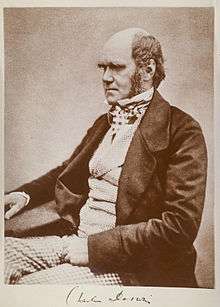
Since Newton's time, figures from the UK have contributed to the development of most major branches of science. Examples include Michael Faraday, who, with James Clerk Maxwell, unified the electric and magnetic forces in what are now known as Maxwell's equations; James Joule, who worked extensively in thermodynamics and is often credited with the discovery of the principle of conservation of energy; Paul Dirac, one of the pioneers of quantum mechanics; naturalist Charles Darwin, author of On the Origin of Species and discoverer of the principle of evolution by natural selection; James Hutton, founder of modern geology,[289] whose work on the age of the earth forms a key element of Darwin's theory; Harold Kroto, the discoverer of buckminsterfullerene; William Thomson (Baron Kelvin) who drew important conclusions in the field of thermodynamics and invented the Kelvin scale of absolute zero; botanist Robert Brown discovered the random movement of particles suspended in a fluid (Brownian motion); and the creator of Bell's Theorem, John Stewart Bell.
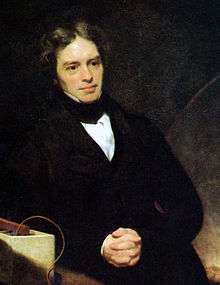
Other 19th and early 20th century British pioneers in their field include; Joseph Lister (Antiseptic surgery), Edward Jenner (Vaccination), Richard Owen (Palaeontology, coined the term Dinosaur), Florence Nightingale (Nursing), Sir George Cayley (Aerodynamics), William Fox Talbot (Photography), Howard Carter (Modern Archaeology, discovered Tutankhamun).
John Harrison invented the marine chronometer, a key piece in solving the problem of accurately establishing longitude at sea, thus revolutionising and extending the possibility of safe long distance sea travel.[290] The most celebrated British explorers include James Cook, Walter Raleigh, Sir Francis Drake, Henry Hudson, George Vancouver, Sir John Franklin, David Livingstone, Captain John Smith, Robert Falcon Scott, Lawrence Oates and Ernest Shackleton. The aquarium craze began in early Victorian England when Philip Henry Gosse created and stocked the first public aquarium at the London Zoo in 1853, and coined the term "aquarium" when he published, The Aquarium: An Unveiling of the Wonders of the Deep Sea, in 1854.[291] Robert FitzRoy pioneered weather forecasting: the first daily weather forecasts were published in The Times in 1861.[292]


William Sturgeon invented the electromagnet in 1824.[293][294] The first commercial electrical telegraph was co-invented by Sir William Fothergill Cooke and Charles Wheatstone. Cooke and Wheatstone patented it in May 1837 as an alarm system, and it was first successfully demonstrated on 25 July 1837 between Euston and Camden Town in London.[295] Postal reformer Sir Rowland Hill is regarded as the creator of the modern postal service and the inventor of the postage stamp (Penny Black) — with his solution of pre-payment facilitating the safe, speedy and cheap transfer of letters.[296] Hill's colleague Sir Henry Cole introduced the world's first commercial Christmas card in 1843.[297] In 1851 Sir George Airy established the Royal Observatory, Greenwich, London, as the location of the prime meridian where longitude is defined to be 0° (the point that divides the Earth into the Eastern and Western Hemispheres).[298] George Boole authored The Laws of Thought which contains Boolean algebra. Forming the mathematical foundations of computing, Boolean logic laid the foundations for the information age.[299]

Historically, many of the UK's greatest scientists have been based at either Oxford or Cambridge University, with laboratories such as the Cavendish Laboratory in Cambridge and the Clarendon Laboratory in Oxford becoming famous in their own right. In modern times, other institutions such as the Red Brick and New Universities are catching up with Oxbridge. For instance, Lancaster University has a global reputation for work in low temperature physics.

Technologically, the UK is also amongst the world's leaders. Historically, it was at the forefront of the Industrial Revolution, with innovations especially in textiles, the steam engine, railroads, machine tools and civil engineering. Famous British engineers and inventors from this period include James Watt, Robert Stephenson, Richard Arkwright, Henry Maudslay and the 'father of Railways' George Stephenson. Maudslay's most influential invention was the screw-cutting lathe, a machine which created uniformity in screws and allowed for the application of interchangeable parts (a prerequisite for mass production): it was a revolutionary development necessary for the Industrial Revolution.[302][303] The UK has the oldest railway networks in the world, with the Stockton and Darlington Railway, opened in 1825, the first public railway to use steam locomotives.[304] Opened in 1863, London Underground is the world's first underground railway.[305] With his role in the marketing and manufacturing of Watt's steam engine, and invention of modern coinage, Matthew Boulton is regarded as one of the most influential entrepreneurs in history.[306] Engineer Isambard Kingdom Brunel, another major figure of the Industrial Revolution, was placed second in a 2002 BBC nationwide poll to determine the "100 Greatest Britons".[307] He created the Great Western Railway, as well as famous steamships including the SS Great Britain, the first propeller-driven ocean-going iron ship, and SS Great Eastern which laid the first lasting transatlantic telegraph cable.[308] Josiah Wedgwood pioneered the industrialisation of pottery manufacture.[309]

Since then, the UK has continued this tradition of technical creativity. Alan Turing (leading role in the creation of the modern computer),[311] Scottish inventor Alexander Graham Bell (the first practical telephone),[312] John Logie Baird (world's first working television system, first electronic colour television),[313][314] Frank Whittle (inventor of the jet engine), Charles Babbage (devised the idea of the computer), Alexander Fleming (discovered penicillin).[315] The UK remains one of the leading providers of technological innovations today, providing inventions as diverse as the World Wide Web by Sir Tim Berners-Lee, and Viagra by British scientists at Pfizer's Sandwich, Kent.[316] Sir Alec Jeffreys pioneered DNA fingerprinting.[317] Pioneers of fertility treatment Patrick Steptoe and Robert Edwards, successfully achieved conception through IVF (world's first "test tube baby") in 1978.[318] In 1952, OXO (or Noughts and Crosses), created by computer scientist Alexander S. Douglas, was the first video game.[319][320] In OXO, the computer player could play perfect games of tic-tac-toe against a human opponent.[319] In the mid 1960s, John Shepherd-Barron invented the cash machine (ATM) and James Goodfellow invented Personal identification number (PIN) technology, and on 27 June 1967, the world's first cash machine was established outside a branch of Barclays Bank in Enfield, north London.[321][322]

Other famous scientists, engineers, theorists and inventors from the UK include: Sir Francis Bacon, Richard Trevithick (Train), Thomas Henry Huxley, Francis Crick (DNA), Rosalind Franklin (Photo 51), Robert Boyle (Boyle's Law), Robert Hooke, Thomas Young, Humphry Davy, Robert Watson-Watt, J. J. Thomson (discovered Electron), James Chadwick (discovered Neutron), Frederick Soddy (discovered Isotope), John Cockcroft, Henry Bessemer, Edmond Halley, Sir William Herschel, Charles Parsons (Steam turbine), Alan Blumlein (Stereo sound), John Dalton (Colour blindness), James Dewar, Alexander Parkes (celluloid), Charles Macintosh, Ada Lovelace, Peter Durand, Alcock & Brown (first non-stop transatlantic flight), Henry Cavendish (discovered Hydrogen), Francis Galton, Sir Joseph Swan (Incandescent light bulb), Sir William Gull (Anorexia nervosa), George Everest, Edward Whymper (first ascent of Matterhorn), Daniel Rutherford, Arthur Eddington (luminosity of stars), Lord Rayleigh (why sky is blue), Norman Lockyer (discovered Helium),[323] Julian Huxley (formed WWF), Adam Smith (pioneer of modern economics and capitalism), Charles K. Kao (fiber optics), Harry Ferguson (three-point linkage revolutionised the farm tractor), Sir James Martin (ejection seat), Frank Pantridge (portable defibrillator), John Herschel, Bertrand Russell (analytic philosophy pioneer), Jim Marshall (guitar amplifier pioneer),[324] William Ramsay (discovered the noble gases), Peter Higgs (proposed Higgs boson), Harry Brearley (stainless steel), John Venn (Venn diagram), Jane Goodall, William Playfair (founder of statistical graphics; created bar chart and pie chart),[325] Edward Raymond Turner (world's first colour motion picture film),[73] Sir Jonathan Ive (Chief Design Officer of Apple Inc.),[326] Thomas Bayes (Bayes theorem), Dorothy Hodgkin (X-ray crystallography), Frederick Sanger, Richard Dawkins, Stephen Hawking and Joseph Priestley.
Religion
The United Kingdom was created as an Anglican Christian country and Anglican churches remain the largest faith group in each country of the UK except Scotland where Anglicanism is a tiny minority.[327] Following this is Roman Catholicism and religions including Islam, Hinduism, Sikhism, Judaism, and Buddhism. Today British Jews number around 300 000 with the UK having the fifth largest Jewish community worldwide.[328]
William Tyndale's 1520s translation of the Bible was the first to be printed in English, and was a model for subsequent English translations, notably the King James Version in 1611.[329] The Book of Common Prayer of 1549 was the first prayer book to include the complete forms of service for daily and Sunday worship in English, and the marriage and burial rites have found their way into those of other denominations and into the English language.
In 17th century England, the Puritans condemned the celebration of Christmas.[330] In contrast, the Anglican Church "pressed for a more elaborate observance of feasts, penitential seasons, and saints' days. The calendar reform became a major point of tension between the Anglicans and Puritans."[331] The Catholic Church also responded, promoting the festival in a more religiously oriented form. King Charles I of England directed his noblemen and gentry to return to their landed estates in midwinter to keep up their old-style Christmas generosity. Following the Parliamentarian victory over Charles I during the English Civil War, Puritan rulers banned Christmas in 1647.[332]

Protests followed as pro-Christmas rioting broke out in several cities and for weeks Canterbury was controlled by the rioters, who decorated doorways with holly and shouted royalist slogans.[330] The book, The Vindication of Christmas (London, 1652), argued against the Puritans, and makes note of Old English Christmas traditions, dinner, roast apples on the fire, card playing, dances with "plow-boys" and "maidservants", old Father Christmas and carol singing.[333] The Restoration of King Charles II in 1660 ended the ban. Following the Restoration, Poor Robins Almanack contained the lines:
- Now thanks to God for Charles return
- Whose absence made old Christmas mourn
- For then we scarcely did it know
- Whether it Christmas were or no.[334]
The diary of James Woodforde, from the latter half of the 18th century, details Christmas observance and celebrations associated with the season over a number of years.[335]

In the early 19th century, writers imagined Tudor Christmas as a time of heartfelt celebration. In 1843, Charles Dickens wrote the novel A Christmas Carol that helped revive the "spirit" of Christmas and seasonal merriment.[337][338] Dickens sought to construct Christmas as a family-centered festival of generosity, in contrast to the community-based and church-centered observations, the observance of which had dwindled during the late 18th century and early 19th century.[339] Superimposing his humanitarian vision of the holiday, termed "Carol Philosophy",[336] Dickens influenced many aspects of Christmas celebrated today in Western culture, such as family gatherings, seasonal food and drink, dancing, games, and a festive generosity of spirit.[340] A prominent phrase from the tale, "Merry Christmas", was popularized following its publication.[341] The term Scrooge became a synonym for miser, with "Bah! Humbug!" dismissive of the festive spirit.[338]
The revival of the Christmas Carol began with William Sandys's Christmas Carols Ancient and Modern (1833), with the first appearance in print of "The First Noel", "I Saw Three Ships", "Hark the Herald Angels Sing" and "God Rest Ye Merry, Gentlemen". In 1843 the first commercial Christmas card was produced by Henry Cole leading to the exchange of festive greeting cards among the public.[342] The movement coincided with the appearance of the Oxford Movement and the growth of Anglo-Catholicism, which led a revival in traditional rituals and religious observances.[343]
In the UK, the Christmas tree was introduced in the early 19th century following the personal union with the Kingdom of Hanover by Charlotte of Mecklenburg-Strelitz, wife of King George III. In 1832, the future Queen Victoria wrote about her delight at having a Christmas tree, hung with lights, ornaments, and presents placed round it.[344] After her marriage to her German cousin Prince Albert, a hugely influential image of the British royal family with their Christmas tree at Windsor Castle was published in the Illustrated London News in 1848, after which the custom became more widespread throughout Britain.[345]
While 2001 census information suggests that over 75 percent of UK citizens consider themselves to belong to a religion, Gallup reports only 10 percent of UK citizens regularly attend religious services.[346] A 2004 YouGov poll found that 44 percent of UK citizens believe in God, while 35 percent do not.[347] Christmas and Easter are national public holidays in the UK,[348] and Christian organisations, such as the Salvation Army founded by William Booth, play an important role for their charitable work.[349]
Politics
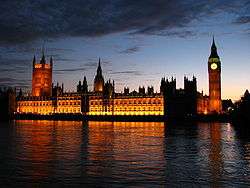
The UK has a parliamentary government based on the Westminster system that has been emulated around the world – a legacy of the British Empire. The Parliament of the United Kingdom that meets in the Houses of Parliament has two houses: an elected House of Commons and an appointed House of Lords, and any Bill passed requires Royal Assent to become law. It is the ultimate legislative authority in the United Kingdom since the devolved parliament in Scotland and devolved assemblies in Northern Ireland, and Wales are not sovereign bodies and could be abolished by the UK parliament despite being established following public approval as expressed in referendums.

The UK's two major political parties are the Labour Party and the Conservative Party, who most recently won between them 563 out of 650 seats available them in the House of Commons at the 2015 general election. The Scottish National Party (Scotland only) won 56 out of 59 Scottish seats in the House of Commons replacing the Liberal Democrats as the overall third largest party. The remaining seats were won by smaller parties, such as The Green Party and UKIP as well as regional parties such as, Plaid Cymru (Wales only), the Democratic Unionist Party, Social Democratic and Labour Party, Ulster Unionist Party, and Sinn Féin (Northern Ireland).

The United Kingdom has an uncodified constitution, the Constitution of the United Kingdom, consisting mostly of a collection of disparate written sources, including statutes, judge-made case law, and international treaties. As there is no technical difference between ordinary statutes and "constitutional law," the UK Parliament can perform "constitutional reform" simply by passing Acts of Parliament and thus has the political power to change or abolish almost any written or unwritten element of the constitution. However, no Parliament can pass laws that future Parliaments cannot change.[350]

British constitutional documents include: Magna Carta (foundation of the "great writ" Habeas corpus — safeguarding individual freedom against arbitrary state action), the Bill of Rights 1689 (one provision granting freedom of speech in Parliament), Petition of Right, Habeas Corpus Act 1679 and Parliament Acts 1911 and 1949. A separate but similar document, the Claim of Right Act, applies in Scotland. The jurist Albert Venn Dicey wrote that the British Habeas Corpus Acts "declare no principle and define no rights, but they are for practical purposes worth a hundred constitutional articles guaranteeing individual liberty".[351] A strong advocate of the "unwritten constitution", Dicey stated English rights were embedded in the general English common law of personal liberty, and "the institutions and manners of the nation".[352]

The 17th century English patriot John Hampden was a leading parliamentarian involved in challenging the authority of Charles I when he refused to be taxed for ship money in 1637, and was one of the Five Members whose attempted unconstitutional arrest by the King in the House of Commons in 1642 sparked the English Civil War. The wars established the constitutional rights of parliament, a concept legally established as part of the Glorious Revolution in 1688 and the subsequent Bill of Rights 1689. Since that time, no British monarch has entered the House of Commons when it is sitting.[354] Hampden is annually commemorated at the State Opening of Parliament by the British monarch when the doors of the House of Commons are slammed in the face of the monarch's messenger, symbolising the rights of Parliament and its independence from the monarch.[354][355]

Other important British political figures include; William Blackstone, 18th century jurist, judge and politician best known for his seminal work, Commentaries on the Laws of England, containing his formulation: "It is better that ten guilty persons escape than that one innocent suffer", a principle that government and the courts must err on the side of innocence,[357] Emmeline Pankhurst, led the suffragettes which helped win women the right to vote,[353] William Wilberforce, leading abolitionist,[358] Robert Peel, founded the Conservative party (which was expanded by Benjamin Disraeli), and created the modern police force.[359]

Robert Walpole is generally regarded as the first British Prime Minister (1721–1742). Margaret Thatcher was the first female British Prime Minister (1979–1990).[360] She became known as the "Iron Lady", a term coined by a Soviet journalist for her uncompromising politics and leadership style.[361] Nigel Farage, founding member of the UK Independence Party (UKIP) that advocated a UK withdrawal from the European Union, has been dubbed "Mr Brexit". He succeeded in his overriding ambition – to see the UK vote to leave the European Union.[362]
English poet William Cowper wrote in 1785, "We have no slaves at home – Then why abroad? Slaves cannot breathe in England; if their lungs receive our air, that moment they are free, They touch our country, and their shackles fall. That's noble, and bespeaks a nation proud. And jealous of the blessing. Spread it then, And let it circulate through every vein."[363] Thomas Clarkson described fellow British abolitionist Josiah Wedgwood's 1787 anti-slavery medallion, "Am I Not A Man And A Brother?", as "promoting the cause of justice, humanity and freedom".[364] Following the Slave Trade Act 1807, Britain pressed other nations to end their trade with a series of treaties,[365] and in 1839 the world's oldest international human rights organisation, Anti-Slavery International, was formed in London, which worked to outlaw slavery abroad; Wilberforce's abolitionist colleague Thomas Clarkson was the organisation's first key speaker.[366] The world's largest human rights organisation, Amnesty International, was founded by Peter Benenson in London in 1961.[367]
Cuisine

British cuisine is the specific set of cooking traditions and practices associated with the United Kingdom. Historically, British cuisine means "unfussy dishes made with quality local ingredients, matched with simple sauces to accentuate flavour, rather than disguise it."[368] British cuisine has traditionally been limited in its international recognition to the full breakfast and the Christmas dinner.[369] However, Celtic agriculture and animal breeding produced a wide variety of foodstuffs for indigenous Celts. Anglo-Saxon England developed meat and savoury herb stewing techniques before the practice became common in Europe. The Norman conquest introduced exotic spices into Great Britain in the Middle Ages.[369] The British Empire facilitated a knowledge of India's food tradition of "strong, penetrating spices and herbs".[369]

Each country within the United Kingdom has its own specialities. Traditional examples of English cuisine include the Sunday roast; featuring a roasted joint, usually roast beef (a signature English national dish dating back to the 1731 ballad "The Roast Beef of Old England"), lamb or chicken, served with assorted boiled vegetables, Yorkshire pudding and gravy.[371] The full English breakfast—consists of bacon, grilled tomatoes, fried bread, baked beans, fried mushrooms, sausages and eggs.[372] Black pudding and hash browns are often also included. It is usually served with tea or coffee.
Fish and chips are also regarded as a national institution: Winston Churchill called them "the good companions", John Lennon smothered them in tomato ketchup, while George Orwell referred to them as a "chief comfort" of the working class.[370][373] The meal was created in 1860 on the streets of the East End of London by a Jewish boy Joseph Malin who came up with the idea of combining fried fish with chips.[373] A blue plaque at Oldham's Tommyfield Market marks the 1860s origin of the fish and chip shop and fast food industries.[373] Various meat pies are consumed such as steak and kidney pie, shepherd's pie, cottage pie, Cornish pasty and pork pie, the latter of which is consumed cold.[371]
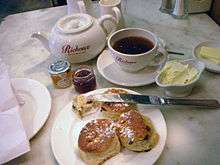
A quintessential British custom, afternoon tea is a small meal snack typically eaten between 4pm and 6pm. The most popular drink in Britain, tea became more widely drunk due to Catherine of Braganza, and is traditionally accompanied with biscuits, sandwiches, scones, cakes or pastries (such as Battenberg cake, fruit cake or Victoria sponge).[376][377] In his 1946 essay "A Nice Cup of Tea", author George Orwell wrote; "tea is one of the mainstays of civilisation in this country."[378] McVitie's are the best selling biscuit brand in the UK, and the most popular biscuits to "dunk" in tea, with McVitie's chocolate digestives, rich tea and hobnobs ranked the nation's top three favourite biscuits.[379] Other popular British biscuits include bourbons, custard creams, Jammie Dodgers, ginger nuts and shortbread.[379] The first documented figure-shaped biscuits (gingerbread man) was at the court of Elizabeth I in the 16th century.[380]
Sausages are commonly eaten as bangers and mash, in sausage rolls or as toad in the hole. Lancashire hotpot is a well known stew. Popular cheeses include Cheddar and Wensleydale. Sweet British dishes include scones, apple pie, mince pies, spotted dick, Eccles cakes, pancakes, sponge cake, trifle, custard, sticky toffee pudding, Tunnock's teacake, and Jaffa cakes; the best selling cake in the UK.[381] Marmalade is a popular British spread for toast or sandwich: a spread famous in British culture for its association with Paddington Bear.[382]
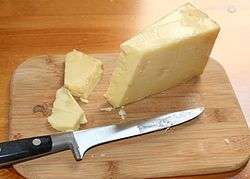
The hot cross bun is a popular British sweet bun traditionally eaten on Good Friday, but are now eaten all year round.[385] Scottish cuisine includes Arbroath Smokie and Haggis; Northern Irish cuisine features the Ulster fry and the Pastie and Welsh cuisine is noted for Welsh rarebit (often using Worcestershire sauce) and Cawl. Native to Scotland, Angus cattle is the UK's most popular native beef breed.[386] Cavendish bananas were cultivated by Sir Joseph Paxton in the greenhouses of Chatsworth House, Derbyshire in 1836.[387] Named after William Cavendish, they account for the vast majority of bananas consumed in the western world.[387]
The public house is an important aspect of British culture,[384] and alcoholic drinks include wines and English beers such as bitter, mild, stout, and brown ale.[388] Whisky dates back to Ireland and Scotland in the Middle Ages, with each producing their own brand; Irish Whiskey and Scotch Whisky.[389][390]
The first recipe for ice cream was published in Mrs. Mary Eales's Receipts in London 1718.[391] The 18th-century English aristocrat John Montagu, 4th Earl of Sandwich is best known for his links to the modern concept of the sandwich which was named after him. When he ordered his valet to bring him meat tucked between two pieces of bread, because Montagu also happened to be the Fourth Earl of Sandwich, others began to order "the same as Sandwich!".[392] In the city of Leeds in 1767, Joseph Priestley made his "happiest" discovery when he invented carbonated water (also known as soda water), the major and defining component of most soft drinks.[393]

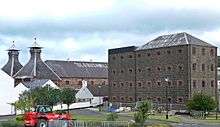
On Christmas Day, goose was initially served at dinner, however since appearing in Christmas tables in England in the late 16th century, the turkey has become more popular, with Christmas pudding served for dessert.[395][396] The 16th-century English navigator William Strickland is credited with introducing the turkey into England, and 16th century farmer Thomas Tusser noted that by 1573 turkeys were common in the English Christmas dinner.[397] This custom gave rise to the humorous English idiom, "like turkeys voting for Christmas".[398] The turkey is sometimes accompanied with roast beef or ham, and is served with stuffing, gravy, roast potatoes, mashed potatoes and vegetables. Invented in London in the 1840s, Christmas crackers are an integral part of Christmas celebrations, often pulled before or after dinner, or at parties.[399]
Chinese restaurants and takeaways (in addition to Indian) are among the most popular ethnic food in the UK.[400] Chinese takeaways are a common sight in towns throughout the UK, and many serve a pseudo-Chinese cuisine based around western tastes (such as chicken fried rice, chips and curry sauce).[401]
Home baking has always been a significant part of British home cooking, with influential cookbooks including The Experienced English Housekeeper (1769), and Modern Cookery for Private Families (1845). However, the massive success of the 2010s television show The Great British Bake Off is credited with spurring a renewed interest in home baking, with supermarkets and department stores in the UK reporting sharp rises in sales of baking ingredients and accessories.[402]
The earliest recipe for the crisp (potato chip) is in food writer William Kitchiner's 1822 cookbook The Cook's Oracle.[403] The crisp market in the UK is dominated by Walkers, which holds 58 per cent of the market.[404] The Quakers, founded in England by George Fox in the 1650s and described by the BBC as "natural capitalists", had a virtual monopoly in the British chocolate industry for much of the nineteenth and twentieth centuries, led by Cadbury of Birmingham, Fry's of Bristol and Rowntree's and Terry's of York.[405] British chocolate bars; Cadbury Dairy Milk, Galaxy and Kit Kat, are the three best selling bars in the UK.[406] Cadbury Creme Eggs are the best selling confectionery item between New Year's Day and Easter in the UK, with annual sales in excess of 200 million.[407] A stick of rock (a hard cylindrical stick-shaped boiled sugar) is a traditional British seaside sweet, commonly sold at seaside resorts throughout the UK such as Brighton, Portrush and Blackpool.[408] A "99 Flake" (commonly called a "99") which consists of ice cream in a cone with a Cadbury Flake inserted in it, is a hugely popular British dessert.[409]
Sport
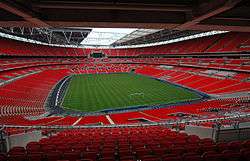
Most of the major sports have separate administrative structures and national teams for each of the countries of the United Kingdom. Though each country is also represented individually at the Commonwealth Games, there is a single 'Team GB' (for Great Britain) that represents the UK at the Olympic Games. With the rules and codes of many modern sports invented and codified in late 19th century Victorian Britain, in 2012, IOC President Jacques Rogge stated; "This great, sports-loving country is widely recognized as the birthplace of modern sport. It was here that the concepts of sportsmanship and fair play were first codified into clear rules and regulations. It was here that sport was included as an educational tool in the school curriculum".[410][411]

The most popular sport in the UK is association football.[412] The rules were first drafted in England in 1863 by Ebenezer Cobb Morley, and the UK has the oldest football clubs in the world.[413] England is recognised as the birthplace of club football by FIFA, with Sheffield F.C., founded in 1857, the world's oldest football club.[414] The home nations all have separate national teams and domestic competitions, most notably England's Premier League and FA Cup, and the Scottish Premiership and Scottish Cup. The top three Welsh football clubs feature in the English league system. The first ever international football match was between Scotland and England in 1872.[415] Referred to as the "home of football" by FIFA, England hosted the 1966 FIFA World Cup, and won the tournament.[416]
Early references to dribbling come from accounts of medieval football games in England. Geoffrey Chaucer offered an allusion to such ball skills in fourteenth century England. In the Canterbury Tales he uses the following line: "rolleth under foot as doth a ball"
—Quote from Chaucer's 14th century work, The Knight's Tale.[417]
The English Premier League (formed in 1992 by member clubs of the old Football League First Division) is the most-watched football league in the world,[418] and its biggest clubs include Manchester United, Liverpool, Arsenal, Chelsea, Tottenham Hotspur and Manchester City. Scotland's Celtic and Rangers also have a global fanbase. The current English champions are Leicester City who were 5,000-1 outsiders at the start of the season.[419] By some measures it was the greatest sporting upset ever: multiple bookmakers had never paid out at such long odds for any sport.[419] The best-placed teams in the domestic leagues of England and Scotland qualify for Europe's premier competition, the UEFA Champions League, where the competition's anthem, written by English composer Tony Britten, is played before each game.[420] Henry Lyte's Christian hymn "Abide With Me" is sung prior to kick-off at every FA Cup Final, a tradition since 1927.[421] Football in Britain is renowned for the intense rivalries between clubs and the passion of the supporters, which includes a tradition of football chants, such as, "You're Not Singing Any More" (or its variant "We Can See You Sneaking Out!"), sung by jubilant fans towards the opposition fans who have gone silent (or left early).[422] Throughout the UK, meat pies (as well as burgers and chips) is a traditional hot food eaten at football games either before kick-off or during half time.[423]

The modern game of golf originated in Scotland, with the Fife town of St Andrews known internationally as the "Home of golf".[424] and to many golfers the Old Course, an ancient links course dating to before 1574, is considered to be a site of pilgrimage.[425] In 1764, the standard 18 hole golf course was created at St Andrews when members modified the course from 22 to 18 holes.[426] Golf is documented as being played on Musselburgh Links, East Lothian, Scotland as early as 2 March 1672, which is certified as the oldest golf course in the world by Guinness World Records.[427] The oldest known rules of golf were compiled in March 1744 in Leith.[428] The oldest golf tournament in the world, and the first major championship in golf, The Open Championship, first took place in Ayrshire, Scotland in 1860, and today it is played on the weekend of the third Friday in July.[429] Golf's first superstar Harry Vardon, a member of the fabled Great Triumvirate who were pioneers of the modern game, won the Open a record six times.[430] Since the 2010s, three Northern Irish golfers have had major success; Graeme McDowell, Darren Clarke and four time major winner Rory McIlroy.[431] The biennial golf competition, the Ryder Cup, is named after English businessman Samuel Ryder who sponsored the event and donated the trophy.[432] Sir Nick Faldo is the most successful Ryder Cup player ever, having won the most points (25) of any player on either the European or U.S. teams.[433]

In 1845, rugby union was created when the first rules were written by pupils at Rugby School, Warwickshire.[434] A former pupil of the school William Webb Ellis, is often fabled with the invention of running with the ball in hand in 1823.[435] The first rugby international took place on 27 March 1871, played between England and Scotland.[436] By 1881 both Ireland and Wales had teams, and in 1883 the first international competition the annual Home Nations Championship took place. In 1888, the Home Nations combined to form what is today called the British and Irish Lions, who now tour every four years to face a Southern Hemisphere team.[437] The major domestic club competitions are the Premiership in England and the Celtic League in Ireland, Scotland, Wales and (since 2010) Italy. In 1895, rugby League was created in Huddersfield, West Yorkshire, as the result of a split with the other Rugby code.[438] The Super League is the sports top-level club competition in Britain, and the sport is especially popular in towns in the northern English counties of Yorkshire, Lancashire and Cumbria.[438] The Challenge Cup is the major rugby league cup competition.[438]

The modern game of tennis originated in Birmingham, England in the 1860s,[440] and after its creation, tennis spread throughout the upper-class English-speaking population, before spreading around the world.[441] Major Walter Clopton Wingfield is credited as being a pioneer of the game.[442] The world's oldest tennis tournament, the Wimbledon championships, first occurred in 1877, and today the event takes place over two weeks in late June and early July.[439] Created in the Tudor period in the court of Henry VIII, the English Strawberries and cream is synonymous with the British summer, and is famously consumed at Wimbledon.[443] The eight-time Slam winner and Britain's most successful player Fred Perry, is one of only seven men in history to have won all four Grand Slam events.[444] The 2013 and 2016 Wimbledon champion Andy Murray is Britain's most recent Grand Slam winner.[445]

The 'Queensberry rules', the code of general rules in boxing, was named after John Douglas, 9th Marquess of Queensberry in 1867, that formed the basis of modern boxing.[446] Britain's first heavyweight world champion Bob Fitzsimmons made boxing history as the sport's first three-division world champion.[447] Some of the best contemporary British boxers included; super-middleweight champion Joe Calzaghe, featherweight champion Naseem Hamed, and heavyweight champion Lennox Lewis.[448]
The modern game of cricket was created in England in the 1830s when round arm bowling was legalised, followed by the historical legalisation of overarm bowling in 1864.[449] In 1876–77, an England team took part in the first-ever Test match against Australia. Hugely influential in terms of his importance to the development of the sport, W. G. Grace is regarded as one of the greatest cricket players of all time, and devised most of the techniques of modern batting.[450] The rivalry between England and Australia gave birth to The Ashes in 1882 that has remained Test cricket's most famous contest, and takes place every two years. The County Championship is the domestic competition in England and Wales.

Originating in 17th and 18th-century England, the Thoroughbred is a horse breed best known for its use in horse racing. Horse racing was popular with the aristocrats and royalty of British society, earning it the title "Sport of Kings."[452] Named after Edward Smith-Stanley, 12th Earl of Derby, the Epsom Derby was first run in 1780. The race serves as the middle leg of the Triple Crown, preceded by the 2000 Guineas and followed by the St Leger. The name "Derby" has since become synonymous with great races all over the world, and as such has been borrowed many times in races abroad.[453]
The National Hunt horse race the Grand National, is held annually at Aintree Racecourse in early April. It is the most watched horse race in the UK, attracting casual observers, and three-time winner Red Rum is the most successful racehorse in the event's history.[454] Red Rum is the best-known racehorse in the UK, named by 45% of Britons, with Black Beauty (from Anna Sewell's novel) in second with 33%.[455]
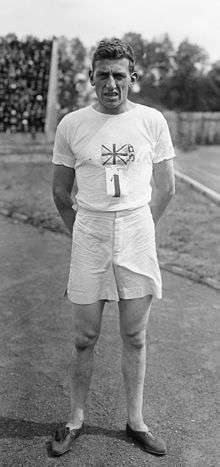
Bolton company J.W. Foster and Sons's pioneering running spikes appear in the book, Golden Kicks: The Shoes that changed Sport.[456] They were made famous by 1924 100 m Olympic champion Harold Abrahams who would be immortalised in Chariots of Fire, the British Oscar winning film.[456] Foster's grandsons formed the sportswear company Reebok in Bolton.[456]
The 1950 British Grand Prix was the first Formula One World Championship race.[457] Since then, Britain has produced some of the greatest drivers in the sport, including; Stirling Moss, Jim Clark (twice F1 champion), Graham Hill (only driver to have won the Triple Crown), Jackie Stewart (three time F1 champion), James Hunt, Nigel Mansell (only man to hold F1 and IndyCar titles at the same time) and Lewis Hamilton. The British Grand Prix is held at Silverstone every July. Other major sporting events in the UK include the London Marathon, and The Boat Race on the River Thames. Cycling is a popular physical activity in the UK. In 1888, inventor Frank Bowden founded the Raleigh Bicycle Company, and by 1913, Raleigh was the biggest bicycle manufacturing company in the world.[458] The Raleigh Chopper was named in the list of British design icons.[459] In 1965 Tom Simpson became the first British world road race champion, and in 2012 Bradley Wiggins became the first British Tour de France winner. Chris Froome has subsequently won the Tour de France three times (2013, 2015 and 2016) while sprint specialist Mark Cavendish has won thirty Tour de France stages, putting him second on the all-time list.
_Moscow_2013.jpg)
A great number of major sports originated in the United Kingdom, including association football, golf, tennis, boxing, rugby league, rugby union, cricket, field hockey, snooker, darts, billiards, squash, curling and badminton, all of which are popular in Britain. Another sport invented in the UK was baseball,[460][461] and its early form rounders is popular among children in Britain.[462] Snooker and darts are popular indoor games: Stephen Hendry is the seven time world snooker champion, Phil Taylor is the 16 time world darts champion. Gaelic football is very popular in Northern Ireland, with many teams from the north winning the All-Ireland Senior Football Championship since the early 2000s. William Penny Brookes was prominent in organising the format for the modern Olympic Games, and In 1994, then President of the IOC, Juan Antonio Samaranch, laid a wreath on Brooke's grave, and said, "I came to pay homage and tribute to Dr Brookes, who really was the founder of the modern Olympic Games".[463] The Highland games are held throughout the year in Scotland as a way of celebrating Scottish and Celtic culture and heritage, especially that of the Scottish Highlands, with more than 60 games taking place across the country every year.[464] Each December, the BBC Sports Personality of the Year is announced, as voted for by the British public. In 2002 Channel 4 broadcast the 100 Greatest Sporting Moments, as voted for by the UK public.[465]
Board games
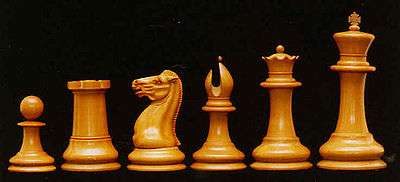
By the early decades of the 19th century, it was all too clear that there was a great need for a chess set with pieces that were easy to use and universally recognized by chess players of diverse backgrounds. The solution, first released in 1849 by the purveyors of fine games, John Jaques of London, sport and games manufacturers, of Hatton Garden, London, was to become known as the Staunton chess set after Howard Staunton (1810–1874), the chess player and writer. The design became the standard for both professional and amateur chess players ever since.[466]
In the 1760s John Spilsbury invented the jigsaw puzzle.[467] He affixed a world map to wood and carved each country out to create the first puzzle, and called them “Dissected Maps”.[467] Another significant game invented in the UK was the murder mystery game Cluedo, which was first manufactured by Waddingtons in 1949.[468]
System of measurement, roads

The use of the British imperial system of measure, particularly among the public, is widespread in the United Kingdom and is permitted by the law.[469] Distance, height, weight and speed are the most common examples of such usage. An example of giving one's body weight would be; 11 and a half stone, or 11 stone and 7 pounds.[470] Height is commonly given in feet and inches.[471]

Road-sign distances must be in yards and miles, while miles per hour appear on road signs and car speedometers.[472] Imperial units (such as pounds and ounces) are legally permitted on UK goods after the European Commission announced in 2007 that it was to abandon the requirement for metric-only labelling on packaged goods in the UK and to allow dual metric–imperial marking to continue indefinitely.[473]
British people drive on the left, with research showing that countries driving on the left have a lower collision rate than countries driving on the right, and it has been suggested that this is partly because the predominantly better-performing right eye is used to monitor oncoming traffic and the driver's wing mirror.[474] The name of the zebra crossing is attributed to British MP James Callaghan who, in 1948, visited the country's Transport Research Laboratory which was working on a new idea for safe pedestrian crossings. On being shown a design he is said to have remarked that it resembled a zebra.[475] Located in Birmingham, the Gravelly Hill Interchange's colloquial name "Spaghetti Junction" was coined in 1965 by journalists from the Birmingham Evening Mail on 1 June 1965.[476] In 1971, the Green Cross Code was introduced to teach children safer crossing habits. The building of roundabouts (circular junction) grew rapidly in the 1960s, with more than 10,000 now throughout the UK [477] The Cat's eye retroreflective safety device used in road marking was invented by Percy Shaw in 1933.[478]
Automobiles

The UK has had a long history of car making, with some of the best known British brands including, Rolls Royce, Bentley, Aston Martin, Jaguar, Land Rover and the Mini. Rolls-Royce was founded by Charles Stewart Rolls and Sir Frederick Henry Royce in 1906. In addition to the company's reputation for superior engineering quality for its cars, Rolls-Royce Limited was known for manufacturing the high-powered "R" engines, including the iconic Rolls-Royce Merlin aero engine which fitted into many World War II aircraft.[479] Bentley Motors Limited was founded by W. O. Bentley in 1919 in Cricklewood, North London, and, like Rolls Royce, is regarded as a British luxury automobile icon. Aston Martin was founded in 1913 by Lionel Martin and Robert Bamford, and became associated with luxury grand touring cars in the 1950s and 1960s, and with the fictional character James Bond.[480] Jaguar was founded in 1922. The Jaguar E-Type sports car was released in 1961, upon which Enzo Ferrari called it "the most beautiful car ever made".[481] Jaguar has, in recent years, manufactured cars for the British Prime Minister.[482] The company also holds royal warrants from Queen Elizabeth II and Prince Charles.[483] The Land Rover launched in 1948 and specialises in four-wheel-drive. Many models have been developed for the UK Ministry of Defence (MoD). The mini was released by the British Motor Corporation in 1959 and became a 1960s cultural icon. The performance versions, the Mini Cooper, was a successful rally car. The distinctive two-door mini was designed for BMC by Sir Alec Issigonis. It has been named Britain's favourite car in a poll.[484]
Sea, rail transport to continental Europe

As an island nation, transport by boat to the European mainland (continental Europe) was the most common form of transport from the UK prior to air travel. The closest route is Dover in England to Calais in France, at 21 miles. The White Cliffs of Dover are at one end of the Kent Downs designated Area of Outstanding Natural Beauty.[485] The cliff face goes up to 350 feet and the cliffs stretch for 8 miles of coastline.[486] The National Trust calls the cliffs "an icon of Britain", with "the white chalk face a symbol of home and war time defense."[487] Because crossing at Dover was the primary route to the continent before the advent of air travel, the white line of cliffs also formed the first or last sight of Britain for travellers. In World War II, thousands of allied troops on the little ships in the Dunkirk evacuation saw the welcoming sight of the cliffs.[488]
The Port of Dover is the world's busiest passenger port, with 16 million travellers, 2.1 million lorries, 2.8 million cars and motorcycles and 86,000 coaches passing through it each year.[489] P&O Ferries is the UK's largest ferry operator at Dover. Built in 1994, the Channel Tunnel is a rail tunnel linking Folkestone, Kent, in England with Coquelles in northern France, beneath the English Channel at the Strait of Dover. The rail tunnel stretches 31 miles, and at its lowest point the tunnel is 250 feet undersea.[490] The tunnel carries high-speed Eurostar passenger trains, the Eurotunnel Shuttle for road vehicles—the largest such transport in the world—and international freight trains.
Healthcare

Each of the four countries of the UK has a publicly funded health care system referred to as the National Health Service (NHS). The terms "National Health Service" or "NHS" are also used to refer to the four systems collectively. All of the services were founded in 1948, based on legislation passed by the Labour Government that had been elected in 1945 with a manifesto commitment to implement the Beveridge Report recommendation to create "comprehensive health and rehabilitation services for prevention and cure of disease".[491]
The NHS was born out of a long-held ideal that good healthcare should be available to all, regardless of wealth. At its launch by the then minister of health, Aneurin Bevan, on 5 July 1948, it had at its heart three core principles: That it meet the needs of everyone, that it be free at the point of delivery, and that it be based on clinical need, not ability to pay.[492] The NHS had a prominent slot during the 2012 London Summer Olympics opening ceremony directed by Danny Boyle, being described as "the institution which more than any other unites our nation", according to the programme.[493]
Florence Nightingale laid the foundation of modern nursing with the establishment of her nursing school at St Thomas' Hospital in London.[494] It was the first secular nursing school in the world, now part of King's College London. Nightingale wrote Notes on Nursing in 1859. The book served as the cornerstone of the curriculum at the Nightingale School and other nursing schools.[495] The Nightingale Pledge is taken by new nurses, and the annual International Nurses Day (12 May) is celebrated around the world on her birthday.[496] Her social reforms improved healthcare for all sections of society in the UK and around the world.[497]
Pets
The top 5 pets in the UK for 2010, starting with the most popular, are: Fish: over 40 million (indoor and outdoor), Dogs: around 8 million, Cats: around 8 million, Rabbits: around 1 million, Birds: around 1 million (indoor).[499] Founded in 1824, the Royal Society for the Prevention of Cruelty to Animals (RSPCA) is the oldest and largest animal welfare organisation in the world.[500]

The British Shorthair cat is the most popular pedigreed breed in its native country, as registered by the UK's Governing Council of the Cat Fancy (GCCF). The breed's good-natured appearance and relatively calm temperament make it a frequent media star. The cat's profile reads: "When gracelessness is observed, the British Shorthair is duly embarrassed, quickly recovering with a 'Cheshire cat smile'”.[501] There are almost 1 million horses and ponies in the UK, with popular native breeds including Clydesdale horse (used as drum horses by the British Household Cavalry), Thoroughbred (used in horse racing), Cleveland Bay (pull carriages in royal processions), Highland pony and Shetland pony.
Some of the UK's indigenous dog breeds include; Bulldog, Jack Russell Terrier, Golden Retriever, Yorkshire Terrier, Airedale Terrier, Beagle, Border Collie, Staffordshire Bull Terrier, English Cocker Spaniel, Scottish Terrier, Welsh Corgi, Bullmastiff, Greyhound, English Springer Spaniel and Old English Sheepdog.
The Kennel Club with its headquarters in London, is the oldest kennel club in the world, and is the governing body of dogs in the United Kingdom. Its main objectives are to promote the general improvement of dogs and responsible dog ownership.[502] Held since 1891, Crufts is an annual dog show in the UK. The event takes place over four days in early March. In 1928, the very first winner of Best in Show at Crufts was Primley Sceptre, a Greyhound.[503]
National costume and dress


As a multi-national state,[504][505] the UK has no single national costume. However, different countries within the United Kingdom have national costumes or at least are associated with styles of dress. Scotland has the kilt and Tam o'shanter, and tartan clothing – pattern consisting of criss-crossed horizontal and vertical bands in multiple colours – is a notable aspect of Gaelic culture.[506] A traditional Welsh costume with Welsh hat is worn by some women during Eisteddfodau. In England, the topic of a national costume has been in debate, since no officially recognized clothing is anointed "national". However, the closest to a national costume can be the smock or smock-frock. English Country Clothing is also very popular among rural folk, flat caps and brogue shoes also forming part of the country clothing.[507]
Certain military uniforms such as the Beefeater or the Queen's Guard are considered to be symbolic of Englishness. Morris dancers or the costumes for the traditional English May dance are sometimes cited as examples of traditional English costume, but are only worn by participants in those events. Designed in 1849 by the London hat-makers Thomas and William Bowler, the Bowler hat is arguably the most iconic stereotyped view of an Englishman (complete with Bowler and rolled umbrella), and were commonly associated with city of London businessmen.[508] Traced back to the north of England in the 14th century, the flat cap is associated with the working classes in the UK.[509] The flat cap has seen a 21st-century resurgence in popularity, possibly influenced by various British public figures wearing them, including David Beckham, Guy Ritchie and Harry Styles, with clothing sellers Marks & Spencer reporting that flat cap sales significantly increased in the 2010s.[510]
Burberry is most famous for creating the trench coat: they were worn by British soldiers in the trenches in World War I.[511] Among various British youth subcultures, Dr. Martens boots have been the choice of footwear: in the 1960s skinheads started to wear them, "dms" being the usual naming, and they later became popular among scooter riders, punks, and some new wave musicians.[512] Male mods adopted a sophisticated look that included tailor-made suits, thin ties, button-down collar shirts, Chelsea boots and Clarks desert boots.[513]
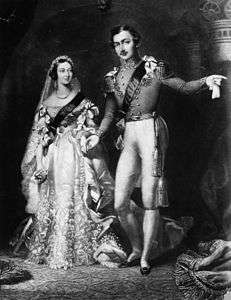
British sensibilities have played an influential role in world clothing since the eighteenth century. Particularly during the Victorian era, British fashions defined acceptable dress for men of business. Key figures such as the future Edward VII, Edward VIII, and Beau Brummell, created the modern suit and cemented its dominance. Brummell is credited with introducing and establishing as fashion the modern man's suit, worn with a tie.[514] The use of a coloured and patterned tie (a common feature in British school uniforms) indicating the wearer's membership in a club, regiment, school, professional association etc. stems from the 1880 oarsmen of Exeter College, Oxford, who tied the bands of their straw hats around their necks.[515] The Wellington boot (first worn by Arthur Wellesley, 1st Duke of Wellington) became a staple for outdoor wear.[516]
The tradition of a white wedding is commonly credited to Queen Victoria's choice to wear a white wedding dress at her wedding to Prince Albert in 1840, at a time when white was associated with purity and conspicuous consumption (because it was difficult to keep clean, and thus could not be worn by servants or labourers), and when it was the colour required of girls being presented to the royal court.[517][518] The 1981 wedding dress of Lady Diana Spencer became one of the most famous dresses in the world,[519] and was considered one of the most closely guarded secrets in fashion history.[520]
Fashion
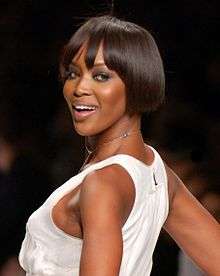
London, as one of the world's four fashion capitals, is host to the London Fashion Week – one of the 'Big Four' fashion weeks.[521] Organised by the British Fashion Council, the event takes place twice each year, in February and September. The current venue for most of the "on-schedule" events is Somerset House in central London, where a large marquee in the central courtyard hosts a series of catwalk shows by top designers and fashion houses,[522] while an exhibition, housed within Somerset House itself, showcases over 150 designers.[523] However, many "off-schedule" events, such as On|Off and Vauxhall Fashion Scout, are organised independently and take place at other venues in central London.[524]

British designers whose collections have been showcased at the fashion week include Vivienne Westwood, Alexander McQueen and Stella McCartney, while British models who have featured at the event include Kate Moss, Naomi Campbell, Jade Jagger, David Gandy, Cara Delevingne and Rosie Huntington-Whiteley.[525][526] Fashion designer Mary Quant was at the heart of the "Swinging London" scene of the 1960s, and her work culminated in the creation of the miniskirt and hot pants.[527] Quant named the miniskirt after her favourite make of car, the Mini.[528] The Swinging London fashion scene has featured in films, and was spoofed in the Austin Powers comedy series.[529] The English fashion designer Charles Frederick Worth is widely considered the father of Haute couture.[530][531]
Symbols, flags, and emblems
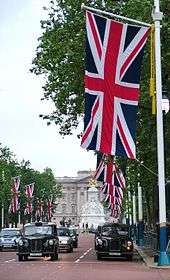
The Union Flag is the national flag of the United Kingdom. Its red, white and blue colours are the combination of the red cross of Saint George for England, the saltire of Saint Andrew for Scotland, and the red saltire of Saint Patrick to represent Ireland.[532] Wales has never been represented on the Union Jack, with the Welsh flag incorporating the Red Dragon of Cadwaladr, King of Gwynedd, along with the Tudor colours of green and white.[533]
The patron saint of Ireland (St Patrick), England (St George), Wales (St David), and Scotland (St Andrew), are celebrated annually; Saint David's Day on 1 March, Saint Patrick's Day on 17 March, St George's Day on 23 April, and St. Andrew's Day on 30 November.[534]
In 1198, King Richard the Lionheart introduced royal arms, depicting "three lions"; they remain the coat of arms of England to this day.[535] The coat of arms of Scotland feature a "red rampant lion" situated within a red double border decorated with fleurs-de-lis (known as the royal tressure). The coat of arms of Ireland features a gold harp with silver strings on a blue background, which dates from the 13th century. When the crowns of England, Scotland and Ireland were united in 1603, they were integrated into the unified royal coat of arms
Each of the four countries of the UK has a traditional floral emblem. The red rose is the national flower of England,[536] and its use dates from the reign of Henry VII who chose a red rose, representing Lancaster, and a white rose, representing York.[536] As a result, the English civil wars in the 15th-century came to be called the Wars of the Roses.[537] The national flower of Scotland is the thistle,[538] of Northern Ireland is the flax flower and the shamrock,[539] and of Wales is the daffodil and leek.[540] The Union rose, shamrock and thistle are engrafted on the same stem on the coat of arms of the United Kingdom.[541]
The remembrance poppy has been used in Britain since 1921 to commemorate soldiers who have died in war. In the weeks leading up to Remembrance Sunday they are distributed by The Royal British Legion in return for donations to their "Poppy Appeal", which supports all current and former British military personnel.[543] The poppies are widespread in the UK from late October until mid-November every year and are worn by the general public, politicians, the Royal Family and others in public life. It has also become common to see poppies on cars, lorries and public transport such as aeroplanes, buses, and trams, while magazines and newspapers also show a poppy on their cover page.[544]
The Tomb of the Unknown Warrior is an unidentified British soldier killed on a European battlefield during World War I, who was buried in Westminster Abbey, London on 11 November 1920. The idea of a Tomb of the Unknown Soldier was first conceived in 1916 by the Reverend David Railton, who, while serving as a British Army chaplain on the Western Front, had seen a grave marked by a rough cross, which bore the pencil-written legend 'An Unknown British Soldier'.[545] He proposed that an unidentified British soldier be buried with due ceremony in Westminster Abbey "amongst the kings" to represent the many hundreds of thousands of Empire dead. The idea was strongly supported by the Dean of Westminster and the British Prime Minister David Lloyd George.[545]
Traditional communication and greeting cards

A familiar sight throughout the UK, the red telephone box and Royal Mail red post box are considered British cultural icons.[546] Designed by Sir Giles Gilbert in 1924, the red telephone box features a prominent crown representing the British government. The post pillar box was introduced in the 1850s during the reign of Queen Victoria following Sir Rowland Hill's postal reforms in the 1830s where the reduction in postal rates with the invention of the postage stamp (Penny Black) made sending post an affordable means of personal communication.[296]
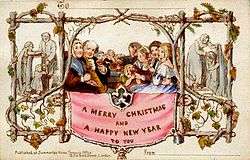

The world's first postcard was received by Theodore Hook from Fulham, London in 1840.[547] The first pillar boxes had the distinctive Imperial cypher of Victoria Regina. Most pillar boxes produced after 1905 are made of cast iron and are cylindrical, and have served well throughout the reigns of George V, Edward VIII, George VI and Elizabeth II.[548]
The sending and receiving of greeting cards is an established tradition in the UK, with card sending or card display in the home being an important part of British culture.[549]
Sir Henry Cole devised the concept of sending greetings cards at Christmas time.[550] Designed by John Callcott Horsley for Cole in 1843, the Christmas card accounts for almost half of the volume of greeting card sales in the UK, with over 600 million cards sold annually.[549] The robin is a common sight in gardens throughout the UK. It is relatively tame and drawn to human activities, and is frequently voted Britain's national bird in polls.[551] The robin began featuring on many Christmas cards in the mid 19th century. The association with Christmas arises from postmen in Victorian Britain who wore red jackets and were nicknamed "Robins"; the robin featured on the Christmas card is an emblem of the postman delivering the card.[552]
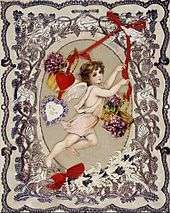
Sending Valentine's Day cards became hugely popular in Britain in the late 18th century, a practice which has since spread to other nations.[553] The day first became associated with romantic love within the circle of Geoffrey Chaucer in the 14th century, when the tradition of courtly love flourished.[554] In Chaucer's Parlement of Foules (1382) he wrote; For this was on seynt Volantynys day. When euery bryd comets there to chese his make.[554] The modern cliché Valentine's Day poem can be found in the 1784 English nursery rhyme Roses Are Red; "The rose is red, the violet's blue. 'The honey's sweet, and so are you. Thou art my love and I am thine. I drew thee to my Valentine."[555]
In 1797, a British publisher issued The Young Man's Valentine Writer which contained scores of suggested sentimental verses for the young lover unable to compose his own. In 1835, 60,000 Valentine cards were sent by post in the UK, despite postage being expensive.[556] A reduction in postal rates (with the 1840 invention of the postage stamp, the Penny Black) increased the practice of mailing Valentines, with 400,000 sent in 1841.[557] In the UK just under half the population spend money on their Valentines.[558] Other popular occasions for sending greeting cards in the UK are Birthdays, Mother’s Day, Easter and Father’s Day.[549][550]
Education
Each country of the United Kingdom has a separate education system. Power over education matters in Scotland, Wales and Northern Ireland is devolved but education in England is dealt with by the UK government since there is no devolved administration for England.
England
Most schools came under state control in the Victorian era, a formal state school system was instituted after the Second World War. Initially schools were separated into infant schools (normally up to age 4 or 5), primary schools and secondary schools (split into more academic grammar schools and more vocational secondary modern schools). Under the Labour governments of the 1960s and 1970s most secondary modern and grammar schools were combined to become comprehensive schools. England has many prominent private schools, often founded hundreds of years ago, which are known as public schools or independent schools. Eton, Harrow, Shrewsbury and Rugby are four of the better known. Most primary and secondary schools in both the private and state sectors have compulsory school uniforms. Allowances are almost invariably made, however, to accommodate religious dress including the Islamic hijab and Sikh bangle (kara).
Although the Minister of Education is responsible to Parliament for education, the day-to-day administration and funding of state schools is the responsibility of local education authorities.
England's universities include some of the highest-ranked universities in the world; the University of Cambridge, Imperial College London, the University of Oxford and University College London are all ranked in the global top 10 in the 2010 QS World University Rankings.[559] The London School of Economics has been described as the world's leading social science institution for both teaching and research.[560] The London Business School is considered one of the world's leading business schools and in 2010 its MBA programme was ranked best in the world by the Financial Times.[561] Academic degrees in England are usually split into classes: first class (I), upper second class (II:1), lower second class (II:2) and third (III), and unclassified (below third class).
Northern Ireland
The Northern Ireland Assembly is responsible for education in Northern Ireland though responsibility at a local level is administered by 5 Education and Library Boards covering different geographical areas.
Scotland
Scotland has a long history of universal provision of public education which, traditionally, has emphasised breadth across a range of subjects compared to depth of education over a smaller range of subjects at secondary school level. The majority of schools are non-denominational, but by legislation separate Roman Catholic schools, with an element of control by the Roman Catholic Church, are provided by the state system. Qualifications at the secondary school and post-secondary (further education) level are provided by the Scottish Qualifications Authority and delivered through various schools, colleges and other centres. Political responsibility for education at all levels is vested in the Scottish Parliament and the Scottish Executive Education and Enterprise, Transport & Lifelong Learning Departments. State schools are owned and operated by the local authorities which act as Education Authorities, and the compulsory phase is divided into primary school and secondary school (often called High school, with the world's oldest high school being the Royal High School, Edinburgh in 1505,[562][563] which colonists spread to the New World owing to the high prestige enjoyed by the Scottish educational system.). Schools are supported in delivering the National Guidelines and National Priorities by Learning and Teaching Scotland.
Scottish universities generally have courses a year longer than their counterparts elsewhere in the UK, though it is often possible for students to take a more advanced specialised exams and join the courses at the second year. One unique aspect is that the ancient universities of Scotland issue a Master of Arts as the first degree in humanities. The University of Edinburgh is among the top twenty universities in the world according to the QS World University Rankings 2011. It is also one among the Ancient Universities in Great Britain.
Wales
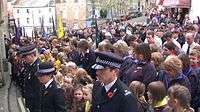
The National Assembly for Wales has responsibility for education in Wales. A significant number of students in Wales are educated either wholly or largely through the medium of Welsh and lessons in the language are compulsory for all until the age of 16. There are plans to increase the provision of Welsh Medium schools as part of the policy of having a fully bi-lingual Wales.
Outdoor education
Scouting is the largest co-educational youth Movement in the UK.[564] Scouting began in 1907 when Robert Baden-Powell, Lieutenant General in the British Army, held the first Scout camp at Brownsea Island in Dorset, England.[565] Baden-Powell wrote the principles of Scouting in Scouting for Boys in 1908.[566] In July 2009, adventurer Bear Grylls became the youngest Chief Scout ever, aged 35.[567] In 2010, Scouting in the UK experienced its biggest growth spurt since 1972, taking total membership to almost 500,000.[564]
Sociological issues
Housing

The UK has one of the highest population densities in the world.[568] Housing, therefore, tends to be more closely packed than in other countries, resulting in a particular affinity with the terraced house, dating back to the aftermath of the Great Fire of London.[569]
As the first industrialised country in the world, the UK has long been urbanised.[570] In the twentieth century, the process of suburbanisation led to a spread of semi-detached and detached housing. In the aftermath of the second world war, public housing was dramatically expanded to create a large number of council estates.
There is a wealth of historic country houses and stately homes in rural areas, though the majority of these are now put to other uses than private living accommodation.
In recent times, more detached housing has started to be built. Also, city living has boomed with city centre population's rising rapidly. Most of this population growth has been accommodated through new apartment blocks in residential schemes, such as those in Leeds, Birmingham and Manchester. Demographic changes (see below) are putting great pressure on the housing market, especially in London and the South East.
Living arrangements

Historically most people in the United Kingdom lived either in conjugal extended families or nuclear families. This reflected an economic landscape where the general populace tended to have less spending power, meaning that it was more practical to stick together rather than go their individual ways. This pattern also reflected gender roles. Men were expected to go out to work and women were expected to stay at home and look after the families.

In the 20th century the emancipation of women, the greater freedoms enjoyed by both men and women in the years following the Second World War, greater affluence and easier divorce have changed gender roles and living arrangements significantly. The general trend is a rise in single people living alone, the virtual extinction of the extended family (outside certain ethnic minority communities), and the nuclear family arguably reducing in prominence.
From the 1990s, the break-up of the traditional family unit, when combined with a low interest rate environment and other demographic changes, has created great pressure on the housing market, in particular regarding the accommodation of key workers such as nurses, other emergency service workers and teachers, who are priced out of most housing, especially in the South East.
Some research indicates that in the 21st century young people are tending to continue to live in the parental home for much longer than their predecessors.[571] The high cost of living, combined with rising cost of accommodation, further education and higher education means that many young people cannot afford to live independent lives from their families.
Anglophilia
A lover of British culture is known as an Anglophile.[572]
Naming conventions
The common naming convention throughout the United Kingdom is for everyone to have a given name (a forename, still often referred to as a Christian name) usually (but not always) indicating the child's sex, often followed by one or more middle names, and a surname (family name).[573] A four-year study by the University of the West of England, which concluded in 2016, analysed sources dating from the 11th to the 19th century to explain the origins of the surnames in the British isles.[574] The study found that over 90% of the 45,602 surnames in the dictionary are native to the British isles, with the most common in the UK being Smith, Jones, Williams, Brown, Taylor, Johnson, and Lee.[574] Since the 19th century middle names have become very common and are often taken from the name of a family ancestor.
Most surnames of British origin fall into seven types:[575]
- Occupations e.g. Smith, Sawyer, Fuller, Brewer, Clark, Cooper, Cook, Carpenter, Bailey, Parker, Forrester, Head, Palmer, Archer, Hunt, Baker, Miller, Dyer, Walker, Woodman, Taylor, Turner, Knight, Slater, Mason, Weaver, Carter, Wright
- Personal characteristics e.g., Short, Brown, Black, Whitehead, Young, Stout, Long, White
- Geographical features e.g., Pond, Bridge, Camp, Hill, Bush, Lake, Lee, Wood, Holmes, Forest, Underwood, Hall, Brooks, Fields, Stone, Morley, Moore, Perry
- Place names e.g., Murray, Everingham, Burton, Leighton, Hamilton, Sutton, Flint, Laughton
- Estate For those descended from land-owners, the name of their holdings, manor or estate
- Patronymics, matronymics or ancestral, often from a person's given name. e.g., from male name: Richardson, Jones (Welsh for John), Williams, Thomas, Jackson, Wilson, Thompson, Johnson, Harris, Evans, Simpson, Willis, Fox, Davies, Reynolds, Adams, Dawson, Lewis, Rogers, Murphy, Nicholson, Robinson, Powell, Ferguson, Davis, Edwards, Hudson, Roberts, Harrison, Watson, or female names Molson (from Moll for Mary), Gilson (from Gill), Emmott (from Emma), Marriott (from Mary) or from a clan name (for those of Scottish origin, e.g., MacDonald, Forbes, Henderson, Armstrong, Grant, Cameron, Stewart, Douglas, Crawford, Campbell, Houston, Hunter) with "Mac" Scottish Gaelic for son.[576]
- Patronal from patronage (Hickman meaning Hick's man, where Hick is a pet form of the name Richard) or strong ties of religion Kilpatrick (follower of Patrick) or Kilbride (follower of Bridget).
Traditionally, Christian names were those of Biblical figures or recognised saints; however, in the Gothic Revival of the Victorian era, other Anglo Saxon and mythical names enjoyed something of a fashion among the literati. Since the 20th century, however, first names have been influenced by a much wider cultural base. For example, Jennifer is a Cornish form of Guinevere/Gwenhwyfar (from Arthurian romance), and it gained recognition after George Bernard Shaw used it for the main female character in his play The Doctor's Dilemma (1906): Jennifer first entered the top 100 most commonly used names for baby girls in England and Wales in 1934.[577]
See also:
- Most popular names of England and Wales
- Most popular names of Northern Ireland
- Most popular names of Scotland
- Most common surnames in England
- Most common surnames in Northern Ireland
- Most common surnames in Scotland
- Most common surnames in Wales
See also
- British humour
- Department for Culture, Media and Sport (deals with Culture for England)
- Minister for Culture and External Affairs (deals with Culture for Scotland)
- Shrove Tuesday (Pancake Day)
- April Fools' Day
- Lord Kitchener Wants You
Notes
- ↑ English is established by de facto usage. In Wales, the Bwrdd yr Iaith Gymraeg is legally tasked with ensuring that "in the conduct of public business and the administration of justice, the English and Welsh languages should be treated on a basis of equality".Welsh Language Act 1993, Office of Public Sector Information, retrieved 3 September 2007 Bòrd na Gàidhlig is tasked with "securing the status of the Gaelic language as an official language of Scotland commanding equal respect to the English language" Gaelic Language (Scotland) Act 2005, Office of Public Sector Information, retrieved 9 March 2007 Archived 1 February 2010 at WebCite
- ↑ Under the European Charter for Regional or Minority Languages the Welsh, Scottish Gaelic, Cornish, Irish, Ulster Scots and Scots languages are officially recognised as Regional or Minority languages by the UK Government (European Charter for Regional or Minority Languages, Scottish Executive, retrieved 23 August 2007) See also Languages of the United Kingdom. Archived 1 February 2010 at WebCite
References
- ↑ "The cultural superpower: British cultural projection abroad". Journal of the British Politics Society, Norway. Volume 6. No. 1. Winter 2011
- ↑ Sheridan, Greg (15 May 2010). "Cameron has chance to make UK great again". The Australian. Sydney. Retrieved 20 May 2012.
- ↑ Calder, Simon (22 December 2007). "London, capital of the world". The Independent. London.
- ↑ "London is the world capital of the 21st century... says New York | News". Evening Standard. London. Archived from the original on 25 January 2012. Retrieved 10 February 2012.
- ↑ "London is world capital of culture says LSE expert – 2008 – News archive – News – News and media – Home". .lse.ac.uk. Retrieved 10 February 2012.
- ↑ Swaine, Jon (13 January 2009) Barack Obama presidency will strengthen special reŶlationship, says Gordon Brown The Daily Telegraph. Retrieved 3 March 2010.
- ↑ E. J. Kirchner and J. Sperling, Global Security Governance: Competing Perceptions of Security in the 21st Century (London: Taylor & Francis, 2007), p. 100.
- ↑ "Jeremy Paxman: what empire did for Britain". London: The Telegraph. 2 October 2011. Retrieved 19 November 2011.
- ↑ BBC – Languages – United Kingdom BBC
- ↑ Dobson, Michael (1992), The making of the national poet, p.185–196. Oxford, England: Oxford University Press.
- ↑ New Scots Makar opens Robert Burns Birthplace Museum BBC News. Retrieved 15 June 2011
- ↑ Lynch, Jack (2003). "Samuel Johnson's Dictionary". p. 1.
- 1 2 "Survey reveals 50 books that every child should read by 16". The Telegraph. (March 2015). Retrieved 16 July 2015. "Roald Dahl is still king of children's literature according to a survey for World Book Day."
- ↑ "Films and British national identity: from Dickens to Dad's army". p.327. Manchester University Press, 1997
- ↑ Hoover, Bob (10 February 2008). "'Gathering' storm clears for prize winner Enright". Pittsburgh Post-Gazette. Retrieved 10 February 2008.
- ↑ "The Big Read – Top 100 Books". BBC. Retrieved 16 July 2015.
- ↑ "Roald Dahl voted best author in primary teachers survey". BBC. (March 2012). Retrieved 16 July 2015
- 1 2 "Bristol Old Vic Theatre marks 250th anniversary". BBC. 30 May 2016.
- ↑ West End theatres in London enjoy record-breaking year BBC News. Retrieved 26 March 2011.
- ↑ London Theatreland. Retrieved 26 March 2011.
- ↑ "Theatre Royal Drury Lane". Victorian Web. Retrieved 26 March 2011.
- ↑ [Downs, Peter. "Actors Cast Away Cares", Hartford Courant, 18 October 2006
- ↑ Dramaticus The stage as it is (1847)
- ↑ James Woodfield (1984) British theatre in transition, 1889–1914 p.94. Rowman & Littlefield. Retrieved 26 May 2011
- ↑ The Royal Academy of Dramatic Art (RADA). Retrieved 16 March 2011.
- ↑ Davis, Peter G (21 January 2002). "Smooth Sailing". Retrieved 6 November 2007.
- ↑ "The Savoy Theatre", The Times, 3 October 1881
- ↑ Description of lightbulb experiment in The Times, 28 December 1881
- ↑ Jeffrey Richards (2007). Sir Henry Irving: A Victorian Actor and His World. A&C Black. p. 109.
- ↑ The Royal Ballet School: A Brief History Archived 4 September 2009 at the Wayback Machine.. Retrieved 16 March 2011.
- 1 2 Sondheim and Lloyd-Webber: the new musical The New York Times.. referred to Andrew Lloyd Webber as "the most commercially successful composer in history"
- ↑ Show Business: Noel Coward at 70 Time Magazine. Retrieved 16 March 2011.
- ↑ BBC – Radio 2 – Elaine Paige BBC Radio
- ↑ "Agatha Christie's: The Mousetrap". St. Martin's Theatre. Retrieved 8 March 2015.
Here you will find all the information you need about the longest running show, of any kind, in the world.
- ↑ "Nation's Number One Essential Musical". BBC.
- ↑ "Matilda musical breaks Olivier awards record". BBC. 15 April 2012. Retrieved 25 November 2016.
- ↑ The Royal Shakespeare Company: About the Plays. Retrieved 16 March 2011.
- ↑ The Nobel Prize in Literature 2005 – Harold Pinter. Retrieved 16 March 2011. Archived 1 February 2010 at WebCite
- ↑ Profile of Tom Stoppard; "And now the real thing" The Guardian. Retrieved 16 March 2011.
- ↑ And Did Those Feet? – Jerusalem – Icons of England Archived 12 December 2009 at the Wayback Machine.
- ↑ Welsh Icons – Land of My Fathers
- ↑ "Trooping of Colour marks Queen's Official Birthday". The Telegraph. Retrieved 3 June 2012
- ↑ "Minor British Institutions: Colonel Bogey". The Independent. Retrieved 4 December 2012
- ↑ Dan Fox (2007) World's Greatest Wedding Music: 50 of the Most Requested Wedding Pieces. p.7. Alfred Music Publishing, 2007 Retrieved 4 January 2011
- ↑ Chappell, William (1966). The Roxburghe Ballads. New York: AMS Press, 1966
- ↑ Geddes MacGregor. Scotland: An Intimate Portrait. p.249. Houghton Mifflin Harcourt, 1990
- ↑ A. Fox, Oral and Literate Culture in England, 1500–1700 p. 202. (Oxford University Press, 2000)
- ↑ H. Carpenter and M. Prichard, The Oxford Companion to Children's Literature (Oxford University Press, 1984), pp. 382–3.
- ↑ A. H. Bullen's 1904 facsimile of Newbery's 1791 edition of Mother Goose's Melody(on-line)
- ↑ James Orchard Halliwell-Phillipps, Popular Rhymes and Nursery Tales: A Sequel to the Nursery Rhymes of England, p. 6. Retrieved 6 October 2014.
- ↑ Lax, Roger (1989). The Great Song Thesaurus. Oxford University Press, 1989
- ↑ Gibson, Bryan (16 November 2016). The Legend of St Yves. Waterside Press. p. 76.
- ↑ Miles, Clement, Christmas customs and traditions, pp. 47–48. Courier Dover Publications, 1976
- ↑ Thomas, John; Talhaiarn; Thomas Oliphant (1862). Welsh melodies: with Welsh and English poetry. London: Addison, Hollier and Lucas. p. 139. OCLC 63015609.
- ↑ "Do They Know It's Christmas?". BBC Radio 2: Sold on Song. BBC. Retrieved 2015-12-22.
- ↑ Bradley, Ian (2013). Lost Chords and Christian Soldiers: The Sacred Music of Arthur Sullivan. SCM Press. p. 72. ISBN 0334044219.
- ↑ "Titanic violin fetches £900,000 record price". BBC. 19 October 2013. Retrieved 8 January 2016.
- ↑ "Sweetheart we love you!". Daily Express. Retrieved 30 December 2012
- ↑ The UK's Best Selling Singles. Retrieved 3 February 2011.
- ↑ Queen head all-time sales chart BBC. Retrieved 3 February 2011. Archived 17 January 2010 at WebCite
- ↑ 1960–1969, EMI Group Ltd, archived from the original on 28 May 2008, retrieved 31 May 2008
- ↑ Paul At Fifty: Paul McCartney Time Magazine. Retrieved 30 April 2010.
- ↑ "Most Successful Group". The Guinness Book of Records 1999, p.230. Retrieved 19 March 2011.
- ↑ 100 Greatest Artists Of All Time: The Beatles (No.1) Rolling Stone. Retrieved 19 March 2011.
- ↑ "Brit awards winners list 2012: every winner since 1977". The Guardian. Retrieved 28 April 2012
- ↑ "Welcome to The Ivor Novello Awards". TheIvors.com. 16 May 2013. Retrieved 29 June 2013.
- ↑ "Angels 'favourite funeral song'". BBC News. 10 March 2005. Retrieved 3 October 2016.
- ↑ "Geri revisits Spice Girls' heyday in Union Jack dress". Hello Magazine. Retrieved 3 February 2015
- ↑ BBC (30 December 2009). "Snow Patrol's Chasing Cars is most played of decade". BBC News. BBC. Retrieved 30 December 2009.
- ↑ Sean Michaels. "James Blunt makes decade's best-selling album". The Guardian. Retrieved 23 October 2013.
- ↑ "Charlie Chaplin". Charlie Chaplin. British Film Institute. Retrieved 7 October 2012.
- ↑ "Louis Le Prince, who shot the world's first film in Leeds". BBC. 24 August 2016.
- 1 2 "Martin Scorsese on world's first colour film discovery". BBC. Retrieved 21 August 2016
- ↑ "Eadweard Muybridge (British photographer)". Encyclopædia Britannica. Retrieved 24 December 2010.
- ↑ Ann Curthoys, Marilyn Lake. Connected worlds: history in transnational perspective, Volume 2004. p.151. Australian National University Press
- ↑ St. Pierre, Paul Matthew (April 1, 2009). Music Hall Mimesis in British Film, 1895-1960: On the Halls on the Screen. New Jersey: Fairleigh Dickinson University Press. p. 79. ISBN 978-1611473995.
- ↑ Richard Allen, S. Ishii-Gonzalès (2004). "Hitchcock: past and future".. p.xv. Routledge, 2004
- ↑ "From Hollywood starlet to wartime angel". Daily Mail. Retrieved 16 February 2014
- ↑ London Symphony Orchestra and Film Music Archived 30 September 2011 at the Wayback Machine. LSO. Retrieved 30 June 2011
- ↑ "The top 21 British directors of all time". The Daily Telegraph
- ↑ "Hitchcock: he always did give us knightmares". Roger Ebert.com. 2 January 1980.
- ↑ "The BFI 100: 1–10". British Film Institute. Retrieved 24 February 2012
- 1 2 Angus Konstam (2008). Piracy: The Complete History. p.313. Osprey Publishing. Retrieved 11 October 2011
- ↑ "AFI's 100 Years... 100 Heroes and Villains". AFI. Retrieved 20 December 2013
- ↑ Forshaw, Barry (20 September 2012). British Crime Film: Subverting the Social Order. Palgrave Macmillan. p. 56. ISBN 978-1-137-18497-9.
- ↑ Crouse, Richard (26 August 2003). The 100 Best Movies You've Never Seen. ECW Press. p. 167. ISBN 978-1-55490-540-9.
- ↑ "Marking Centennial of Cinema, Vatican Names 45 Best Films". Los Angeles Times. Retrieved 21 December 2013
- ↑ Michael Paterson (2003-03-10). "Caine takes top billing for the greatest one-liner on screen". The Daily Telegraph. London. Retrieved 2009-02-08.
- ↑ "The 100 Greatest Movie Characters". Empire. Retrieved 2 April 2013
- ↑ "The 100 Best British Films Ever". Empire. Retrieved 5 January 2013
- ↑ Hallenbeck, Bruce G. (13 May 2009), Comedy-Horror Films, McFarland, pp. 112, ISBN 978-0-7864-3332-2
- ↑ "Daniel Craig to play James Bond in at least two more films". The Guardian. 13 March 2016.
- ↑ Life of Brian tops comedy poll BBC News (Total Film magazine poll: 29 September 2000) Retrieved 3 April 2007
- ↑ Life of Brian named best comedy BBC (Channel 4 poll: 1 January 2006) Retrieved 5 April 2010
- ↑ "Baby boomers jazz up their funerals with Monty Python and fancy dress". UK Telegraph. 21 Nov 2014. Retrieved 25 November 2014.
- ↑ "John Stears, 64, Dies; Film-Effects Wizard". New York Times. Retrieved 30 January 2012
- 1 2 "Jets, jeans and Hovis". The Guardian. 12 June 2015.
- ↑ Russell, Jamie (October 2003). "How "Withnail & I" Became a Cult". BBC. Retrieved 28 December 2010.
- ↑ Stern, Marlow. "Gary Oldman Talks 'Tinker, Tailor, Soldier, Spy,' 'Batman' Retirement". The Daily Beast. 8 December 2011. Retrieved 10 December 2013.
- ↑ Oliver Reed Resurrected On Screen, Internet Movie Database, April 12, 2000, retrieved February 27, 2009
- ↑ "Cineworld buys Picturehouse". The Guardian. Retrieved 10 January 2014
- ↑ Harry Potter tour to open at Leavesden studios in 2012 BBC. Retrieved 12 September 2011
- ↑ Requiem for a Dream – Clint Mansell AllMusic. Retrieved 3 February 2011.
- ↑ "The Longer View: British animation". BBC. Retrieved 5 November 2016.
- ↑ Anita Singh (23 February 2009). "Oscar winners: Slumdog Millionaire and Kate Winslet lead British film sweep". The Daily Telegraph. London. Retrieved 27 September 2010.
- ↑ Oscars 2011: The King's Speech reigns. BBC News. Retrieved 3 March 2011.
- ↑ "Does Andy Serkis's motion capture acting deserve an Oscar?". The Telegraph. Retrieves 11 January 2015
- ↑ "Skyfall tops UK all-time box office". BBC News. Retrieved 6 December 2012
- ↑ "Tim Webber: the man who put Sandra Bullock in space". Evening Standard. Retrieved 15 January 2015
- ↑ "Oscars 2015: Nominations list". BBC. Retrieved 15 January 2015
- ↑ Statistical Yearbook 2011: 7.3 UK directors. UK Film Council.
- ↑ Frazer, Bryant (3 February 2011). "VFX Supervisor Paul Franklin Talks Ingenuity and Inception". Studio Daily. Retrieved 23 February 2015.
- ↑ BBC Archive: Titanic; Survivors of the Titanic tell their stories. Retrieved 3 March 2011.
- ↑ A general history of the robberies & murders of the most notorious pirates. By Charles Johnson Introduction and commentary to A General History of the Pyrates by David Cordingly. Conway Maritime Press (2002).
- ↑ The Eventful History of the Mutiny and Piratical Seizure of H.M.S. Bounty: Its Cause and Consequences by Sir John Barrow, published in 1831, from Project Gutenberg
- ↑ He shot the hero of the Great Escape in cold blood. But was this one Nazi who DIDN'T deserve to hang? Daily Mail. Retrieved 11 January 2011.
- ↑ Barry Ronge's Classic DVD : Alice in Wonderland, The Times, It was made under the personal supervision of Walt Disney, and he took special care when animating British fantasy. He called them his "English Cycle".
- ↑ BSkyB hits 10 million customers target Daily Mail. Retrieved 17 March 2011.
- ↑ "Directory of Production Companies". The International Association of Wildlife Filmmakers. Retrieved 2 February 2015.
- ↑ BFI TV100. Retrieved 4 June 2009.
- ↑ Britain's Best Sitcom Top 10. Retrieved 4 June 2009.
- ↑ "ITV to salute '50 greatest stars'". BBC News. BBC Online. 3 July 2006. Retrieved 9 August 2014.
- ↑ Commercial Television: A Guide to the constitution and working of the new service The Times (19 August 1955)
- ↑ Iain Sinclair (20 January 2011). "The Raging Peloton". 33 (2). London Review of Books: 3–8. Retrieved 11 April 2016.
As proudly as the freshly baked loaves in Ridley Scott’s celebrated commercial, shot in 1973, on the picturesque slopes of Shaftesbury.
- ↑ Ciar Byrne (2 May 2006). "Ridley Scott's Hovis advert is voted all-time favourite". The Independent. Retrieved 2011-02-03.
- ↑ "Spot the link between a gorilla and chocolate", The Independent, 14 May 2007. Retrieved 6 November 2007.
- ↑ "How we resurrected Audrey HepburnTM for the Galaxy chocolate ad". The Guardian. 2 December 2016.
- ↑ Stone, Jason (12 November 2013). "John Lewis Christmas ads: how they evolved from 2007 to 2013". The Guardian. Retrieved 6 November 2014.
- ↑ "Alan Hansen to leave Match of the Day next summer after 22 years as leading BBC pundit". The Telegraph. Retrieved 14 June 2014
- 1 2 "Tracking 30 years of TV's most watched programmes". BBC. Retrieved 20 January 2015
- ↑ "Peter Cook the funniest". The Age. Australia. 3 January 2005.
- ↑ "Spitting Image". The Guardian. Retrieved 2 February 2015
- ↑ "GTA 5: a Great British export". The Telegraph. 17 September 2015.
- ↑ "Features | Britain's Most Watched TV | 1970s". British Film Institute (BFI). Archived from the original on 22 November 2005. Retrieved 22 October 2016.
- ↑ Robinson, James (26 December 2008). "Wallace and Gromit lead BBC to Christmas ratings victory". London: Guardian.co.uk. Retrieved 26 December 2008.
- ↑ "Our History". Comic Relief. Retrieved 15 March 2015.
- ↑ Midgley, Neil (29 January 2012). "Desert Island Discs: Britain's longest-running radio show". The Telegraph. London.
- ↑ Gaiman, Neil (1988). Don't Panic: the official Hitch-Hiker's Guide to the Galaxy Companion. Pocket Books. p. 45. ISBN 1852860138.
- ↑ "Public service content: first report of session 2007–08, Vol. 2: Oral and written evidence"
- ↑ Loxley, Simon (2006). Type: the secret history of letters. I. B. Tauris & Co. Ltd. pp. 130–131. ISBN 1-84511-028-5.
- ↑ "About the newspaper". ft.com. Financial Times. Retrieved 3 June 2015.
- ↑ "The History of Magazines". Magazines.com. 16 September 2016.
- ↑ "National Portrait Gallery - Set - Vanity Fair cartoons". npg.org.uk.
- 1 2 Matthew O Grenby (2013). "Little Goody Two-Shoes and Other Stories: Originally Published by John Newbery". p. vii. Palgrave Macmillan
- ↑ Florence Waters (26 August 2010). "Penguin's pioneering publisher – who never read books". Daily Telegraph. Retrieved 17 February 2014.
- ↑ Daniel Hahn (2015). "The Oxford Companion to Children's Literature". p. 479. Oxford University Press
- ↑ "The History of the Book". Guinness Record Book Collecting. Retrieved 5 September 2016.
- ↑ "Early history of Guinness World Records". 2005. p. 2. Archived from the original on 1 July 2007.
- ↑ Guinness World Records 2005. Guinness; 50th Anniversary edition. 2004. p. 6. ISBN 1892051222.
- ↑ "Guinness Book History 1950 - Present". spyhunter007.com.
- ↑ "Statute of Anne". Copyrighthistory.com. Retrieved 1 January 2015.
- ↑ Ronan, Deazley (2006). Rethinking copyright: history, theory, language. Edward Elgar Publishing. p. 13. ISBN 978-1-84542-282-0. Archived from the original on 1 January 2015.
- ↑ McKenzie, John, Art and Empire, britishempire.co.uk, retrieved 24 October 2008
- ↑ According to Elizabeth Einberg, "by the time he died in October 1764 he had left so indelible a mark on the history of British painting that the term 'Hogarthian' remains instantly comprehensible even today as a valid description of a wry, satirical perception of the human condition." See the exhibition catalog, Hogarth the Painter, London: Tate Gallery, 1997, p. 17.
- ↑ "Satire, sewers and statesmen: why James Gillray was king of the cartoon". The Guardian. 16 June 2015.
- ↑ Museum Selection – Blake, Turner, Constable Tate Britain. Retrieved 3 July 2011
- ↑ "Pop art star knighted". BBC News. 10 October 2002. Retrieved 13 November 2016.
- ↑ Turner, Chris, "The Bronze Age: Henry Moore and his successors", Tate Magazine (6)
- ↑ "World's best-known protest symbol turns 50". BBC News. London. 20 March 2008. Retrieved 25 May 2008.
- ↑ R.W. Patten. "Tatworth Candle Auction." Folklore 81, No. 2 (Summer 1970), 132-135
- ↑ "Christies.com – About Us". Retrieved 3 December 2008.
James Christie conducted the first sale in London on 5 December 1766.
- ↑ Hogrefe, Jeffrey (14 December 1997). "Lucian Freud Bio Killed Amid Much Heavy Breathing". The New York Observer. Retrieved 12 September 2011.
- ↑ Sherwin, Adam (13 November 2013). "When Lucian met Francis: Relationship that spawned most expensive painting ever sold". The Independent. London. Retrieved 13 November 2014.
- ↑ "Historic Figures – Lord Horatio Kitchener (1850–1916)". BBC. Retrieved 31 March 2011
- ↑ Susannah, Walker (2012). "Home Front Posters of the Second World War". p. 45. Shire
- ↑ Hughes, Stuart (4 February 2009). "The Greatest Motivational Poster Ever?". BBC News.
- ↑ Sweeting, Adam (18 April 2013). "Storm Thorgerson dies aged 69: 'the best album designer in the world'". The Guardian. London. Retrieved 2013-04-20.
- ↑ Fiona Pryor (8 February 2007) On the trail of artist Banksy BBC News
- ↑ Jury, Louise (6 November 2016). "Concorde beats Tube map to become Britain's favourite design". The Independent. London.
- 1 2 Morien Morgan (January 1972). ""A new shape in the sky"". Aeronautical Journal.
- ↑ "Dame Zaha Hadid's Brit Awards statuette design unveiled". BBC. 1 December 2016.
- ↑ "Damien Hirst's 2013 Brit Award statue unveiled". BBC. 1 December 2016.
- ↑ Matthew Collin, John Godfrey (2010). "Altered State: The Story of Ecstasy Culture and Acid House" p.258. Retrieved 18 February 2012
- 1 2 Foreman, Susan (2005). London: a musical gazetteer. Yale University Press
- ↑ Margaret Scanlan (2006). "Culture and Customs of Ireland". p. 163. Greenwood Publishing Group
- 1 2 Hyslop, Leah (11 June 2015). "Punch and Judy around the world". The Daily Telegraph. London. The Telegraph.
- ↑ "Mr Punch celebrates 350 years of puppet anarchy". BBC News. BBC. 11 June 2015.
- 1 2 3 "The circus comes to the Circus". BBC News. Retrieved December 13, 2014
- 1 2 Great dynasties of the world: The Chipperfields The Guardian. Retrieved 18 February 2011.
- ↑ Hamilton, John (2000) Entertainment: A Pictorial History of the Past One Thousand Years p.24. Retrieved 3 February 2011.
- ↑ Explore PA history.com – Historical Markers
- ↑ 'Popular Entertainments through the Ages', Samuel McKechnie. London; Sampson Low, Marston & Co Ltd., 1931
- ↑ 20 Years of Laughter, p.14. Turner Publishing Company, 2006
- 1 2 Fringe Facts, Edinburgh Fringe Festival, archived from the original on 14 August 2009, retrieved 2 September 2009
- ↑ "About us", Notting Hill Carnival '13, London Notting Hill Enterprises Trust.
- ↑ Professor David Dabydeen, "Notting Hill Carnival", Yesu Persaud Centre for Caribbean Studies, Warwick.
- 1 2 3 David Christopher (2002). "British Culture: An Introduction". p. 74. Routledge,
- ↑ "It's behind you: To understand the British—and have fun—go and see a Christmas pantomime". The Economist. Retrieved 2 January 2015
- ↑ Billington, Michael. "Aladdin: Old Vic, London", The Guardian, 20 December 2004.
- ↑ "Enjoy Cumbria - Stan Laurel". BBC. Retrieved 2 January 2015
- 1 2 McCabe, John (2004). The Comedy World of Stan Laurel. Robson. p. 143.
Laurel drew his standard comic devices from music hall: the bowler hat, the deep comic gravity, and the nonsensical understatement
- ↑ J. P. Gallagher (1971). "Fred Karno: master of mirth and tears". p. 165. Hale.
- ↑ Castles in Great Britain Heritage Britain. Retrieved 26 June 2011
- ↑ Great Castles of Britain & Ireland. p.43. New Holland Publishers, 2009
- ↑ Great Castles of Britain & Ireland P.79. Retrieved 20 February 2011.
- ↑ "History". Dean and Chapter of Westminster Abbey. Retrieved 19 April 2008.
- ↑ Westminster Abbey.org. Retrieved 18 February 2011.
- ↑ Else, David (2007) Great Britain. Retrieved 18 February 2011.
- ↑ Alec Clifton-Taylor, The Cathedrals of England (Thames & Hudson, 1969)
- ↑ Number 10: History and Tour Official site of the Prime Minister's Office. Retrieved 3 March 2011.
- ↑ British History in depth: Christopher Wren and St Paul's Cathedral BBC. Retrieved 18 February 2011.
- ↑ The British Monarchy: Buckingham Palace Archived 15 May 2016 at the Wayback Machine.. Retrieved 20 February 2011.
- ↑ Stanier, Peter (2000). Stone Quarry Landscapes: The Industrial Archaeology of Quarrying. Stroud: Tempus Press. pp. 100–109. ISBN 978-0-7524-1751-6. OCLC 47830911.
- ↑ Knebworth: The Stately Home of Rock. Retrieved 18 February 2011.
- ↑ Alton Towers Guide: Theme Parks UK. Retrieved 18 February 2011.
- ↑ The lions and loins of Longleat The Sunday Times. Retrieved 18 February 2011.
- 1 2 3 "The expert selection: British seaside piers" (1 August 2014). Financial Times. 15 June 2015.
- ↑ "A very British affair - the fall and rise of the seaside pier". BBC News. 16 June 2015.
- ↑ "Piers". National Piers Society (2006). Retrieved 24 February 2012.
- ↑ Tim Adams: "Anish Kapoor's Orbit tower: the mother of all helter-skelters" in The Guardian, 5 May 2012
- 1 2 "Queen of the curve' Zaha Hadid dies aged 65 from heart attack". The Guardian. 29 November 2016.
- ↑ "Dama Zaha Hadid profile". Design Museum. Retrieved 31 March 2016.
- ↑ "Dame Zaha Hadid awarded the Riba Gold Medal for architecture". BBC News. Retrieved 24 September 2015.
- ↑ 'The Shard’ set to change the London skyline London Offices News. Retrieved 26 March 2011.
- ↑ Helter Skelter Secures Funding Skyscrapernews. Retrieved 26 March 2011.
- ↑ Heron Tower Tops Out Skyscrapernews. Retrieved 26 March 2011.
- ↑ Eden Project gives area £111m boost The Independent. Retrieved 26 March 2011.
- ↑ Birch, Dinah (24 September 2009). The Oxford Companion to English Literature. Oxford: Oxford University Press. p. 240.
- ↑ John Sringhall (July 1994). "Horror Comics: The Nasties of the 1950s". History Today. Questia Online Library. 44 (7). Retrieved 2010-10-23.
- 1 2 Armstrong, Stephen. "Was Pixar's Inside Out inspired by The Beano?" The Telegraph. 27 July 2015
- ↑ Dandy owner DC Thomson to end comic's printed edition, BBC News, 16 August 2012, retrieved 26 November 2016
- ↑ Tomlinson, Alan; Young, Christopher (2000), "Golden Boys and Golden Memories: Fiction, Ideology, and Reality in Roy of the Rovers and the Death of the Hero", in Jones, Dudley; Watkins, Tony, A Necessary Fantasy?: the Heroic Figure in Children's Popular Culture: Vol 18, Garland Publishing. pp. 190–191
- 1 2 Naversen, Ron (2015). "The (Super) Hero's Masquerade". In Bell, Deborah. Masquerade: Essays on Tradition and Innovation Worldwide. McFarland. pp. 217ff. ISBN 978-0-7864-7646-6.
- 1 2 3 Robb, Brian J. (2014). A Brief History of Superheroes: From Superman to the Avengers, the Evolution of Comic Book Legends. Hatchet UK.
- ↑ "Comics Unmasked: The British invasion". Art Fund. Retrieved 2014-07-26.
- ↑ Peter Sanderson. "The British Invasion, Part 3: Neil Gaiman & Swamp Thing". Sequart Organization. Retrieved September 28, 2014. May 29, 2013
- ↑ Please, Sir, I Want Some Moore / How Alan Moore transformed American comics, by Douglas Wolk in Slate, December, 2003
- ↑ "The Writers of Hellblazer: Interviews with Jamie Delano and Garth Ennis". Tabula Rasa. Retrieved 2014-07-27.
- ↑ "Honours committees: Directgov - Government, citizens and rights". Direct.gov.uk. Retrieved 30 July 2012.
- ↑ Mick Jagger" entry, Contemporary Musicians, Volume 53. Thomson Gale, 2005.
- ↑ The London Gazette: (Supplement) no. 56797. p. 2. 31 December 2002. Retrieved 9 September 2009.
- ↑ "About: All About Elton: Bio". Elton John. Archived from the original on 15 July 2010. Retrieved 6 August 2010.
- ↑ "Queen knights Gladiator director". BBC News. 8 July 2003. Retrieved 6 March 2010.
- ↑ "Virgin tycoon is knighted". BBC. 3 January 2016.
- ↑ Kastan, David Scott (2006). The Oxford Encyclopedia of British Literature. 1. Oxford University Press. p. 467.
- ↑ Keary, Charles Francis (1882). Outlines of primitive belief among the Indo-European races. C Scribner's Sons
- ↑ Pollard, A.J. (2004). Imagining Robin Hood. Routledge, 2004
- ↑ Michael Wood, "King Arthur, 'Once and Future King'", BBC, bbc.co.uk, retrieved 16 September 2009
- ↑ Higham, NJ (2002). King Arthur: myth-making and history. Routledge, 2002
- ↑ A familiar form of the girl's name Agnes, relatively common in Scotland, e.g. the Daily Mirror 4 August 1932 reports the wedding of "Miss Nessie Clark, a Banffshire schoolteacher".
- ↑ The Leprechaun Legend: Fantasy Ireland
- ↑ Elms, Alan C. (1977). "The Three Bears": Four Interpretations". p. 257
- ↑ Briggs, Katharine (2004). A Dictionary of British Folk-tales in the English Language. Routledge
- 1 2 3 A general history of the robberies & murders of the most notorious pirates. Charles Johnson. Introduction and commentary to A General History of the Pyrates by David Cordingly. p. viii. Conway Maritime Press (2002).
- ↑ Dan Parry (2006). "Blackbeard: The Real Pirate of the Caribbean". p. 174. National Maritime Museum
- ↑ Bonanos, Christopher. "Did pirates really say "arrrr"? – By Christopher Bonanos – Slate Magazine". Slate.com. Retrieved December 18, 2008.
- ↑ Defoe, Daniel (1726). The four years voyages of capt. George Roberts. Written by himself. p. 89.
- ↑ Botting, p. 48, Konstam, The History of Pirates, p. 98
- ↑ Graeme Donald Sticklers, Sideburns & Bikinis: The Military Origins of Everyday Words and Phrases p.147. Osprey Publishing, 2008
- ↑ Aftermath: Commemoration, gunpowderplot.parliament.uk, 2005–2006, archived from the original on 8 April 2009, retrieved 21 January 2010
- ↑ "V for Vendetta masks: Who's behind them?". BBC News. Retrieved 1 April 2013
- ↑ Arnold, Bettina (31 October 2001), "Bettina Arnold – Halloween Lecture: Halloween Customs in the Celtic World", Halloween Inaugural Celebration, University of Wisconsin–Milwaukee: Center for Celtic Studies, retrieved 16 October 2007
- ↑ Simpson, John; Weiner, Edmund (1989), Oxford English Dictionary (second ed.), London: Oxford University Press, ISBN 978-0-19-861186-8, OCLC 17648714
- ↑ O'Driscoll, Robert (ed.) (1981) The Celtic Consciousness New York, Braziller ISBN 978-0-8076-1136-4 pp.197–216: Ross, Anne "Material Culture, Myth and Folk Memory" (on modern survivals); pp.217–242: Danaher, Kevin "Irish Folk Tradition and the Celtic Calendar" (on specific customs and rituals)
- 1 2 Robert Chambers. "The life and works of Robert Burns, Volume 1". Lippincott, Grambo & co., 1854
- ↑ Thomas Crawford. "Burns: a study of the poems and songs". Stanford University Press, 1960
- ↑ Frank Leslie's popular monthly: Volume 40 (1895) p.540
- ↑ Rogers, Nicholas. (2002) "Festive Rights:Halloween in the British Isles". Halloween: From Pagan Ritual to Party Night. p.48. Oxford University Press
- ↑ "Halloween and Commemorations of the Dead". p.12. Infobase Publishing, 2009
- ↑ Apple dookers make record attempt BBC News. Retrieved 18 February 2011.
- ↑ Christie, Agatha. Hallowe'en Party.
- ↑ Halloween fire calls 'every 90 seconds' UTV News. Retrieved 22 November 2010.
- ↑ McCann, Chris (28 October 2010). "Halloween firework injuries are on the increase". Belfast Telegraph. Retrieved 22 November 2010.
- ↑ Rogers, Nicholas. (2002). "Coming Over: Halloween in North America" Halloween: From Pagan Ritual to Party Night. pp.49–77. New York: Oxford University Press.
- ↑ Sibyl Ferguson (30 June 2005). Crystal Ball: Stones, Amulets, And Talismans For Power, Protection, and Prophecy. Weiser Books. pp. 59–60, 29. ISBN 978-1-57863-348-7.
- ↑
- ↑ "Scholars seek to rescue image of John Dee, last royal wizard". The Guardian. 18 November 2016.
- 1 2 3 Buckland, Raymond (2002) [1986], "Lesson One: The History and Philosophy of Witchcraft", Buckland's Complete Book of Witchcraft (Second edition, revised & expanded ed.), Llewellyn Publications, ISBN 0-87542-050-8
- ↑ Hanegraaff 2013, p. 41.
- ↑ Bogdan & Starr 2012, p. 7.
- ↑ UNESCO, "United Kingdom of Great Britain and Northern Ireland", World Heritage, whc.unesco.org, retrieved 8 September 2009
- 1 2 English World Heritage Sites to get strongest ever protections (PDF), Institute of Historic Building Conservation, retrieved 5 September 2009
- ↑ "Hadrian's Wall: A horde of ancient treasures make for a compelling new Cumbrian exhibition". The Independent. 8 November 2016.
- ↑ "Even though the IUCN call category II 'National Parks', the UKs National Parks are actually in category V.". www.nationalparks.gov.uk. UK ANPA. Retrieved 20 January 2015.
- ↑ Museum in London, BritishMuseum.org, retrieved 5 September 2009
- ↑ 250 Years of the British Museum, Time.com, 15 January 2009, retrieved 17 September 2009
- ↑ New Titanic Belfast complex opens. BBC News. Retrieved 29 April 2012
- ↑ Titanic Belfast: A first look inside BBC News. Retrieved 29 April 2012
- ↑ "The History of Madame Tussauds". Madame Tussauds.com.
- ↑ Youngs, Ian (31 October 2002), "The art of Turner protests", BBC News, news.bbc.co.uk, retrieved 10 August 2009
- ↑ A new stage for art in Wales National Museum Wales.
- ↑ "British Library", Encyclopædia Britannica, britannica.com, retrieved 5 September 2009
- ↑ Rampant Scotland National Library of Scotland
- ↑ National Library of Wales NLW. Retrieved 4 October 2011
- 1 2 3 "Blue Plaques". English Heritage. Retrieved 16 June 2011.
- ↑ "Blue plaque marks Dahl sweet shop". BBC. Retrieved 24 December 2014
- ↑ "Managing Science: Methodology and Organization of Research". P.96. Springer 2010
- ↑ Coyne, Jerry A. (2009). Why Evolution is True. Viking. pp. 8–11. ISBN 978-0-670-02053-9.
- ↑ James Hutton: The Founder of Modern Geology, American Museum of Natural History
- ↑ Sobel, Dava (1995). Longitude: The True Story of a Lone Genius Who Solved the Greatest Scientific Problem of His Time. New York: Penguin
- ↑ Katherine C. Grier (2008) "Pets in America: A History". p. 53. University of North Carolina Press
- ↑ Moore, Peter (30 April 2015). "The birth of the weather forecast". BBC News. Retrieved 30 April 2015.
- ↑ Sturgeon, W. (1825), "Improved Electro Magnetic Apparatus", Trans. Royal Society of Arts, Manufactures, & Commerce, London, 43: 37–52 cited in Miller, T.J.E (2001), Electronic Control of Switched Reluctance Machines, Newnes, p. 7, ISBN 978-0-7506-5073-1
- ↑ Windelspecht, Michael. "Groundbreaking Scientific Experiments, Inventions, and Discoveries of the 19th Century", xxii, Greenwood Publishing Group, 2003, ISBN 978-0-313-31969-3.
- ↑ Hubbard, Geoffrey (1965) Cooke and Wheatstone and the Invention of the Electric Telegraph, Routledge & Kegan Paul, London p. 78
- 1 2 The British Postal Museum & Archive — Rowland Hill’s Postal Reforms
- ↑ György Buday, George Buday (1992). The history of the Christmas card. p.8. Omnigraphics, 1992
- ↑ Greenwich Observatory ... the story of Britain's oldest scientific institution, the Royal Observatory at Greenwich and Herstmonceux, 1675–1975 p.10. Taylor & Francis, 1975
- ↑ "Who is George Boole: the mathematician behind the Google doodle". Sydney Morning Herald. 2 November 2015.
- ↑ Burke, Michael T. (September 29, 2008). Nanotechnology: The Business. CRC Press. p. 17.
- ↑ "Who invented the television? How people reacted to John Logie Baird's creation 90 years ago". The Telegraph. 26 January 2016.
- ↑ "Henry Maudsley Facts". Yourdictionary.com. 22 May 2016.
- ↑ Quentin R. Skrabec, Jr. (2005). "The Metallurgic Age: The Victorian Flowering of Invention and Industrial Science". p. 169. McFarland
- ↑ Kirby, Maurice W. (4 July 2002). The Origins of Railway Enterprise: The Stockton and Darlington Railway 1821–1863. Cambridge University Press. ISBN 978-0-521-89280-3.
- ↑ "Oyster card celebrates 150th Tube anniversary". BBC News. 10 December 2012. Retrieved 5 April 2016.
- ↑ Ronald Shillingford (2010). "The History of the World's Greatest- Entrepreneurs: Biographies of Success". p.64-69
- ↑ 100 great British heroes BBC News
- ↑ Wilson, Arthur (1994). The Living Rock: The Story of Metals Since Earliest Times and Their Impact on Civilization. p. 203. Woodhead Publishing.
- ↑ Katherine Eufemia Farrer (2011). "Correspondence of Josiah Wedgwood". Cambridge University Press, 2011
- ↑ "Hawking's briefer history of time". news.bbc.co.uk. 15 October 2001. Retrieved 10 May 2016.
- ↑ Gray, Paul (29 March 1999), Alan Turing – Time 100 People of the Century, Time Magazine,
Providing a blueprint for the electronic digital computer...The fact remains that everyone who taps at a keyboard, opening a spreadsheet or a word-processing program, is working on an incarnation of a Turing machine.
- ↑ Scottish Science Hall of Fame – Alexander Graham Bell (1847–1922), retrieved 7 March 2010
- ↑ BBC – History – John Logie Baird, retrieved 7 March 2010
- ↑ The World's First High Definition Colour Television System. McLean, p. 196.
- ↑ Nobelprize.org: Sir Alexander Fleming – Biography, retrieved 7 March 2010 Archived 17 January 2010 at WebCite
- ↑ Quittner, Joshua (29 March 1999), Tim Berners Lee – Time 100 People of the Century, Time Magazine,
He wove the World Wide Web and created a mass medium for the 21st century. The World Wide Web is Berners-Lee's alone. He designed it. He loosed it on the world. And he more than anyone else has fought to keep it open, nonproprietary and free.
- ↑ DNA pioneer's 'eureka' moment. BBC. Retrieved 15 October 2011
- ↑ 1978: First 'test tube baby' born, BBC, 25 July 1978, retrieved 13 June 2009,
The birth of the world's first "test tube baby" has been announced in Manchester (England). Louise Brown was born shortly before midnight in Oldham and District General Hospital
- 1 2 Wolf, Mark J. P. (2012-08-16). Encyclopedia of Video Games: The Culture, Technology, and Art of Gaming. Greenwood Publishing Group. pp. 3–7. ISBN 978-0-313-37936-9.
- ↑ Cohen, D. S. (20 September 2014). "OXO aka Noughts and Crosses - The First Video Game". About.com. IAC. Archived from the original on 22 December 2015. Retrieved 18 November 2016.
- ↑ Brian Milligan, "The man who invented the cash machine". BBC News, 25 June 2007
- ↑ "it was Goodfellow who came up with the idea of a four-digit PIN which would allow people to access their cash". The Scotsman. 15 September 2007. Retrieved 17 January 2010.
- ↑ Sir Norman Lockyer – discovery of the element that he named helium" Balloon Professional Magazine, 7 August 2009.
- ↑ Guitar amp pioneer Jim Marshall dies aged 88. BBC News. Retrieved 29 April 2012
- ↑ Ian Spence (2005). "No Humble Pie: The Origins and Usage of a statistical Chart". In: Journal of Educational and Behavioral Statistics. Winter 2005, 30 (4), 353–368.
- ↑ Garratt, Sheryl (28 November 2009). "Jonathan Ive: Inventor of the decade". London: UK Guardian. Retrieved 26 January 2012.
- ↑ Religion in the United Kingdom. Retrieved 12 April 2011.
- ↑ "London's Jewish Museum reopens after major facelift", USA Today
- ↑ "Historical Figures - William Tyndale". Retrieved 25 January 2014
- 1 2 Durston, Chris, "Lords of Misrule: The Puritan War on Christmas 1642–60", History Today, December 1985, 35 (12) pp. 7 – 14. Archived at the Internet Archive
- ↑ Old, Hughes Oliphant (2002). Worship: Reformed According to Scripture. Westminster John Knox Press. p. 29. ISBN 9780664225797.
- ↑ Carl Philipp Emanuel Nothaft (October 2011). "From Sukkot to Saturnalia: The Attack on Christmas in Sixteenth-Century Chronological Scholarship". Journal of the History of Ideas. University of Pennsylvania Press. 72 (4): 504–505. JSTOR 41337151.
However, when Thomas Mocket, rector of Gilston in Hertfordshire, decried such vices in a pamphlet to justify the parliamentary 'ban' of Christmas, effective since June 1647...
- ↑ Sandys, William (1852). Christmastide: its history, festivities and carols. London: John Russell Smith. pp. 119–120.
- ↑ Miall, Anthony & Peter (1978). The Victorian Christmas Book. Dent. p. 7. ISBN 0-460-12039-5.
- ↑ Woodforde, James (1978). The Diary of a Country Parson 1758–1802. Oxford University Press. ISBN 0-19-281241-6.
- 1 2 Forbes, Bruce David (October 1, 2008). Christmas: A Candid History. University of California Press. p. 62.
What Dickens did advocate in his story was "the spirit of Christmas." Sociologist James Barnett has described it as Dickens's "Carol Philosophy," which "combined religious and secular attitudes toward to celebration into a humanitarian pattern. It excoriated individual selfishness and extolled the virtues of brotherhood, kindness, and generosity at Christmas. . . .Dickens preached that at Christmas men should forget self and think of others, especially the poor and the unfortunate." The message was one that both religious and secular people could endorse.
- ↑ Les Standiford. The Man Who Invented Christmas: How Charles Dickens's A Christmas Carol Rescued His Career and Revived Our Holiday Spirits, Crown, 2008. ISBN 978-0-307-40578-4
- 1 2 Joe L. Wheeler. Christmas in my heart, Volume 10. p.97. Review and Herald Pub Assoc, 2001. ISBN 0-8280-1622-4
- ↑ Ronald Hutton Stations of the Sun: The Ritual Year in England. 1996. Oxford: Oxford University Press. ISBN 0-19-285448-8.
- ↑ Richard Michael Kelly (ed.) (2003), A Christmas Carol. pp.9,12 Broadview Literary Texts, New York: Broadview Press ISBN 1-55111-476-3
- ↑ Robertson Cochrane. Wordplay: origins, meanings, and usage of the English language. p.126. University of Toronto Press, 1996 ISBN 0-8020-7752-8
- ↑ Earnshaw, Iris (November 2003). "The History of Christmas Cards". Inverloch Historical Society Inc. Retrieved 2008-07-25. External link in
|publisher=(help) - ↑ Ronald Hutton Stations of the Sun: The Ritual Year in England. 1996. Oxford: Oxford University Press. p. 113. ISBN 0-19-285448-8.
- ↑ The girlhood of Queen Victoria: a selection from Her Majesty's diaries. p.61. Longmans, Green & co., 1912. University of Wisconsin
- ↑ Lejeune, Marie Claire. Compendium of symbolic and ritual plants in Europe, p.550. University of Michigan ISBN 90-77135-04-9
- ↑ 2001 British Census Archived 27 July 2007 at WebCite
- ↑ YouGov poll for Daily Telegraph. Retrieved 12 April 2011.
- ↑ Bank holidays and British Summer Time. Retrieved 12 April 2011.
- ↑ "Christianity: Salvation Army" BBC. Retrieved 12 April 2011.
- ↑ "Official UK Parliament web page on parliamentary sovereignty". UK Parliament. Archived from the original on 17 July 2009.
- ↑ Anthony Wright (1994). "Citizens and subjects: an essay on British politics". Routledge, 1994
- ↑ A V Dicey (1897). "Introduction to the Study of the Law of the Constitution".
- 1 2 "Emmeline Pankhurst – Time 100: The Most Important People of the Century". Time Magazine. Retrieved 11 October 2011
- 1 2 "Democracy Live: Black Rod". BBC. Retrieved 6 August 2008
- ↑
 Chisholm, Hugh, ed. (1911). "Black Rod". Encyclopædia Britannica. 4 (11th ed.). Cambridge University Press.
Chisholm, Hugh, ed. (1911). "Black Rod". Encyclopædia Britannica. 4 (11th ed.). Cambridge University Press. - ↑ Brogan, Hugh; Harrison, B. (October 2007) [online edition; first published September 2004], "Clarkson, Thomas (1760–1846)", Oxford Dictionary of National Biography, Oxford University Press, doi:10.1093/ref:odnb/5545, ISBN 978-0-19-861411-1
- ↑ "Sir William Blackstone". Britannica. Retrieved 29 April 2015.
- ↑ "Historic Figures – William Wilberforce (1759–1833)". BBC History. Retrieved 11 October 2011
- ↑ John S. Dempsey, Linda S. Forst (2011) An Introduction to Policing. p.7. Retrieved 11 October 2011
- ↑ Quittner, Joshua. "Margaret Thatcher—Time 100 People of the Century". Time. Retrieved 14 May 2016.
- ↑ "Margaret Thatcher – The Iron Lady". BBC. 7 June 2016.
- ↑ Liddle, Rod (4 July 2016). "In praise of Nigel Farage". The Spectator. London. Retrieved 8 July 2016.
- ↑ Rhodes, Nick (2003). William Cowper: Selected Poems, p. 84. Routledge, 2003
- ↑ "Wedgwood". Retrieved August 12, 2015.
Thomas Clarkson wrote of the medallion; promoting the cause of justice, humanity and freedom.
- ↑ Lovejoy, Paul E. (2000). Transformations in Slavery: A History of Slavery in Africa (2nd ed.). New York: Cambridge University Press. p. 290. ISBN 0521780128.
- ↑ "Anti-Slavery International". UNESCO. Retrieved 15 October 2010
- ↑ The Pride of Britain Awards – Lifetime Achievement, Peter Benenson, Founder of Amnesty International Archived 11 March 2012 at the Wayback Machine. prideofbritain.com. Retrieved 15 October 2011
- ↑ UKTV, British cuisine, uktv.co.uk, retrieved 23 May 2008
- 1 2 3 Spencer, Colin (2003), British Food: An Extraordinary Thousand Years of History, Columbia University Press, ISBN 978-0-231-13110-0
- 1 2 "The unlikely origin of fish and chips". BBC News. 6 October 2016.
- 1 2 Traditional English Food Specialities, TravelSignPosts.com, retrieved 5 September 2009
- ↑ Kealey, Helena (25 June 2015). "How to make the perfect full English breakfast". The Daily Telegraph. London.
- 1 2 3 The Portuguese gave us fried fish, the Belgians invented chips but 150 years ago an East End boy united them to create The World's Greatest Double Act Mail Online. Retrieved 21 September 2011
- ↑ "Still a nation of tea drinkers: More Brits enjoy a cuppa than a coffee". The Mirror. Retrieved 7 March 2013
- ↑ "Crunch time: why Britain loves a good biscuit". The Guardian. Retrieved 8 June 2015
- ↑ Historic UK. "Afternoon Tea". Historic UK website. Retrieved 7 March 2013.
- ↑ Catherine of Braganza, Tea.co.uk, retrieved 5 September 2009
- ↑ "How to make a perfect cuppa: put milk in first". The Guardian. Retrieved 31 December 2014
- 1 2 "Chocolate digestive is nation's favourite dunking biscuit". The Telegraph. 2 May 2009
- ↑ Donald F. Lach (2010). "Asia in the Making of Europe, Volume II: A Century of Wonder. Book 3: The Scholarly Disciplines, Volume 2". p. 442. University of Chicago Press
- ↑ "Jaffa Cakes - definitely not biscuits - prepare to take on imitators". The Telegraph. Retrieved 28 December 2014
- ↑ "Spread over centuries" (19 August 2003). Melbourne. The Age. 8 June 2015.
- ↑ "Cheddar is Britain's most popular cheese". The Mirror. Retrieved 5 November 2014
- 1 2 Mike Storry (2007)."British cultural identities". p.148. Routledge, 2007
- ↑ Charles Hindley (2011). "A History of the Cries of London: Ancient and Modern". p. 218. Cambridge University Press,
- ↑ "Aberdeen-Angus breed increases influence on British Beef industry" (16 March 2015). Aberdeen Angus Cattle Society. Retrieved 29 April 2015.
- 1 2 "The imminent death of the Cavendish banana and why it affects us all". BBC. 24 January 2016.
- ↑ Types of Beer, Icons of England, archived from the original on 30 October 2009, retrieved 5 September 2009
- ↑ Whiskey History – The history of whiskey / whisky
- ↑ Differences between Scotch and Irish Whiskey
- ↑ Eales, Mary (1985) [1718], Mrs. Mary Eales's Receipts, London: Prospect Books, ISBN 978-0-907325-25-3, OCLC 228661650
- ↑ Sandwiches, History of Sandwiches
- ↑ "The Man Who Discovered Oxygen and Gave the World Soda Water". New York Times. Retrieved 10 January 2015
- ↑ Ciaran Brady (2000). "Encyclopedia of Ireland: an A-Z guide to its people, places, history, and culture". p.11. Oxford University Press,
- ↑ Broomfield, Andrea (2007). "Food and cooking in Victorian England: a history". pp.149–150. Greenwood Publishing Group, 2007
- ↑ John Harland (1858). The house and farm accounts of the Shuttleworths of Gawthorpe Hall in the county of Lancaster at Smithils and Gawthorpe: from September 1582 to October 1621. p.1059. Chetham society,
- ↑ Emett, Charlie (2003) "Walking the Wolds". Cicerone Press Limited, 1993
- ↑ Alistair Michie, Simon Hoggart (1978). "The pact: the inside story of the Lib-Lab government, 1977-8". p. 156. Quartet Books,
- ↑ Peter Kimpton. Tom Smith's Christmas crackers: an illustrated history. Tempus, 2005.
- ↑ "How the UK fell in love with Chinese food". BBC. 8 November 2016.
- ↑ J.A.G. Roberts (2004). China to Chinatown: Chinese Food in the West. Reaktion Books. pp. 175–181.
- ↑ Roya Nikkhah (9 September 2012). "Great British Bake Off sees sales of baking goods soar". The Daily Telegraph.
- ↑ Berry, Steve & Norman, Phil (14 July 2014). "'Crisps buoyed Britain in its darkest hour'". The Telegraph. London. Retrieved 15 March 2015.
- ↑ "BBC Food: Crisps: Is classic potato losing its appeal?". BBC. 30 May 2013. Retrieved 15 March 2015.
- ↑ "How did Quakers conquer the British sweet shop?". BBC. 30 November 2015.
- ↑ "Top 10 selling chocolate bars in the UK". Wales Online. Retrieved 29 December 2014
- ↑ "Cadbury UK brand information". United Kingdom: Cadbury. Archived from the original on 28 January 2011. Retrieved 16 April 2011.
- ↑ "The History of British Seaside Rock". Brit Events. Retrieved 10 March 2013
- ↑ Oliver Thring (24 August 2010). "Consider the 99 Flake". The Guardian. London. Retrieved 15 November 2010.
- ↑ "Opening ceremony of the games of the XXX Olympiad". Olympic.org. Retrieved 30 November 2013
- ↑ "Unparalleled Sporting History" . Reuters. Retrieved 30 November 2013
- ↑ Britain's Most Popular Sports – MORI Sports Tracker Ipsos MORI Retrieved 2 May 2011
- ↑ Rudd, Alyson (7 April 2008). "The father of football deserves much more". London: Times Online. Retrieved 15 January 2015.
- ↑ Rawcliffe, Jonathan (25 June 2015). "Pelé joins Sheffield celebrations". BBC News. BBC.
- ↑ Paul Mitchell. "The first international football match". BBC. Retrieved 23 September 2007.
- ↑ "Hurst the hero for England in the home of football". FIFA.com. Retrieved 15 January 2015
- ↑ Chaucer, Geoffrey. "The Knight's Tale". Canterbury Tales. Project Gutenberg.
- ↑ "History and time are key to power of football, says Premier League chief". The Times. Retrieved 30 November 2013
- 1 2 "Sport's greatest-ever upset". Sporting Life. 2 May 2016. Archived from the original on 3 May 2016. Retrieved 3 May 2016.
- ↑ UEFA Champions League anthem UEFA.com. Retrieved 13 March 2011.
- ↑ "Abide with me". Archived from the original on 3 April 2009. Retrieved 15 April 2009.
- ↑ Caudwell, J.C. (2011). "'Does your boyfriend know you're here?' The spatiality of homophobia in men's football culture in the UK". Leisure Studies. 30 (2): 123–138.
- ↑ "Meat pies". BBC. 30 October 2016.
- 1 2 Keay (1994) op cit page 839. "In 1834 the Royal and Ancient Golf Club declared St. Andrews 'the Alma Mater of golf'".
- ↑ Cochrane, Alistair (ed) Science and Golf IV: proceedings of the World Scientific Congress of Golf. Page 849. Routledge
- ↑ Forrest L. Richardson (2002). "Routing the Golf Course: The Art & Science That Forms the Golf Journey". p. 46. John Wiley & Sons
- ↑ Links plays into the record books BBC. Retrieved 28 September 2011
- ↑ Historical Rules of Golf "The first rules of golf compiled by the Gentlemen Golfers of Leith".
- ↑ The Open Championship – More Scottish than British PGA Tour. Retrieved 28 September 2011
- ↑ Harry Vardon Golf Legends – Harry Vardon bio
- ↑ Northern Ireland, world golf capital Belfast Telegraph. Retrieved 3 November 2014.
- ↑ Fry, Peter (July 2000). Samuel Ryder: The Man Behind the Ryder Cup. Wright Press.
- ↑ "Sir Nick Faldo drives on in business world". BBC. Retrieved 29 December 2013
- ↑ "Six ways the town of Rugby helped change the world". BBC. Retrieved 29 January 2015
- ↑ Webb Ellis, William, retrieved 14 September 2009
- ↑ Godwin, Terry; Rhys, Chris (1981).The Guinness Book of Rugby Facts & Feats. p.10. Enfield: Guinness Superlatives Ltd
- ↑ Richard Bath, The British & Irish Lions Miscellany, p. 1, 2008, (Vision Sports Publishing:London)
- 1 2 3 Baker, Andrew (20 August 1995), "100 years of rugby league: From the great divide to the Super era", Independent, The, London: independent.co.uk, retrieved 25 September 2009
- 1 2 125 years of Wimbledon: From birth of lawn tennis to modern marvels CNN. Retrieved 28 September 2011
- ↑ Tyzack, Anna, The True Home of Tennis Country Life, 22 June 2005
- ↑ History of Tennis International Tennis Federation. Retrieved 28 July 2008.
- ↑ Major Walter Clopton Wingfield Archived 6 September 2011 at the Wayback Machine. International Tennis Hall of Fame. Retrieved 28 September 2011
- ↑ Driscoll-Woodford, Heather (9 June 2015). "Wimbledon's strawberries and cream has Tudor roots". BBC News. BBC.
- ↑ Fred Perry (Britain) * Completed the clean sweep in 1935 at the French Open Reuters
- ↑ Newbery, Piers (7 July 2013). "Andy Murray beats Novak Djokovic to win Wimbledon". BBC Sport. Retrieved 3 November 2014.
- ↑ Encyclopædia Britannica (2006).ŷ Queensbury Rules, Britannica
- ↑ McWhirter, Norris. The Guinness Book of World Records 1997 p.467. "Lightest heavyweight champion Robert James "Bob" Fitzsimmons of Great Britain, weighed 165 pounds when he won the title by knocking out James J. Corbett". Random House Publishing Group, 1997
- ↑ BoxRec Boxing Records. Boxrec.com. Retrieved on 2012-12-19.
- ↑ Rowland Bowen, 1970. Cricket: A History of its Growth and Development, Eyre & Spottiswoode.
- ↑ James, C L R (1963). Beyond A Boundary. p.236-237. Hutchinson
- ↑ Powell, Nick (6 April 2013). "Grand National comes home without casualties". Sky News. Retrieved 8 April 2013.
- ↑ Specogna, Marino (2005) Become a Winner Claiming Thoroughbred Race Horses iUniverse, 2005. Retrieved 12 September 2011
- ↑ Reeves, Richard Stone (1997), Crown jewels of thoroughbred racing: original paintings (Illustrated ed.), p. 134. Eclipse Press
- ↑ Red Rum: Aintree favourite BBC. Retrieved 11 October 2011
- ↑ "Red Rum is UK's best-known horse". BBC. Retrieved 18 March 2016
- 1 2 3 Colea, Jason (2016). Golden Kicks: The Shoes that Changed Sport. Bloomsbury Publishing. pp. 14–16.
- ↑ "http://www.silverstone.co.uk/about/history/ "The History of British Motorsport and Motor Racing at Silverstone – The 1950s".. Silverstone.co.uk.
- ↑ "£5.2 million University of Nottingham deal will build on business heritage". Nottingham Post. Retrieved 4 May 2016
- ↑ "Long list unveiled for national vote on public's favourite example of Great British Design". BBC. 18 November 2016.
- ↑ "Major League Baseball Told: Your Sport Is British, Not American", Telegraph, London, 11 September 2008, archived from the original on 16 October 2008, retrieved 3 February 2009
- ↑ "History of baseball exposed". BBC. 11 September 2008
- ↑ Rounders (English game) Britannica Online Encyclopedia
- ↑ John Hart. "The National CV of Britain: A non-PC history of Britain.". Edfu Books. Retrieved 27 December 2013
- ↑ "Sport in Scotland". Scotland.org. Retrieved 10 March 2013
- ↑ 100 GREATEST SPORTING MOMENTS – RESULTS Channel 4
- ↑
- Kasparov, G. (2003). My Great Predecessors, Part I. Everyman Chess. p. 17. ISBN 1-85744-330-6.
- "Standards of Chess Equipment and tournament venue for FIDE Tournaments". FIDE. Retrieved 19 June 2008.
- 1 2 "The Time of the Jigsaws". BBC. 15 November 2016.
- ↑ L. A. Petrosjan, V. V. Mazalov (2002). "Game Theory and Applications, Volume 8". p. 26. Nova Publishers
- ↑ "Department for Transport statement on metric road signs" (online). BWMA. 12 July 2002. Retrieved 24 August 2009.
- ↑ Christine Hopkins, Ann Pope, Sandy Pepperell (2013). "Understanding Primary Mathematics". p. 195. Routledge.
- ↑ Kelly, Jon (21 December 2011). "Will British people ever think in metric?". BBC. Retrieved 3 October 2016.
- ↑ Speed limit signs (UK) Department for Transport. Retrieved 14 September 2011
- ↑ "EU gives up on 'metric Britain". BBC News. 11 September 2007. Retrieved 4 May 2015.
- ↑ Chaurasia, BD; Mathur, BB (1976). "Eyedness". Acta Anatomica. 96 (2): 301–5. doi:10.1159/000144681. PMID 970109.
- ↑ Country, Black (26 November 2009). "All aboard the road to safety". Black Country Bugle. Retrieved 19 August 2014.
- ↑ Elkes, Neil (16 May 2012). "Birmingham Mail's role in creating Spaghetti Junction legend". Birmingham Mail. Birmingham. Retrieved 22 June 2012.
- ↑ BBC News (2 November 2004). "Roundabout Magic". Retrieved 13 May 2007.
- ↑ "The day Percy saw the light!". Halifax Today. Archived from the original on 12 March 2004. Retrieved 24 April 2016.
- ↑ "Rolls Royce history". Rolls Royce. Retrieved 6 October 0216
- ↑ "Company History 1913 – 1920". Astonmartin.com. Retrieved 23 August 2014.
- ↑ Classic Car Review 1964, articolo di Sean Curtis
- ↑ "Cameron gets a new Jag to go with the new job – Autoblog UK". Uk.autoblog.com. 13 May 2010. Retrieved 30 November 2010.
- ↑ "The Royal Warrant Holders ' Association – Directory of Royal Warrant Holders". Archived from the original on 12 December 2007. Retrieved 24 December 2007.
- ↑ "The humble Mini leaves supercars trailing to be named Britain's best-ever motor". Mirror. 6 November 2016.
- ↑ Area of Outstanding Natural Beauty, The White Cliffs Countryside Partnership, retrieved 25 October 2012.
- ↑ "White cliffs of Dover to be bought by National Trust". BBC. Retrieved 1 December 2016.
- ↑ "The White Cliffs of Dover". National Trust. 1 November 2016.
- ↑ Wijs-Reed, Jocelyn (2012). I've Walked My Own Talk. Partridge Publishing. p. 212.
- ↑ "A Dover Study - Dover Town Council". Dovertown.co.uk. Retrieved 2010-02-08.
- ↑ "The Channel Tunnel". raileurope.com. Retrieved 19 July 2009.
- ↑ Beveridge, William (November 1942). "Social Insurance and Allied Services" (PDF). HM Stationery Office. Retrieved 3 March 2013.
- ↑ "The NHS in England - About the NHS - NHS core principles". Nhs.uk. 23 March 2009. Retrieved 11 July 2010.
- ↑ Adams, Ryan (27 July 2012). "Danny Boyle's intro on Olympics programme". Awards Daily. Retrieved 27 November 2016.
- ↑ Chung, King-Thom (2009). Women Pioneers of Medical Research: Biographies of 25 Outstanding Scientists. Chapter 2. Florence Nightingale (1820-1910). Founder of Modern Nursing. McFarland. p. 16.
- ↑ Nightingale, Florence (1974) [First published 1859]. "Introduction by Joan Quixley". In ... Notes on Nursing: What it is and what it is not. Blackie & Son Ltd. ISBN 978-0-216-89974-2.
- ↑ "Nurses: A Force for Change: Improving Heakth Systems' Resilience". International Council of Nurses. 13 May 2016.
- ↑ "Florence Nightingale: the medical superstar". Daily Express. 12 May 2016.
- ↑ "Bulldog Description". The Kennel Club. Retrieved 14 December 2012'
- ↑ Statistics about pets in the UK". 2010 Society for Companion Animal Studies. Retrieved 14 December 2012
- ↑ "Dog Rescue Pages – UK dog rescue centres and welfare organizations". Retrieved 18 March 2016.
- ↑ Geyer, Georgie Anne. When Cats Reigned Like Kings: On the Trail of the Sacred Cats. Transaction Publishers. p. 219.
- ↑ "Facts and Figures". The Kennel Club. Retrieved 14 December 2012'
- ↑ "Besti hundur sýningar á Crufts, frá árunum 1928–2002" (in Icelandic). Hvuttar.net. Retrieved 26 November 2016.
- ↑ Gordon Brown: We must defend the Union www.telegraph.co.uk, 25 March 2008
- ↑ DIVERSITY AND CITIZENSHIP CURRICULUM REVIEW www.devon.gov.uk. Retrieved 13 August 2010.
- ↑ M.A. Newsome, 'The Scottish Tartans Museum': The Scottish Tartans Museum
- ↑ Katie Wales (2006). Northern English: a cultural and social history. p. 26. Cambridge University Press
- ↑ Roberts, Laura (6 October 2010). "History of the Bowler Hat". London: Daily Telegraph. Retrieved 3 March 2014.
- ↑ Katie Wales (2006). Northern English: a cultural and social history. p. 26. Cambridge University Press
- ↑ "If you want to get ahead, get a flat cap". Telegraph. 18 November 2016.
- ↑ "Trench Coats In Demand" (PDF). New York Times. 1917-08-29.
- ↑ Muston, Samuel (8 November 2016). "The Timeline: 50 Years of Dr Martens". The Independent. Retrieved 21 August 2012.
- ↑ Casburn, Melissa M., A Concise History of the British Mod Movement
- ↑ Kelly, Ian (17 September 2005), The man who invented the suit, London: The Times Online, retrieved 1 February 2008
- ↑ "The Finest Neckties". Forbes. 26 November 2016.
- ↑ Hollingshead, Iain (17 June 2015). "Will Kate kick off a war of the Welles?". The Daily Telegraph. London. The Telegraph.
- ↑ Otnes, Cele and Pleck, Elizabeth (2003). Cinderella Dreams: The Allure of the Lavish Wedding, p.31. University of California Press
- ↑ Milligan, Lauren (28 April 2011) Royal Rules Vogue. Retrieved 27 June 2011
- ↑ Steele, Valerie (9 November 2010). The Berg Companion to Fashion. Berg Publishers. p. 218. ISBN 978-1-84788-592-0. Retrieved 30 April 2011.
- ↑ Johnson, Maureen. "Design of Lady Diana's wedding dress revealed". The Press-Courier. Oxnard CA. Associated Press. p. 11. Retrieved 30 April 2011.
- ↑ "British Fashion Council website". Retrieved 10 March 2010.
- ↑ "London Evening Standard article". Archived from the original on 15 April 2010. Retrieved 10 March 2010.
- ↑ "London Fashion Week website". Retrieved 10 March 2010.
- ↑ "Arts London website". Archived from the original on 24 February 2010. Retrieved 10 March 2010.
- ↑ Rosie Huntington-Whiteley at London Fashion Week Spring/Summer 2012 Retrieved 28 September 2011
- ↑ "Model of the year Cara Delevingne says she never thought her British Fashion Awards moment would come". Daily Mail. Retrieved 19 April 2013
- ↑ Ros Horton, Sally Simmons, 2007. "Women Who Changed the World".
- ↑ Barry Miles, 2009. The British Invasion: The Music, the Times, the Era". Sterling Publishing Company, Inc., 2009
- ↑ John Storey (2010). "Culture and Power in Cultural Studies: The Politics of Signification". p. 60. Edinburgh University Press
- ↑ Jacqueline C. Kent (2003). "Business Builders in Fashion – Charles Frederick Worth – The Father of Haute Couture". The Oliver Press, Inc., 2003
- ↑ Claire B. Shaeffer (2001). "Couture sewing techniques". Taunton Press, 2001. "Originating in mid- 19th-century Paris with the designs of an Englishman named Charles Frederick Worth, haute couture represents an archaic tradition of creating garments by hand with painstaking care and precision".
- ↑ Bartram, Graham. "British flags". The Flag Institute. Retrieved 2007-05-02.
- ↑ Davis, Dai. The Origin and Meaning of the Welsh Dragon. Welsh Flag. Retrieved 8 August 2012
- ↑ "Bank holidays". NI Direct. Archived from the original on 22 November 2010. Retrieved 13 November 2010.
- ↑ Woodcock, T. & Robinson, J.M. (1988). The Oxford Guide to Heraldry
- 1 2 The Rose – Icons of England. Retrieved 13 April 2011. Archived 10 May 2007 at the Wayback Machine.
- ↑ The War of the Roses – The Rose – Icons of England. Retrieved 13 April 2011. Archived 25 January 2010 at the Wayback Machine.
- ↑ The Thistle – National Emblem of Scotland Historic UK. Retrieved 13 April 2011.
- ↑ Symbols Used in Northern Ireland – Shamrock. Retrieved 13 April 2011. Archived 18 February 2011 at WebCite
- ↑ Dragons, leeks and daffodils: our national emblems Wales Online. Retrieved 13 April 2011.
- ↑ Brooke-Little, J.P., FSA (1978) [1950]. Boutell's Heraldry (Revised Edition ed.). London: Frederick Warne LTD. pp. 205–222
- ↑ "Queen visits Tower of London poppy garden". BBC News. Retrieved 6 November 2014
- ↑ Poppy Appeal 2014 - The Royal British Legion website. Retrieved 4 November 2014.
- ↑ "Google honour Remembrance Day with poppy logo on search page". The Mirror. Retrieved 6 November 2014
- 1 2 Allingham, Henry; Goodwin, Dennis (2011). Kitchener's Last Volunteer: The Life of Henry Allingham, the Oldest Surviving Veteran of the Great War. Random House. p. 132.
- ↑ "From pillar to post: How Royal Mail builds Britain's letter boxes - and why they look exactly the same now as they did 160 years ago". Daily Mail. Retrieved 5 November 2014
- ↑ "Oldest postcard sells for £31,750". BBC News. Retrieved 2 February 2015
- ↑ "History of the British Postbox". Bath Postal Museum. Retrieved 19 November 2009.
- 1 2 3 Facts And Figures – GCA: The Greeting Card Association. Retrieved 12 June 2011.
- 1 2 Coughlan, Sean (12 October 2006). "Card sharps". BBC News. Retrieved 12 June 2011.
- ↑ "Robin wins vote for UK's national bird". The Guardian. 10 June 2015. Retrieved 13 June 2016.
- ↑ "BBC Science & Nature:Animals". bbc.co.uk. Retrieved 3 January 2008.
- ↑ The History of Valentine's Day Cards Emotionscards.com. Retrieved 22 February 2010.
- 1 2 Oruch, Jack B., "St. Valentine, Chaucer, and Spring in February Archived 21 June 2016 at the Wayback Machine.", Speculum, 56 (1981): 534–65. Oruch's survey of the literature finds no association between Valentine and romance prior to Chaucer. He concludes that Chaucer is likely to be "the original mythmaker in this instance." Colfa.utsa.edu Archived 16 April 2016 at the Wayback Machine.
- ↑ Gammer Gurton's Garland (London, 1784) in I. Opie and P. Opie, The Oxford Dictionary of Nursery Rhymes (Oxford University Press, 1951, 2nd ed., 1997), p. 375.
- ↑ "Valentine cards reveal Britain’s relationship history" Archived 15 April 2016 at the Wayback Machine., Manchester Metropolitan University, Retrieved February 8, 2014
- ↑ Vincent, David. Literacy and Popular Culture: England 1750-1914. Cambridge University Press. pp. 44, 45.
- ↑ Valentine's Day worth £1.3 Billion to UK Retailers British Retail Consortium. Retrieved 12 June 2011.
- ↑ "QS World University Rankings Results 2010". QS Quacquarelli Symonds Limited. Retrieved 23 January 2011.
- ↑ Asthana, Anushka (23 September 2007), "The Sunday Times Good University Guide 2007 – Profile for London School of Economics", The Times, London, retrieved 6 June 2008 Archived 20 May 2011 at WebCite
- ↑ "FT Global MBA Rankings". Financial Times. Archived from the original on 19 May 2011. Retrieved 25 January 2010.
- ↑ James J. Trotter, The Royal High School, Edinburgh (London: Sir Isaac Pitman & Sons, 1911), p. 186.
- ↑ J. B. Barclay, The Tounis Scule: The Royal High School of Edinburgh (Edinburgh: Royal High School Club, 1974), p. 137.
- 1 2 Scouting sees biggest membership surge in 40 years. Retrieved 3 March 2011.
- ↑ Scout island focus of celebration BBC News. Retrieved 3 March 2011.
- ↑ "What would Baden-Powell do?". BBC News. Retrieved 3 March 2011.
- ↑ Quinn, Ben, "Survivalist Bear Grylls named as new Chief Scout" Guardian.co.uk, 17 May 2009.
- ↑ Mike Chappell (2003). "Business and the European Union". Nelson Thornes, 2003
- ↑ Nigel R. Jones (2005). "Architecture of England, Scotland, and Wales". Greenwood Publishing Group, 2005
- ↑ Human geography of the UK: an introduction Routledge, 2001
- ↑ "The Kippers who won't leave home". BBC News. 17 November 2003.
- ↑ "Definition of Anglophile". Oxford Dictionaries. Retrieved 2 September 2012
- ↑ "The British Surnames website". Retrieved 19 March 2011.
- 1 2 "Most common surnames in Britain and Ireland revealed". BBC. 17 November 2016.
- ↑ "There Are 7 Types of English Surnames — Which One Is Yours?". Ancestry.co.uk. Retrieved 21 February 2015
- ↑ Katherine M. Spadaro, Katie Graham (2001) Colloquial Scottish Gaelic: the complete course for beginners p.16. Routledge, 2001
- ↑ Room, Adrian. Cassell's Dictionary of First Names. Sterling Publishing (2002), p. 332. ISBN 0-304-36226-3.
External links
| Wikimedia Commons has media related to Culture of the United Kingdom. |
- Culture
- Television
- Radio

